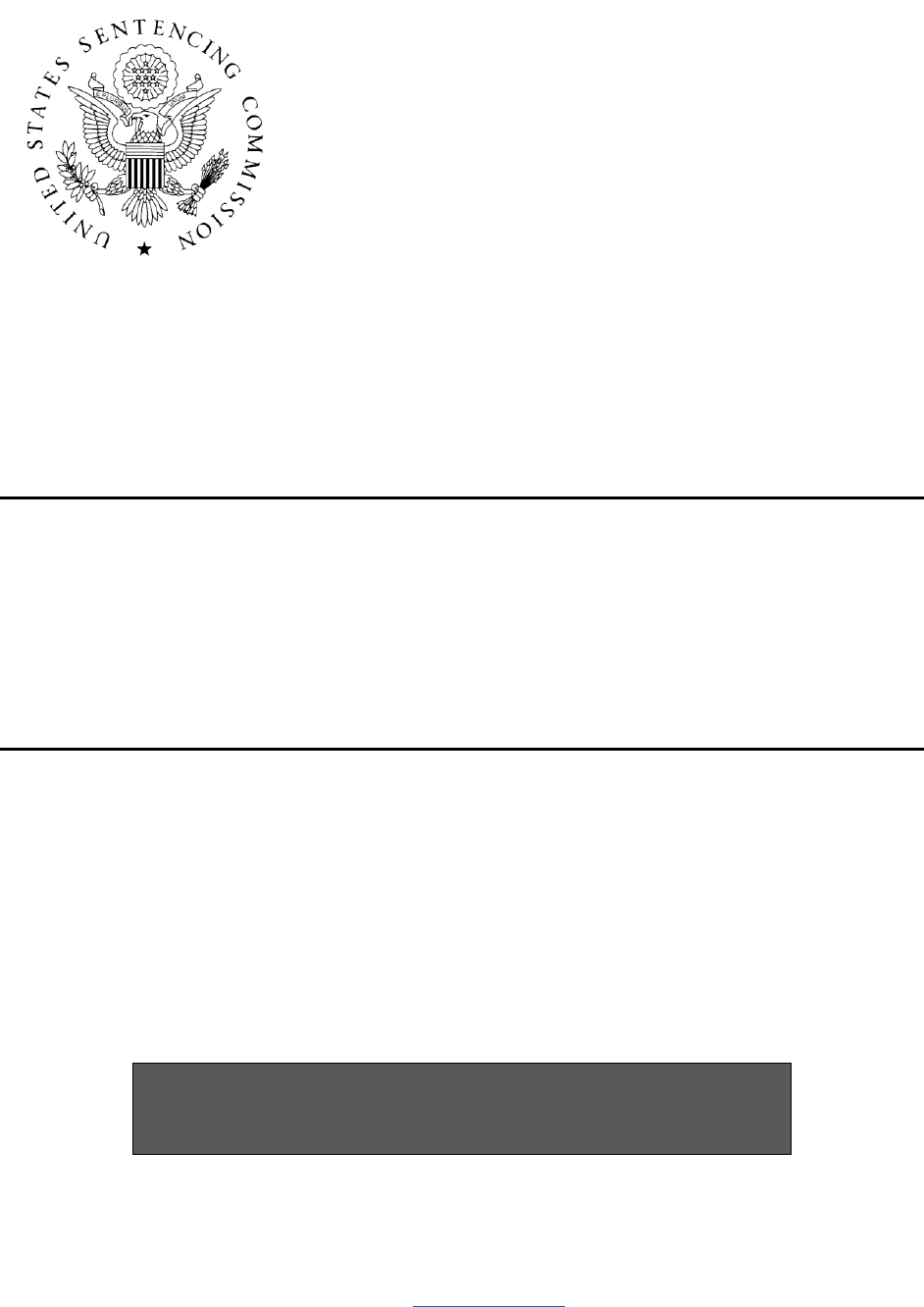
Amendments to the
Sentencing Guidelines
April 27, 2023
Effective Date
November 1, 2023
This compilation contains unofficial text of amendments to the sentencing guidelines,
policy statements, commentary, and Statutory Index submitted to Congress, and is
provided only for the convenience of the user. Official text of the amendments can be
found on the Commission’s website at www.ussc.gov and will appear in a forthcoming
edition of the Federal Register.

TABLE OF CONTENTS
AMENDMENT PAGE NO.
1. FIRST STEP ACT—REDUCTION IN TERM OF IMPRISONMENT UNDER
18 U.S.C. § 3582(c)(1)(A) ....................................................................................... 1
2. CRIME LEGISLATION............................................................................................... 14
3. SEXUAL ABUSE OFFENSES ...................................................................................... 30
4. FIRST STEP ACT—DRUG OFFENSES ......................................................................... 35
5. FAKE PILLS ............................................................................................................... 43
6. FIREARMS OFFENSES .............................................................................................. 57
7. CIRCUIT CONFLICTS ............................................................................................... 72
8. CRIMINAL HISTORY ................................................................................................ 77
9. CAREER OFFENDER ................................................................................................ 96
10. MISCELLANEOUS ............................................................................................... 102
11. TECHNICAL ........................................................................................................ 105
SUPPLEMENTARY INFORMATION
The United States Sentencing Commission is an independent agency in the judicial branch
of the United States Government. The Commission promulgates sentencing guidelines and
policy statements for federal sentencing courts pursuant to 28 U.S.C. § 994(a). The
Commission also periodically reviews and revises previously promulgated guidelines
pursuant to 28 U.S.C. § 994(o) and generally submits guideline amendments to the Congress
not later than the first day of May each year pursuant to 28 U.S.C. § 994(p). Absent action of
the Congress to the contrary, submitted amendments become effective by operation of law on
the date specified by the Commission (generally November 1 of the year in which the
amendments are submitted to Congress).
The Commission specified an effective date of November 1, 2023, for the amendments listed
above and included in this compilation.

April 27, 2023 | 1
2023 AMENDMENTS TO THE SENTENCING GUIDELINES,
POLICY STATEMENTS, AND OFFICIAL COMMENTARY
1. FIRST STEP ACT—REDUCTION IN TERM OF IMPRISONMENT UNDER
18 U.S.C. § 3582(c)(1)(A)
Reason for Amendment: This amendment responds to, among other things, the First Step
Act of 2018 (“First Step Act”), Pub. L. No. 115-391, § 603(b), 132 Stat. 5194, 5239, which
amended 18 U.S.C. § 3582(c)(1)(A) to authorize courts to grant a motion for a sentence
reduction upon a defendant’s own motion. Previously, a court was authorized to do so only
upon the motion of the Director of the Bureau of Prisons (“BOP”). Congress amended the
law for the express purpose, set forth on the face of the enactment, of “increasing the use” of
sentence reduction motions under section 3582(c)(1)(A). First Step Act § 603(b).
Section 3582(c)(1)(A) authorizes a court to reduce a defendant’s term of imprisonment if
“extraordinary and compelling reasons” warrant a reduction and “such a reduction is
consistent with applicable policy statements issued by the Sentencing Commission.”
Congress directed the Commission to “describe what should be considered extraordinary
and compelling reasons for sentence reduction, including the criteria to be applied and a list
of specific examples.” Sentencing Reform Act of 1984 (“SRA”), Pub. L. No. 98–473, 98 Stat.
1987, 2023 (codified at 28 U.S.C. § 994(t)). Congress also directed the Commission to
promulgate general policy statements regarding the appropriate use of section 3582(c).
28 U.S.C. § 994(a)(2)(C).
For more than 30 years, reductions pursuant to section 3582(c)(1)(A) could be granted only
upon the motion of the BOP. BOP filed such motions extremely rarely—the number of
defendants receiving relief averaged two dozen per year—and for the most part limited its
motions to cases involving inmates who were expected to die within a year or were
profoundly and irremediably incapacitated. U.S. Dep’t of Just., Off. of the Inspector Gen.,
The Federal Bureau of Prisons’ Compassionate Release Program, I-2013-006 1 & n.9 (2013).
Sentence reductions under section 3582(c)(1)(A) thus came to be known as “compassionate
release,” though that phrase appears nowhere in the SRA and sentence reductions that do
not result in immediate release are authorized by the law. BOP’s sparing use of its
authority persisted despite guidance from the Commission in 2007 that “extraordinary and
compelling reasons” can be based on (a) the medical condition of the defendant, (b) the age
of the defendant, (c) the defendant’s family circumstances, and (d) reasons other than, or in
combination with, those three specified ones. USSG App. C, amend. 698 (effective Nov. 1,
2007).
In 2018, the First Step Act put an end BOP’s gatekeeping function and allowed individuals
to file motions for sentence reductions under the statute. Because the Commission lost its
quorum in early 2019 and did not regain it until 2022, it was unable to amend §1B1.13
during the more than four-year period since defendants were first permitted to file such
motions. During those years, courts have found extraordinary and compelling reasons
warranting sentence reductions based on all of the factors the Commission identified in

First Step Act—Reduction in Term of Imprisonment Under 18 U.S.C. § 3582(c)(1)(A)
2 | April 27, 2023
2007, i.e., the three specified bases of medical condition, age, and family circumstances, and
the “other reasons” catchall. Commission data indicate courts have hewed to the
“extraordinary and compelling” requirement, see U.S.
SENT’G COMM’N, COMPASSIONATE
RELEASE DATA REPORT (Dec. 2022), at tbls. 10, 12, & 14, and while they have found such
circumstances to be present in more cases than BOP had before the First Step Act, they
have been judicious in granting relief.
Among other things, the amendment extends the applicability of the policy statement to
defendant-filed motions; expands the list of specified extraordinary and compelling reasons
that can warrant sentence reductions; retains the existing “other reasons” catchall;
provides specific guidance with regard to the permissible consideration of changes in the
law; and responds to case law that developed after the enactment of the First Step Act.
The amendment is informed by Commission data, including its analysis of the factors
identified by courts in granting sentence reduction motions in the years since the First Step
Act was signed into law. It is also informed by extensive public comment, including from
the Department of Justice, the Federal Public and Community Defenders, the
Commission’s advisory groups, law professors, currently and formerly incarcerated
individuals, and other stakeholders in the federal criminal justice system.
Applicability to Defendant-Filed Motions and Structural Revisions
The amendment revises §1B1.13(a) to reflect that a defendant is now authorized to file a
motion under 18 U.S.C. § 3582(c)(1)(A), making the policy statement applicable to both
defendant-filed and BOP-filed motions.
The amendment also makes two structural changes to §1B1.13. First, it moves the
description of the permissible bases for a reduction from the Commentary to the policy
statement itself.
Second, the amendment moves Application Notes 2 and 3 into the body of the policy
statement as new subsections (e) and (d). Application Note 3 previously provided that,
pursuant to 28 U.S.C. § 994(t), rehabilitation of a defendant is not, by itself, an
extraordinary and compelling reason for purposes of §1B1.13. New subsection (d) adopts
this same language but adds, consistent with the plain language of section 994(t) and
courts’ interpretations of it, that rehabilitation of the defendant while incarcerated may be
considered in combination with other circumstances in determining whether extraordinary
and compelling reasons warrant a sentence reduction. See U.S.
SENT’G COMM’N,
COMPASSIONATE RELEASE DATA REPORT (Dec. 2022), tbls. 10, 12 & 14 (showing that courts
have frequently considered rehabilitation in connection with other factors when granting
sentence reduction motions). Application Note 2 provided that “an extraordinary and
compelling reason need not have been unforeseen at the time of sentencing in order to
warrant a reduction in the term of imprisonment.” New subsection (e) retains this
instruction without change.

First Step Act—Reduction in Term of Imprisonment Under 18 U.S.C. § 3582(c)(1)(A)
April 27, 2023 | 3
Revisions to “Extraordinary and Compelling Reasons”
The amendment expands the list of specified extraordinary and compelling reasons and
retains the “other reasons” basis for a sentence reduction to better account for and reflect
the plain language of section 3582(c)(1)(A), its legislative history, and decisions by courts
made in the absence of a binding policy statement.
The list of specified “extraordinary and compelling reasons” is expanded by: (a) adding two
new subcategories to the “Medical Circumstances of the Defendant” ground for relief;
(b) making three modifications to the “Family Circumstances” ground; (c) adding a new
ground called “Victim of Abuse”; and (d) adding a new ground called “Unusually Long
Sentence,” which permits a judge to consider a non-retroactive change in sentencing law as
an extraordinary and compelling reason in specified circumstances.
The first of the two new subcategories under “Medical Circumstances of the Defendant”
applies when a defendant is “suffering from a medical condition that requires long-term or
specialized medical care that is not being provided” and who, without that care, “is at risk
of serious deterioration in health or death.” The second applies when a defendant, due to
personal health risk factors and custodial status, is at increased risk of suffering severe
medical complications or death as a result of exposure to an ongoing outbreak of infectious
disease or public health emergency. The amendment incorporates several factors courts
considered during the COVID-19 pandemic related to the defendant’s individual health
circumstances, the level of risk at the defendant’s facility, and the ability to adequately
mitigate the defendant’s individualized risk. The public health emergency prong requires
that the emergency be declared by the appropriate governmental authority. These new
subcategories reflect the medical circumstances not expressly identified in §1B1.13 that
were most often cited by courts in granting sentence reduction motions during the
pandemic. See U.S.
SENT’G COMM’N, COMPASSIONATE RELEASE DATA REPORT (Dec. 2022)
tbls. 10, 12 & 14.
The second modification to the list of specified extraordinary and compelling reasons
revises the “Family Circumstances” ground in three ways. First, it expands the existing
provision relating to the death or incapacitation of the caregiver of a defendant’s minor
child to include a child who is 18 years of age or older and incapable of self-care because of a
mental or physical disability or a medical condition. This expansion reflects the
Commission’s determination that providing care for a non-minor child with severe
caretaking needs presents a circumstance similar to providing care for a minor child, as
some courts have recognized. See, e.g., United States v. Barnes, No. 3:17-cr-00011, 2021 WL
1269783, at *4 (S.D. Ind. Jan. 29, 2021) (granting a sentence reduction to a defendant
whose 21-year-old son had numerous physical and mental disabilities that required 24-hour
care, finding these circumstances “to be analogous to a minor child”). Second, the
amendment adds a new provision for cases in which a defendant’s parent is incapacitated
and the defendant would be the only available caregiver. Other than the relationships
specified in the current policy statement, a parent has been the family member most often
identified as needing care by courts granting sentence reductions under § 3582(c)(1)(A).
See U.S.
SENT’G COMM’N, COMPASSIONATE RELEASE: THE IMPACT OF THE FIRST STEP ACT
AND COVID-19 PANDEMIC (2022), at 32; see also United States v. Bucci, 409 F. Supp. 3d 1, 2
(D. Mass. 2019) (concluding that there is “no reason to discount” a defendant’s caregiving

First Step Act—Reduction in Term of Imprisonment Under 18 U.S.C. § 3582(c)(1)(A)
4 | April 27, 2023
role “simply because the incapacitated family member is a parent and not a spouse,”
registered partner, or minor child). The third modification to the family circumstances
ground for relief adds a provision that applies when the defendant establishes that similar
circumstances exist with respect to a person whose relationship with the defendant is
similar in kind to that of an immediate family member, and the defendant would be the
only available caregiver. This provision recognizes the diversity of family structures in
America, and that caretaking needs within all of those family structures may give rise to
equally extraordinary and compelling circumstances. The amendment accords with
decisions by courts after the First Step Act. See, e.g., United States v. Griffin, No. 1:95-cr-
00751, 2020 WL 7295765, at *2–3 (S.D. Fla. Dec. 8, 2020) (granting release because the
defendant was “the only viable, adequate caregiver for his sister” who had significant
cognitive impairment due to vascular dementia and stroke); United States v. Reyes, No. 04-
cr-970, 2020 WL 1663129, at *3 (N.D. Ill. Apr. 3, 2020) (granting defendant relief to assist
in caring for his aunt with stage four cancer, recognizing “non-traditional family
arrangements and the need for others in the family to contribute when a relative is sick”).
Relief is available under this subsection only if the defendant establishes both the
qualifying relationship and that the defendant is the only available caregiver.
The third modification to the list of specified extraordinary and compelling reasons adds a
ground for relief at new subsection (b)(4) (“Victim of Abuse”), which applies if a defendant
has suffered sexual or physical abuse that was committed by or at the direction of a
correctional officer, an employee or contractor of the BOP, or any other individual having
custody or control over the defendant. This provision responds to the Department of
Justice’s (“DOJ”) suggestion that a sentence reduction may be appropriate where an
individual in BOP custody has been determined to have been the victim of sexual assault
perpetrated by BOP personnel. P
RINCIPAL ASSOC. DEPUTY ATT’Y GEN. WORKING GRP. OF
DOJ COMPONENTS, DEP’T OF JUST., REPORT AND RECOMMENDATIONS CONCERNING THE
DEPARTMENT OF JUSTICE’S RESPONSE TO SEXUAL MISCONDUCT BY EMPLOYEES OF THE
BUREAU OF PRISONS 22 (2022); see also STAFF OF PERMANENT S. SUBCOMM. ON
INVESTIGATIONS, 117
TH
CONG., REP. ON SEXUAL ABUSE OF FEMALE INMATES IN FEDERAL
PRISONS (Comm. Print 2022) (summarizing results of investigation into sexual abuse of
federal prisoners in BOP custody). New subsection (b)(4) is limited to instances in which the
defendant was a victim of either (a) sexual abuse involving a “sexual act,” as defined in
18 U.S.C. § 2246(2) (including the conduct described in 18 U.S.C. § 2246(2)(D) regardless of
the age of the victim); or (b) physical abuse resulting in “serious bodily injury,” as defined at
§1B1.1, while in custody serving the term of imprisonment sought to be reduced. New
subsection (b)(4) provides that the misconduct must be established by a conviction in a
criminal case, a finding or admission of liability in a civil case, or a finding in an
administrative proceeding, unless the defendant establishes that such proceedings are
unduly delayed or the defendant is in imminent danger.
Apart from the specified extraordinary and compelling reasons, the amendment retains the
“Other Reasons” catchall ground currently found in Application Note 1(D). It also makes
clear that extraordinary and compelling reasons exist if the defendant presents any other
circumstance or combination of circumstances that, considered by themselves or together
with any of the reasons specified in paragraphs (1) through (4), are similar in gravity to
those described in paragraphs (1) through (4). The Commission considered but specifically
rejected a requirement that “other reasons” be similar in nature and consequence to the

First Step Act—Reduction in Term of Imprisonment Under 18 U.S.C. § 3582(c)(1)(A)
April 27, 2023 | 5
specified reasons. Rather, they need be similar only in gravity, a requirement that inheres
in the statutory requirement that they present extraordinary and compelling reasons for a
sentence reduction. See 18 U.S.C. § 3582(c)(1)(A).
The Commission recognized that during the period between the enactment of the First Step
Act in 2018 and this amendment, district courts around the country based sentence
reductions on dozens of reasons and combinations of reasons. Based on a careful review of
those cases, the Commission continues to believe what is stated in Application Note 4 to the
current policy statement, i.e., that judges are “in a unique position to determine whether
the circumstances warrant a reduction.” Guidance beyond that provided in the amended
policy statement regarding what circumstances or combination of circumstances are
sufficiently extraordinary and compelling to warrant a reduction in sentence is best
provided by reviewing courts, rather than through an effort by the Commission to predict
and specify in advance all of the grounds on which relief may be appropriate.
The fifth modification to the list of specified extraordinary and compelling reasons appears
in new subsection (b)(6) (“Unusually Long Sentence”) and permits non-retroactive changes
in law (other than non-retroactive amendments to the Guidelines Manual) to be considered
extraordinary and compelling reasons warranting a sentence reduction, but only in
narrowly circumscribed circumstances. Specifically, where (a) the defendant is serving an
unusually long sentence; (b) the defendant has served at least ten years of the sentence;
and (c) an intervening change in the law has produced a gross disparity between the
sentence being served and the sentence likely to be imposed at the time the motion is filed,
the change in law can qualify as an extraordinary and compelling reason after the court has
fully considered the defendant’s individualized circumstances.
One of the expressed purposes of section 3582(c)(1)(A) when it was enacted in 1984 was to
provide a narrow avenue for judicial relief from unusually long sentences. S.
REP. NO. 98–
225 (1983). Having abolished parole in the interest of certainty in sentencing, Congress
recognized the need for such judicial authority. In effect, it replaced opaque Parole
Commission review of every federal sentence with a transparent, judicial authority to
consider reducing only a narrow subset of sentences—those presenting “extraordinary and
compelling” reasons for a reduction.
Subsections (b)(6) and (c) operate together to respond to a circuit split concerning when, if
ever, non-retroactive changes in law may be considered as extraordinary and compelling
reasons within the meaning of section 3582(c)(1)(A). Compare United States v. Ruvalcaba,
26 F.4th 14, 16, 26–28 (1st Cir. 2022) (holding that non-retroactive changes in sentencing
law may be considered in light of a defendant’s particular circumstances), United States v.
McCoy, 981 F.3d 271, 286–88 (4th Cir. 2020) (same), United States v. Chen, 48 F.4th 1092,
1098 (9th Cir. 2022) (same), and United States v. McGee, 992 F.3d 1035, 1047–48 (10th Cir.
2021) (same), with United States v. Andrews, 12 F.4th 255, 260–62 (3d Cir. 2021), cert.
denied, 142 S. Ct. 1446 (2022) (holding that non-retroactive changes in law are not
permissible considerations), United States v. McMaryion, 64 F.4th 257, 259–60 (5th Cir.
2023) (same), United States v. McCall, 56 F.4th 1048, 1061 (6th Cir. 2022) (en banc) (same),
United States v. King, 40 F.4th 594, 595 (7th Cir. 2022) (same), United States v. Crandall,
25 F.4th 582, 585–86 (8th Cir. 2022) (same), and United States v. Jenkins, 50 F.4th 1185,
1198, 1198 (D.C. Cir. 2022) (same).

First Step Act—Reduction in Term of Imprisonment Under 18 U.S.C. § 3582(c)(1)(A)
6 | April 27, 2023
The Commission considered whether the foregoing split among the circuit courts of appeals
was properly addressed by the Commission, which typically resolves such disagreements
when they relate to its guidelines or policy statements, see Braxton v. United States,
500 U.S. 344 (1991), or by the Supreme Court. In making that determination, the
Commission was influenced by the fact that on several occasions the Department of Justice
successfully opposed Supreme Court review of the issue on the ground that it should be
addressed first by the Commission. See, e.g., Brief For the United States in Opposition to
Grant of Certiorari, Jarvis v. United States, No. 21-568, 2021 WL 5864543 (U.S. Dec. 8,
2021); Memorandum For the United States in Opposition to Grant of Certiorari, Watford v.
United States, No. 21-551, 2021 WL 5983234 (U.S. Dec. 15, 2021); Memorandum For the
United States in Opposition to Grant of Certiorari, Williams v. United States, No. 21-767,
2022 WL 217947 (U.S. Jan. 24, 2022); Memorandum For the United States in Opposition to
Grant of Certiorari, Thacker v. United States, No. 21-877, 2022 WL 467984 (U.S. Feb. 14,
2022).
The amendment agrees with the circuits that authorize a district court to consider non-
retroactive changes in the law as extraordinary and compelling circumstances warranting a
sentence reduction but adopts a tailored approach that narrowly limits that principle in
multiple ways. First, it permits the consideration of such changes only in cases involving
“unusually long sentences,” which the legislative history to the SRA expressly identified as
a context in which sentence reduction authority is needed. See S.
REP. NO. 98–225, at 55
(1983), reprinted in 1984 U.S.C.C.A.N. 3182, 3238–39. (“The Committee believes that there
may be unusual cases in which the eventual reduction in the length of a term of
imprisonment is justified by changed circumstances. These would include cases of severe
illness, cases in which other extraordinary and compelling circumstances justify a reduction
of an unusually long sentence, and some cases in which the sentencing guidelines for the
offense of which the defender [sic] was convicted have been later amended to prove a
shorter term of imprisonment.”)). Second, the change in law itself may be considered an
extraordinary and compelling reason only where it would produce a gross disparity between
the length of the sentence being served and the sentence likely to be imposed at the time
the motion is filed. Finally, to address administrative concerns raised by some commenters,
the amendment limits the application of this provision to individuals who have served at
least 10 years of the sentence the motion seeks to reduce. Commission data show that
between fiscal year 2013 and fiscal year 2022, fewer than 12 percent (11.5%) of all offenders
were sentenced to a term of imprisonment of ten years or longer.
Subsection (b)(6) excludes from consideration as extraordinary and compelling reasons
warranting a reduction in sentence changes to the Guidelines Manual that the Commission
has not made retroactive. Public comment requested that the Commission clarify the
interaction between §1B1.13 and §1B1.10, and the Commission determined that excluding
non-retroactive changes to the guidelines from consideration as extraordinary and
compelling reasons was consistent with §1B1.10 and the Supreme Court’s decision in
Dillon v. United States, 560 U.S. 817 (2010).
To more fully address the proper role of changes in law in this context, the amendment also
adds a new subsection (c) to the policy statement. Whereas subsection (b)(6) narrowly limits
the circumstances in which a non-retroactive change in the law can constitute an

First Step Act—Reduction in Term of Imprisonment Under 18 U.S.C. § 3582(c)(1)(A)
April 27, 2023 | 7
extraordinary and compelling reason that itself can warrant a reduction in sentence,
subsection (c) of the amended policy statement governs the use of changes in the law in
cases where a defendant “otherwise establishes that extraordinary and compelling reasons
warrant a sentence reduction.” In those circumstances, all changes in law, including non-
retroactive amendments to the Guidelines Manual, may properly be considered in
determining the extent of a sentencing reduction. For example, a defendant’s motion may
present the following circumstances: (a) commendable rehabilitation while incarcerated;
(b) the offense conduct occurred when the defendant was in his late teens or early twenties;
and (c) pursuant to intervening legislation or intervening Guidelines amendments, the
sentence likely to be imposed at the time of the motion would be lower than the sentence
being served, but not grossly so. In those circumstances, the change in law could not
properly be considered an extraordinary and compelling reason warranting a reduction in
sentence. However, if the court determines that the combination of the other two factors
constitutes an extraordinary and compelling reason, the change in law is among the broad
array of factors that may properly be considered in determining the extent of any such
reduction. This aspect of the amendment is fully consistent with Concepcion v. United
States, 142 S. Ct. 2389 (2022).
Finally, the requirements in subsection (b)(6) that the defendant be serving an unusually
long sentence and have served at least ten years of such sentence are not applicable to
cases not covered by that subsection. Those requirements apply only when a defendant
seeks to have a non-retroactive change in law itself be considered an extraordinary and
compelling reason warranting a reduction in sentence.
New Application Notes Regarding Interaction with 18 U.S.C. § 3622 and Notification
of Victims
The amendment also adds two new application notes to the Commentary to §1B1.13. New
Application Note 1 provides that a reduction under this policy statement is not appropriate
when temporary release under 18 U.S.C. § 3622 (a furlough granted by the Bureau of
Prisons) “adequately addresses” the defendant’s circumstances. This new application note
responds to public comment, including comment from the Criminal Law Committee for the
Judicial Conference of the United States, urging the Commission to clarify that this policy
statement is not intended to address temporary medical or family circumstances that a
BOP-granted furlough adequately addresses.
New Application Note 2 “encourages the court to make its best effort to ensure that any
victim of the offense is reasonably, accurately, and timely notified, and provided, to the
extent practicable, with an opportunity to be reasonably heard, unless any such victim
previously requested not to be notified.” Although § 3582(c)(1)(A) does not require a court to
conduct a public court proceeding before resolving a motion, and in many cases the passage
of time can make victim identification and notification difficult, the Commission encourages
the court to make its best effort to notify any victims and, to the extent public court
proceedings are held, afford them an opportunity to be heard, unless the victim previously
requested not to be notified.

First Step Act—Reduction in Term of Imprisonment Under 18 U.S.C. § 3582(c)(1)(A)
8 | April 27, 2023
Conforming Changes
Finally, as conforming changes, the amendment deletes Application Notes 4 and 5 and
makes a minor technical change to the Background Commentary. Application Note 4
reflected that only the Bureau of Prisons could file a motion under 18 U.S.C. § 3582(c)(1)(A)
before the First Step Act and, as such, “encourage[d] the Director of the Bureau of Prisons
to file such a motion.” Application Note 5 provided that “[a]ny reduction made pursuant to a
motion by the Director of the Bureau of Prisons for the reasons set forth in subdivisions (1)
and (2) is consistent with this policy statement.” These two application notes were deleted
because a motion by the Director of the Bureau of Prisons is no longer required after the
enactment of the First Step Act. The Background Commentary is also amended to reflect
that the Commission is “required,” as opposed to “authorized,” to “describe what should be
considered extraordinary and compelling reasons for sentence reduction.”
Amendment:
§1B1.13. Reduction in Term of Imprisonment Under 18 U.S.C. § 3582(c)(1)(A) (Policy
Statement)
(a) IN GENERAL.—Upon motion of the Director of the Bureau of Prisons or the defendant
underpursuant to 18 U.S.C. § 3582(c)(1)(A), the court may reduce a term of
imprisonment (and may impose a term of supervised release with or without
conditions that does not exceed the unserved portion of the original term of
imprisonment) if, after considering the factors set forth in 18 U.S.C. § 3553(a), to
the extent that they are applicable, the court determines that—
(1) (A) extraordinary and compelling reasons warrant the reduction; or
(B) the defendant (i) is at least 70 years old; and (ii) has served at least
30 years in prison pursuant to a sentence imposed under 18 U.S.C.
§ 3559(c) for the offense or offenses for which the defendant is imprisoned;
(2) the defendant is not a danger to the safety of any other person or to the
community, as provided in 18 U.S.C. § 3142(g); and
(3) the reduction is consistent with this policy statement.
(b) EXTRAORDINARY AND COMPELLING REASONS.—Extraordinary and compelling reasons
exist under any of the following circumstances or a combination thereof:
(1) MEDICAL CIRCUMSTANCES OF THE DEFENDANT.—
(A) {The defendant is suffering from a terminal illness (i.e., a serious and
advanced illness with an end of lifeend-of-life trajectory). A specific
prognosis of life expectancy (i.e., a probability of death within a specific

First Step Act—Reduction in Term of Imprisonment Under 18 U.S.C. § 3582(c)(1)(A)
April 27, 2023 | 9
time period) is not required. Examples include metastatic solid-tumor
cancer, amyotrophic lateral sclerosis (ALS), end-stage organ disease, and
advanced dementia.}*
(B) {The defendant is—
(i) suffering from a serious physical or medical condition,
(ii) suffering from a serious functional or cognitive impairment, or
(iii) experiencing deteriorating physical or mental health because of the
aging process,
that substantially diminishes the ability of the defendant to provide self-
care within the environment of a correctional facility and from which he
or she is not expected to recover.}*
(C) The defendant is suffering from a medical condition that requires long-
term or specialized medical care that is not being provided and without
which the defendant is at risk of serious deterioration in health or death.
(D) The defendant presents the following circumstances—
(i) the defendant is housed at a correctional facility affected or at
imminent risk of being affected by (I) an ongoing outbreak of
infectious disease, or (II) an ongoing public health emergency
declared by the appropriate federal, state, or local authority;
(ii) due to personal health risk factors and custodial status, the
defendant is at increased risk of suffering severe medical
complications or death as a result of exposure to the ongoing
outbreak of infectious disease or the ongoing public health
emergency described in clause (i); and
(iii) such risk cannot be adequately mitigated in a timely manner.
(2) {AGE OF THE DEFENDANT.—The defendant (A) is at least 65 years old; (B) is
experiencing a serious deterioration in physical or mental health because of
the aging process; and (C) has served at least 10 years or 75 percent of his or
her term of imprisonment, whichever is less.}*
(3) FAMILY CIRCUMSTANCES OF THE DEFENDANT.—
* The text in braces currently appears in the Commentary to §1B1.13. The amendment places
the text here.

First Step Act—Reduction in Term of Imprisonment Under 18 U.S.C. § 3582(c)(1)(A)
10 | April 27, 2023
(A) {The death or incapacitation of the caregiver of the defendant’s minor
child or minor childrenthe defendant’s child who is 18 years of age or older
and incapable of self-care because of a mental or physical disability or a
medical condition.}**
(B) {The incapacitation of the defendant’s spouse or registered partner when
the defendant would be the only available caregiver for the spouse or
registered partner.}
*
(C) The incapacitation of the defendant’s parent when the defendant would
be the only available caregiver for the parent.
(D) The defendant establishes that circumstances similar to those listed in
paragraphs (3)(A) through (3)(C) exist involving any other immediate
family member or an individual whose relationship with the defendant is
similar in kind to that of an immediate family member, when the
defendant would be the only available caregiver for such family member
or individual. For purposes of this provision, “immediate family
member” refers to any of the individuals listed in paragraphs (3)(A)
through (3)(C) as well as a grandchild, grandparent, or sibling of the
defendant.
(4) VICTIM OF ABUSE.—The defendant, while in custody serving the term of
imprisonment sought to be reduced, was a victim of:
(A) sexual abuse involving a “sexual act,” as defined in 18 U.S.C. § 2246(2)
(including the conduct described in 18 U.S.C. § 2246(2)(D) regardless of
the age of the victim); or
(B) physical abuse resulting in “serious bodily injury,” as defined in the
Commentary to §1B1.1 (Application Instructions);
that was committed by, or at the direction of, a correctional officer, an employee
or contractor of the Bureau of Prisons, or any other individual who had custody
or control over the defendant.
For purposes of this provision, the misconduct must be established by a
conviction in a criminal case, a finding or admission of liability in a civil case,
or a finding in an administrative proceeding, unless such proceedings are
unduly delayed or the defendant is in imminent danger.
* The text in braces currently appears in the Commentary to §1B1.13. The amendment places
the text here.
** The text in braces currently appears in the Commentary to §1B1.13 The amendment places
the text here with the changes shown in revision marks.

First Step Act—Reduction in Term of Imprisonment Under 18 U.S.C. § 3582(c)(1)(A)
April 27, 2023 | 11
(5) OTHER REASONS.—The defendant presents any other circumstance or
combination of circumstances that, when considered by themselves or together
with any of the reasons described in paragraphs (1) through (4), are similar in
gravity to those described in paragraphs (1) through (4).
(6) UNUSUALLY LONG SENTENCE.—If a defendant received an unusually long
sentence and has served at least 10 years of the term of imprisonment, a
change in the law (other than an amendment to the Guidelines Manual that
has not been made retroactive) may be considered in determining whether the
defendant presents an extraordinary and compelling reason, but only where
such change would produce a gross disparity between the sentence being
served and the sentence likely to be imposed at the time the motion is filed,
and after full consideration of the defendant’s individualized circumstances.
(c) LIMITATION ON CHANGES IN LAW.—Except as provided in subsection (b)(6), a change
in the law (including an amendment to the Guidelines Manual that has not been
made retroactive) shall not be considered for purposes of determining whether an
extraordinary and compelling reason exists under this policy statement. However,
if a defendant otherwise establishes that extraordinary and compelling reasons
warrant a sentence reduction under this policy statement, a change in the law
(including an amendment to the Guidelines Manual that has not been made
retroactive) may be considered for purposes of determining the extent of any such
reduction.
(d) {REHABILITATION OF THE DEFENDANT.—Pursuant to 28 U.S.C. § 994(t),
rehabilitation of the defendant is not, by itself, an extraordinary and compelling
reason for purposes of this policy statement. However, rehabilitation of the
defendant while serving the sentence may be considered in combination with other
circumstances in determining whether and to what extent a reduction in the
defendant’s term of imprisonment is warranted.}**
(e) {FORESEEABILITY OF EXTRAORDINARY AND COMPELLING REASONS.—For purposes of
this policy statement, an extraordinary and compelling reason need not have been
unforeseen at the time of sentencing in order to warrant a reduction in the term of
imprisonment. Therefore, the fact that an extraordinary and compelling reason
reasonably could have been known or anticipated by the sentencing court does not
preclude consideration for a reduction under this policy statement.}
*
* The text in braces currently appears in the Commentary to §1B1.13. The amendment places
the text here.
** The text in braces currently appears in the Commentary to §1B1.13 The amendment places
the text here with the changes shown in revision marks.
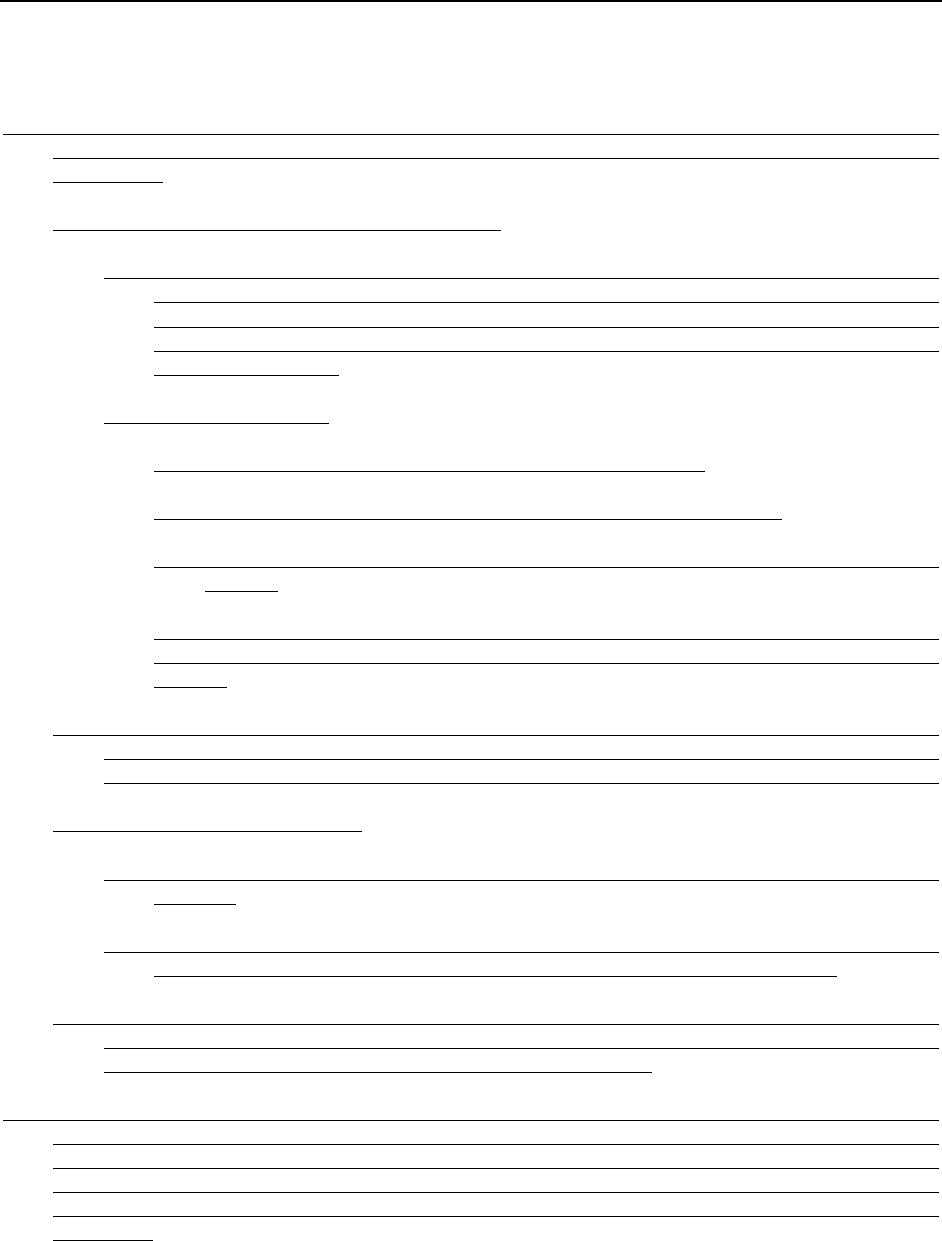
First Step Act—Reduction in Term of Imprisonment Under 18 U.S.C. § 3582(c)(1)(A)
12 | April 27, 2023
Commentary
Application Notes:
1. Extraordinary and Compelling Reasons.—Provided the defendant meets the requirements
of subdivision (2), extraordinary and compelling reasons exist under any of the circumstances set
forth below:
(A) Medical Condition of the Defendant.—
(i) The defendant is suffering from a terminal illness (i.e., a serious and advanced illness
with an end of life trajectory). A specific prognosis of life expectancy (i.e., a probability
of death within a specific time period) is not required. Examples include metastatic
solid-tumor cancer, amyotrophic lateral sclerosis (ALS), end-stage organ disease, and
advanced dementia.
(ii) The defendant is—
(I) suffering from a serious physical or medical condition,
(II) suffering from a serious functional or cognitive impairment, or
(III) experiencing deteriorating physical or mental health because of the aging
process,
that substantially diminishes the ability of the defendant to provide self-care within
the environment of a correctional facility and from which he or she is not expected to
recover.
(B) Age of the Defendant.—The defendant (i) is at least 65 years old; (ii) is experiencing a
serious deterioration in physical or mental health because of the aging process; and (iii) has
served at least 10 years or 75 percent of his or her term of imprisonment, whichever is less.
(C) Family Circumstances.—
(i) The death or incapacitation of the caregiver of the defendant’s minor child or minor
children.
(ii) The incapacitation of the defendant’s spouse or registered partner when the defendant
would be the only available caregiver for the spouse or registered partner.
(D) Other Reasons.—As determined by the Director of the Bureau of Prisons, there exists in
the defendant’s case an extraordinary and compelling reason other than, or in combination
with, the reasons described in subdivisions (A) through (C).
2. Foreseeability of Extraordinary and Compelling Reasons.—For purposes of this policy
statement, an extraordinary and compelling reason need not have been unforeseen at the time
of sentencing in order to warrant a reduction in the term of imprisonment. Therefore, the fact
that an extraordinary and compelling reason reasonably could have been known or anticipated
by the sentencing court does not preclude consideration for a reduction under this policy
statement.
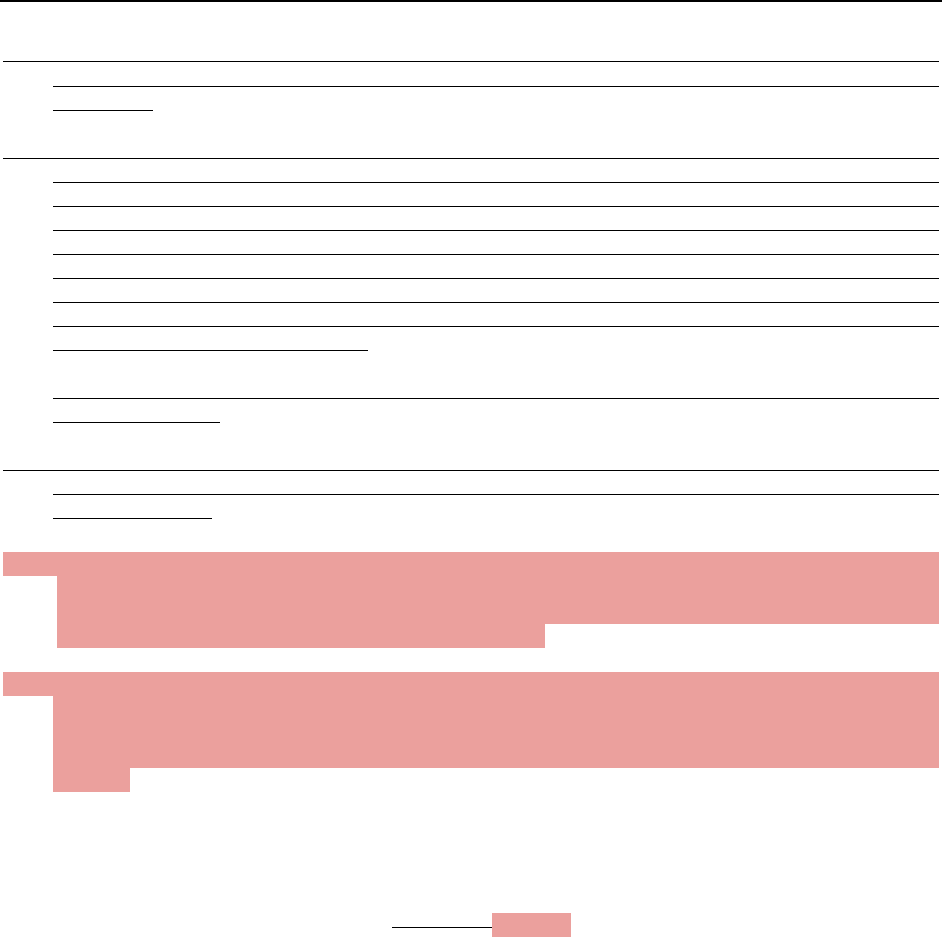
First Step Act—Reduction in Term of Imprisonment Under 18 U.S.C. § 3582(c)(1)(A)
April 27, 2023 | 13
3. Rehabilitation of the Defendant.—Pursuant to 28 U.S.C. § 994(t), rehabilitation of the
defendant is not, by itself, an extraordinary and compelling reason for purposes of this policy
statement.
4. Motion by the Director of the Bureau of Prisons.—A reduction under this policy statement
may be granted only upon motion by the Director of the Bureau of Prisons pursuant to 18 U.S.C.
§ 3582(c)(1)(A). The Commission encourages the Director of the Bureau of Prisons to file such a
motion if the defendant meets any of the circumstances set forth in Application Note 1. The court
is in a unique position to determine whether the circumstances warrant a reduction (and, if so,
the amount of reduction), after considering the factors set forth in 18 U.S.C. § 3553(a) and the
criteria set forth in this policy statement, such as the defendant’s medical condition, the
defendant’s family circumstances, and whether the defendant is a danger to the safety of any
other person or to the community.
This policy statement shall not be construed to confer upon the defendant any right not otherwise
recognized in law.
5. Application of Subdivision (3).—Any reduction made pursuant to a motion by the Director of
the Bureau of Prisons for the reasons set forth in subdivisions (1) and (2) is consistent with this
policy statement.
1. Interaction with Temporary Release from Custody Under 18 U.S.C. § 3622
(“Furlough”).—A reduction of a defendant’s term of imprisonment under this policy statement
is not appropriate when releasing the defendant under 18 U.S.C. § 3622 for a limited time
adequately addresses the defendant’s circumstances.
2. Notification of Victims.—Before granting a motion pursuant to 18 U.S.C. § 3582(c)(1)(A), the
Commission encourages the court to make its best effort to ensure that any victim of the offense
is reasonably, accurately, and timely notified, and provided, to the extent practicable, with an
opportunity to be reasonably heard, unless any such victim previously requested not to be
notified.
Background: The Commission is required by 28 U.S.C. § 994(a)(2) to develop general policy
statements regarding application of the guidelines or other aspects of sentencing that in the view of
the Commission would further the purposes of sentencing (18 U.S.C. § 3553(a)(2)), including, among
other things, the appropriate use of the sentence modification provisions set forth in 18 U.S.C.
§ 3582(c). In doing so, the Commission is authorizedrequired by 28 U.S.C. § 994(t) to “describe what
should be considered extraordinary and compelling reasons for sentence reduction, including the
criteria to be applied and a list of specific examples.” This policy statement implements 28 U.S.C.
§ 994(a)(2) and (t).
* * *
14 | April 27, 2023
2. CRIME LEGISLATION
Reason for Amendment: This multi-part amendment responds to recently enacted
legislation.
FDA Reauthorization Act of 2017
First, the amendment amends Appendix A (Statutory Index) to reference a new offense for
counterfeit drugs at 21 U.S.C. § 333(b)(8) (Penalties [for violations of the Federal Food,
Drug, and Cosmetic Act (FDCA)]) to §2N2.1 (Violations of Statutes and Regulations Dealing
With Any Food, Drug, Biological Product, Device, Cosmetic, Agricultural Product, or
Consumer Product) in response to the FDA Reauthorization Act of 2017, Pub. L. 115–52
(Aug. 18, 2017). The Act added subsection 333(b)(8), which provides that the statutory
maximum term of imprisonment is ten years for a violation of 21 U.S.C. § 331(i)(3)
(Prohibited acts [under the FDCA]). Subsection 331(i)(3) prohibits causing a drug to be
counterfeited, or making, selling, dispensing, or holding for sale or dispensing, a counterfeit
drug. The Commission determined that §2N2.1 is the most appropriate guideline to which
to reference this offense because §2N2.1 covers similar penalty provisions at section 333.
Allow States and Victims to Fight Online Sex Trafficking Act
Second, the amendment amends §§2G1.1 (Promoting a Commercial Sex Act or Prohibiting
Sexual Conduct with an Individual Other than a Minor) and 2G1.3 (Promoting a
Commercial Sex Act or Prohibited Sexual Conduct with a Minor; Transportation of Minors
to Engage in a Commercial Sex Act or Prohibited Sexual Conduct; Travel to Engage in
Commercial Sex Act or Prohibited Sexual Conduct with a Minor; Sex Trafficking of
Children; Use of Interstate Facilities to Transport Information about a Minor) in response
to the Allow States and Victims to Fight Online Sex Trafficking Act of 2017, Pub. L. 115–
164 (Apr. 11, 2017). The Act added a new offense at 18 U.S.C. § 2421A(a) (Promotion or
facilitation of prostitution and reckless disregard of sex trafficking) which prohibits owning,
managing, or operating an interactive computer service with the intent to promote or
facilitate prostitution. Section 2421A has a statutory maximum term of imprisonment of
ten years. The Act included an aggravated offense at subsection 2421A(b)(2) if the offender
commits an offense under subsection 2421A(a) while acting in reckless disregard of the fact
that such conduct contributed to sex trafficking in violation of 18 U.S.C. § 1591(a) (Sex
trafficking of children or by force, fraud, or coercion). Offenses under section 1591(a) that
involve force, fraud, coercion, or minors have statutory mandatory minimum terms of
imprisonment of at least ten years and statutory maximum terms of imprisonment of life.
Offenses under subsection 2421A(b)(2) have a 25-year statutory maximum term of
imprisonment to reflect the serious nature of the sex trafficking conduct in violation of
section 1591(a). To reflect the statutory maximum term of imprisonment at
subsection 2421A(b)(2), the amendment amends the 4-level enhancement at §2G1.1(b)(1)(B)
and adds a new 4-level enhancement at §2G1.3(b)(4)(B) that apply if the offense of
conviction is 18 U.S.C. § 2421A(b)(2). The amendment also amends §2G1.3(b)(3) to provide
that §2G1.3(b)(3)(B) shall not apply if the offense of conviction is 18 U.S.C. § 2421A because
the use of a computer is already accounted for in the base offense level.

Crime Legislation
April 27, 2023 | 15
FAA Reauthorization Act of 2018
Third, the amendment amends Appendix A to reference new offenses in the FAA
Reauthorization Act of 2018, Pub. L. 115–254 (Oct. 5, 2018). The new offense at 18 U.S.C.
§ 39B (Unsafe operation of unmanned aircraft) is referenced to §2A5.2 (Interference with
Flight Crew Member or Flight Attendant; Interference with Dispatch, Navigation,
Operation, or Maintenance of Mass Transportation Vehicle) and §2X5.2 (Class A
Misdemeanors (Not Covered by Another Specific Offense Guideline)). Section 39B prohibits
the knowing or reckless unsafe operation of drones that interfere with the safe operation of
an aircraft carrying one or more persons or operated in close proximity to an airport
runway. Section 39B has a statutory maximum term of imprisonment of one year. The
statutory maximum term of imprisonment for reckless violations that cause serious bodily
injury or death is ten years, and for knowing violations that cause serious bodily injury or
death is any term of years or life. The Commission determined that §2A5.2 is the most
appropriate guideline to which to reference felony violations of section 39B because it covers
conduct interfering with the operation of aircraft. Additionally, providing a reference to
§2X5.2 is consistent with Commission practice relating to new misdemeanor offenses.
The FAA Reauthorization Act also added a new offense at 18 U.S.C. § 40A (Operation of
unauthorized unmanned aircraft over wildfires) which is referenced in Appendix A to
§2A2.4 (Obstructing or Impeding Officers). Section 40A prohibits operating a drone in a
manner that interferes with wildfire suppression or with law enforcement or emergency
response efforts related to wildfire suppression. Section 40A has a statutory maximum term
of imprisonment of two years. The Commission determined that §2A2.4 is the most
appropriate guideline to which to reference this offense because it covers conduct involving
interfering with and obstructing or impeding officers.
SUPPORT for Patients and Communities Act
Fourth, the amendment amends Appendix A to reference a new offense at 18 U.S.C. § 220
(Illegal remunerations for referrals to recovery homes, clinical treatment facilities, and
laboratories) to §§2B1.1 (Theft, Property Destruction, and Fraud) and 2B4.1 (Bribery in
Procurement of Bank Loan and Other Commercial Bribery) in response to the Substance
Use-Disorder Prevention that Promotes Opioid Recovery and Treatment for Patients and
Communities Act (“the SUPPORT for Patients and Communities Act”), Pub. L. 115–271
(Oct. 24, 2018). Section 220 prohibits soliciting, receiving, paying, or offering any
remuneration, including kickbacks, bribes, or rebates, for referring patients to a facility
covered by a health care benefit program. Section 220 has a statutory maximum term of
imprisonment of ten years. The Commission determined that §§2B1.1 and 2B4.1 are the
most appropriate guidelines to which to reference this offense because both guidelines cover
conduct involving kickbacks and bribery.
Amy, Vicky, and Andy Child Pornography Victim Assistance Act
Fifth, the amendment amends Appendix A to reference a new offense at 18 U.S.C. § 2259(d)
(Mandatory restitution [for child pornography victims]) to §2X5.2 in response to the Amy,
Vicky, and Andy Child Pornography Victim Assistance Act, Pub. L. 115–299 (Dec. 7, 2018).
Subsection 2259(d) prohibits attorneys from charging fees in excess of 15 percent when
representing a child pornography victim who receives “defined monetary assistance” from

Crime Legislation
16 | April 27, 2023
the Child Pornography Victims Reserve and provides for a statutory maximum term of
imprisonment of one year. Providing a reference to §2X5.2 is consistent with Commission
practice relating to new misdemeanor offenses.
Foundations for Evidence-Based Policymaking Act
Sixth, the amendment amends Appendix A to reference a new offense at 44 U.S.C. § 3572
(Confidential information protection) to §2H3.1 (Interception of Communications;
Eavesdropping; Disclosure of Certain Private or Protected Information) in response to the
Confidential Information Protection and Statistical Efficiency Act, part of the Foundations
for Evidence-Based Policymaking Act of 2018, Pub. L. 115–435 (Jan. 14, 2019). Section 3572
prohibits the unauthorized disclosure of information collected by an agency under a pledge
of confidentiality for exclusively statistical purposes or using the information for other than
statistical purposes. Section 3572 has a statutory maximum term of imprisonment of five
years. The Commission determined that §2H3.1 is the most appropriate guideline to which
to reference this offense because it covers conduct involving the unauthorized disclosure of
information.
National Defense Authorization Act for Fiscal Year 2020
Seventh, the amendment amends Appendix A to reference a new offense at 10 U.S.C.
§ 2733a (Armed Forces; Medical malpractice claims by members of the uniformed services)
to §2X5.2 in response to the National Defense Authorization Act for Fiscal Year 2020,
Pub. L. 116–92 (Dec. 20, 2019). Section 2733a prohibits attorneys from charging fees in
excess of 20 percent when representing a member of the uniformed services who receives a
payment under section 2733a for medical malpractice caused by a health care provider of
the Department of Defense. Section 2733a has a statutory maximum term of imprisonment
of one year. Providing a reference to §2X5.2 is consistent with Commission practice relating
to new misdemeanor offenses.
Representative Payee Fraud Prevention Act
Eighth, the amendment amends Appendix A to reference two new offenses at 5 U.S.C.
§§ 8345a (Government Organization and Employees; Embezzlement or conversion of
payments) and 8466a (Embezzlement or conversion of payments) to §2B1.1 in response to
the Representative Payee Fraud Prevention Act of 2019, Pub. L. 116–126 (Mar. 18, 2020).
Sections 8345a and 8466a prohibit representative payees of minors or other individuals
under a legal disability from embezzling or converting retirement payments under the Civil
Service Retirement System or the Federal Employees’ Retirement System. The statutory
maximum term of imprisonment for both sections is five years. The Commission
determined that §2B1.1 is the most appropriate guideline to which to reference these
offenses because it covers conduct involving similar financial fraud.
Stop Student Debt Relief Scams Act
Ninth, the amendment amends Appendix A to reference a new offense at 20 U.S.C.
§ 1097(e) (Education; Student Assistance Programs; Criminal penalties) to §2B1.1 in
response to the Stop Student Debt Relief Scams Act of 2019, Pub. L. 116–251 (Dec. 22,
2020). Subsection 1097(e) prohibits the unauthorized use of an access device relating to

Crime Legislation
April 27, 2023 | 17
student assistance programs issued to another or obtained by fraud to access the
information technology systems of the Department of Education for commercial advantage
or private financial gain. Subsection 1097(e) has a statutory maximum term of
imprisonment of five years. The Commission determined that §2B1.1 is the most
appropriate guideline to which to reference this offense because §2B1.1 covers other section
1097 offenses prohibiting embezzlement, fraud and false statements involved in student
assistance programs.
Protecting Lawful Streaming Act
Tenth, the amendment amends Appendix A to reference a new offense at 18 U.S.C. § 2319C
(Illicit digital transmission services) to §2B5.3 (Criminal Infringement of Copyright or
Trademark) in response to the Protecting Lawful Streaming Act, part of the 2021
Consolidated Appropriations Act, Pub. L. 116–260 (Dec. 27, 2020). Section 2319C prohibits
publicly offering or providing digital transmission services designed to provide the
unauthorized transmission of copyrighted works, including pre-release works being
prepared for commercial public performance, and provides for a statutory maximum term of
imprisonment of three years. The statutory maximum term of imprisonment is five years if
the offense involved one or more pre-release works, and for a second or subsequent violation
of section 2319C, the statutory maximum term of imprisonment is ten years. The
Commission determined that §2B5.3 is the most appropriate guideline to which to reference
this offense because it covers conduct involving criminal copyright infringement including
pre-release works.
William M. (Mac) Thornberry National Defense Authorization Act for Fiscal
Year 2021
Eleventh, the amendment amends Appendix A to reference multiple new offenses at
31 U.S.C. §§ 5335 (Money and Finance; Concealment of source of assets in monetary
transactions) and 5336 (Beneficial ownership information reporting requirements) to
§2S1.3 (Structuring Transactions to Evade Reporting Requirement; Failure to Report Cash
or Monetary Transactions; Failure to File Currency and Monetary Instruments Report) in
response to the William M. (Mac) Thornberry National Defense Authorization Act for Fiscal
Year 2021, Pub. L. 116–283 (Jan. 1, 2021).
Subsection 5335(b) prohibits concealing, falsifying, or misrepresenting a material fact from
a financial institution about the ownership or control of certain assets over $1,000,000 if the
person or entity controlling the assets is a certain foreign figure or associate.
Subsection 5335(c) prohibits concealing, falsifying, or misrepresenting a material fact, to or
from a financial institution, about the source of funds in monetary transactions involving
“primary money laundering concerns” and that violate the prohibitions prescribed in
section 5318A(b)(5). Both subsections 5335(b) and 5335(c) have a statutory maximum term
of imprisonment of ten years.
Subsection 5336(h)(1) prohibits willfully providing false or fraudulent beneficial ownership
information to the Department of the Treasury’s Financial Crimes Enforcement Network
(“FinCEN”) in accordance with the reporting requirements in subsection 5336(b).
Subsection 5336(h)(1) has a statutory maximum term of imprisonment of two years.
Subsection 5336(c)(4) prohibits employees and officers of any requesting agency from
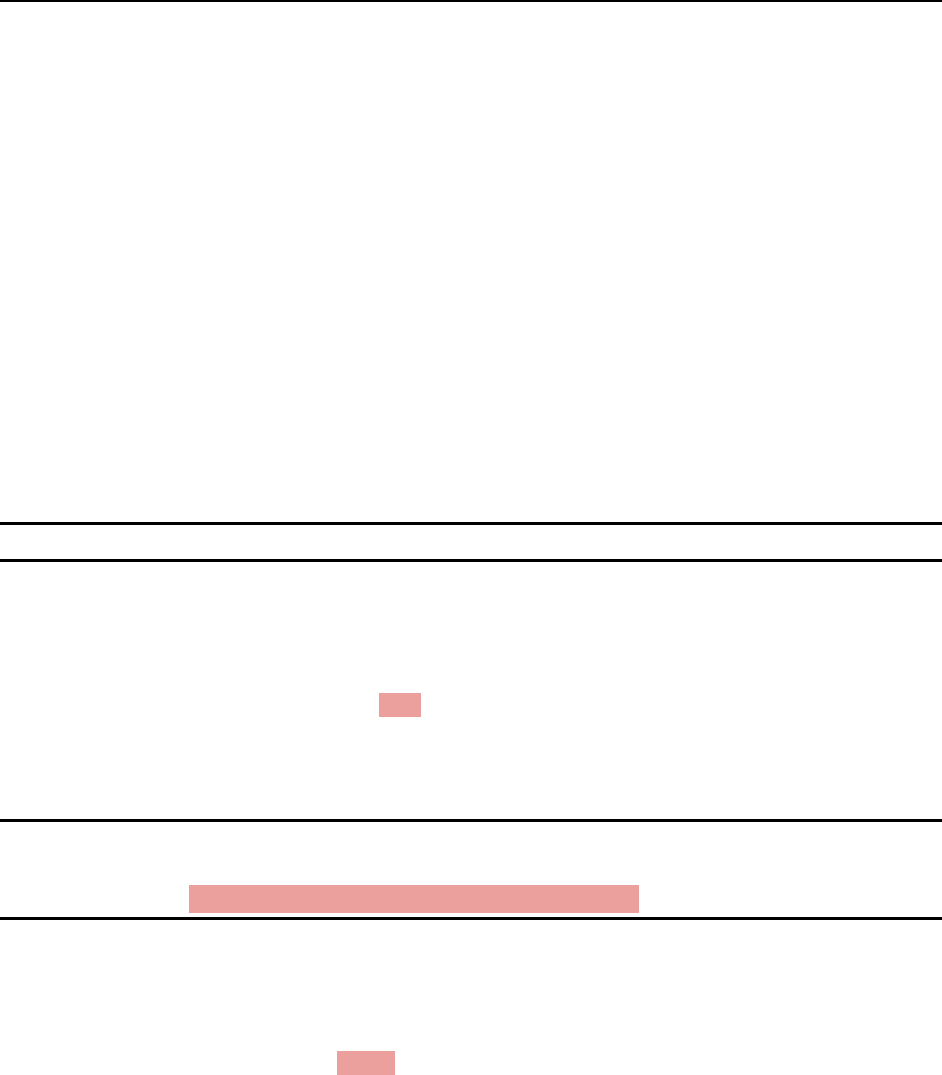
Crime Legislation
18 | April 27, 2023
violating the protocols established by the Secretary of the Treasury or the unauthorized
disclosure or use of the beneficial ownership information submitted to FinCEN.
Subsection 5336(h)(2) prohibits any person from knowingly disclosing or using beneficial
ownership information obtained through a report submitted to, or through a disclosure
made by, FinCEN, without authorization. Both subsections 5336(c)(4) and 5336(h)(2) have a
statutory maximum term of imprisonment of five years. The statutory maximum term of
imprisonment for a violation of subsection 5336(c)(4) or 5336(h)(2) is ten years if the offense
was committed while violating another law of the United States or as part of a pattern of
certain unlawful activities.
The Commission determined that §2S1.3 is the most appropriate guideline to which to
reference these new offenses because it covers similar conduct involving structuring
financial transactions and requiring the filing of a Currency Transaction Report regarding
payment, receipt, or transfer of United States coins or currency.
Amendment:
§2A2.4. Obstructing or Impeding Officers
* * *
Commentary
Statutory Provisions: 18 U.S.C. §§ 40A, 111, 1501, 1502, 2237(a)(1), (a)(2)(A), 3056(d). For
additional statutory provision(s), see Appendix A (Statutory Index).
* * *
§2A5.2. Interference with Flight Crew Member or Flight Attendant; Interference with
Dispatch, Navigation, Operation, or Maintenance of Mass Transportation
Vehicle; Unsafe Operation of Unmanned Aircraft
* * *
Commentary
Statutory Provisions: 18 U.S.C. §§ 39B, 1992(a)(1), (a)(4), (a)(5), (a)(6); 49 U.S.C. §§ 46308, 46503,
46504 (formerly 49 U.S.C. § 1472(c), (j)). For additional statutory provision(s), see Appendix A
(Statutory Index).
* * *
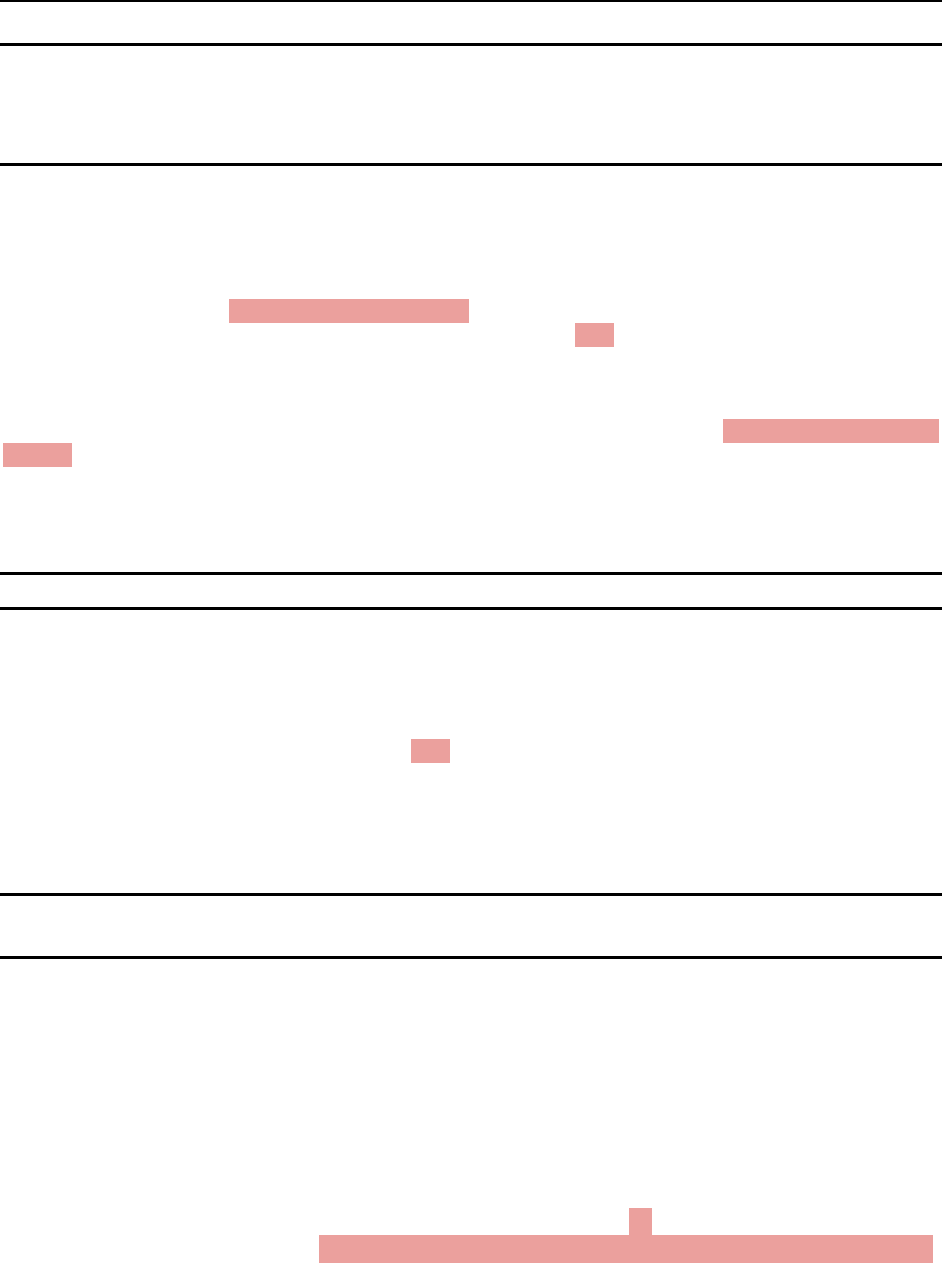
Crime Legislation
April 27, 2023 | 19
§2B1.1. Larceny, Embezzlement, and Other Forms of Theft; Offenses Involving Stolen
Property; Property Damage or Destruction; Fraud and Deceit; Forgery;
Offenses Involving Altered or Counterfeit Instruments Other than Counterfeit
Bearer Obligations of the United States
* * *
Commentary
Statutory Provisions: 5 U.S.C. §§ 8345a, 8466a; 7 U.S.C. §§ 6, 6b, 6c, 6h, 6o, 13, 23; 15 U.S.C. §§ 50,
77e, 77q, 77x, 78j, 78ff, 80b-6, 1644, 6821; 18 U.S.C. §§ 38, 220, 225, 285–289, 471–473, 500, 510,
553(a)(1), 641, 656, 657, 659, 662, 664, 1001–1008, 1010–1014, 1016–1022, 1025, 1026, 1028, 1029,
1030(a)(4)–(5), 1031, 1037, 1040, 1341–1344, 1348, 1350, 1361, 1363, 1369, 1702, 1703 (if vandalism
or malicious mischief, including destruction of mail, is involved), 1708, 1831, 1832, 1992(a)(1), (a)(5),
2113(b), 2282A, 2282B, 2291, 2312–2317, 2332b(a)(1), 2701; 19 U.S.C. § 2401f; 20 U.S.C. § 1097(a), (b),
(d), (e); 29 U.S.C. § 501(c); 42 U.S.C. § 1011; 49 U.S.C. §§ 14915, 30170, 46317(a), 60123(b). For
additional statutory provision(s), see Appendix A (Statutory Index).
* * *
§2B4.1. Bribery in Procurement of Bank Loan and Other Commercial Bribery
* * *
Commentary
Statutory Provisions: 18 U.S.C. §§ 215, 220, 224, 225; 26 U.S.C. §§ 9012(e), 9042(d); 41 U.S.C.
§§ 8702, 8707; 42 U.S.C. §§ 1395nn(b)(1), (2), 1396h(b)(1),(2); 49 U.S.C. § 11902. For additional
statutory provision(s), see Appendix A (Statutory Index).
* * *
§2G1.1. Promoting a Commercial Sex Act or Prohibited Sexual Conduct with an
Individual Other than a Minor
(a) Base Offense Level:
(1) 34, if the offense of conviction is 18 U.S.C. § 1591(b)(1); or
(2) 14, otherwise.
(b) Specific Offense Characteristic
(1) If (A) subsection (a)(2) applies; and (B) (i) the offense involved fraud
or coercion; or (ii) the offense of conviction is 18 U.S.C. § 2421A(b)(2),
increase by 4 levels.

Crime Legislation
20 | April 27, 2023
(c) Cross Reference
(1) If the offense involved conduct described in 18 U.S.C. § 2241(a) or (b)
or 18 U.S.C. § 2242, apply §2A3.1 (Criminal Sexual Abuse; Attempt
to Commit Criminal Sexual Abuse).
(d) Special Instruction
(1) If the offense involved more than one victim, Chapter Three, Part D
(Multiple Counts) shall be applied as if the promoting of a commercial
sex act or prohibited sexual conduct in respect to each victim had been
contained in a separate count of conviction.
Commentary
Statutory Provisions: 8 U.S.C. § 1328 (only if the offense involved a victim other than a minor);
18 U.S.C. §§ 1591 (only if the offense involved a victim other than a minor), 2421 (only if the offense
involved a victim other than a minor), 2421A (only if the offense involved a victim other than a minor),
2422(a) (only if the offense involved a victim other than a minor). For additional statutory provision(s),
see Appendix A (Statutory Index).
Application Notes:
1. Definitions.—For purposes of this guideline:
“Commercial sex act” has the meaning given that term in 18 U.S.C. § 1591(e)(3).
“Prohibited sexual conduct” has the meaning given that term in Application Note 1 of §2A3.1
(Criminal Sexual Abuse; Attempt to Commit Criminal Sexual Abuse).
“Promoting a commercial sex act” means persuading, inducing, enticing, or coercing a person
to engage in a commercial sex act, or to travel to engage in, a commercial sex act.
“Victim” means a person transported, persuaded, induced, enticed, or coerced to engage in, or
travel for the purpose of engaging in, a commercial sex act or prohibited sexual conduct, whether
or not the person consented to the commercial sex act or prohibited sexual conduct. Accordingly,
“victim” may include an undercover law enforcement officer.
2. Application of Subsection (b)(1).—Subsection (b)(1) provides an enhancement for fraud or
coercion that occurs as part of the offense and anticipates no bodily injury. If bodily injury results,
an upward departure may be warranted. See Chapter Five, Part K (Departures). For purposes of
subsection (b)(1), “coercion” includes any form of conduct that negates the voluntariness of the
victim. This enhancement would apply, for example, in a case in which the ability of the victim
to appraise or control conduct was substantially impaired by drugs or alcohol. This characteristic
generally will not apply if the drug or alcohol was voluntarily taken.
3. Application of Chapter Three Adjustment.—For the purposes of §3B1.1 (Aggravating Role),
a victim, as defined in this guideline, is considered a participant only if that victim assisted in
the promoting of a commercial sex act or prohibited sexual conduct in respect to another victim.

Crime Legislation
April 27, 2023 | 21
4. Application of Subsection (c)(1).—
(A) Conduct Described in 18 U.S.C. § 2241(a) or (b).—For purposes of subsection (c)(1),
conduct described in 18 U.S.C. § 2241(a) or (b) is engaging in, or causing another person to
engage in, a sexual act with another person by: (i) using force against the victim;
(ii) threatening or placing the victim in fear that any person will be subject to death, serious
bodily injury, or kidnapping; (iii) rendering the victim unconscious; or (iv) administering by
force or threat of force, or without the knowledge or permission of the victim, a drug,
intoxicant, or other similar substance and thereby substantially impairing the ability of the
victim to appraise or control conduct. This provision would apply, for example, if any
dangerous weapon was used or brandished, or in a case in which the ability of the victim to
appraise or control conduct was substantially impaired by drugs or alcohol.
(B) Conduct Described in 18 U.S.C. § 2242.—For purposes of subsection (c)(1), conduct
described in 18 U.S.C. § 2242 is: (i) engaging in, or causing another person to engage in, a
sexual act with another person by threatening or placing the victim in fear (other than by
threatening or placing the victim in fear that any person will be subject to death, serious
bodily injury, or kidnapping); or (ii) engaging in, or causing another person to engage in, a
sexual act with a victim who is incapable of appraising the nature of the conduct or who is
physically incapable of declining participation in, or communicating unwillingness to
engage in, the sexual act.
5. Special Instruction at Subsection (d)(1).—For the purposes of Chapter Three, Part D
(Multiple Counts), each person transported, persuaded, induced, enticed, or coerced to engage in,
or travel to engage in, a commercial sex act or prohibited sexual conduct is to be treated as a
separate victim. Consequently, multiple counts involving more than one victim are not to be
grouped together under §3D1.2 (Groups of Closely Related Counts). In addition, subsection (d)(1)
directs that if the relevant conduct of an offense of conviction includes the promoting of a
commercial sex act or prohibited sexual conduct in respect to more than one victim, whether
specifically cited in the count of conviction, each such victim shall be treated as if contained in a
separate count of conviction.
6. Upward Departure Provision.—If the offense involved more than ten victims, an upward
departure may be warranted.
* * *
§2G1.3. Promoting a Commercial Sex Act or Prohibited Sexual Conduct with a Minor;
Transportation of Minors to Engage in a Commercial Sex Act or Prohibited
Sexual Conduct; Travel to Engage in Commercial Sex Act or Prohibited
Sexual Conduct with a Minor; Sex Trafficking of Children; Use of Interstate
Facilities to Transport Information about a Minor
(a) Base Offense Level:
(1) 34, if the defendant was convicted under 18 U.S.C. § 1591(b)(1);
(2) 30, if the defendant was convicted under 18 U.S.C. § 1591(b)(2);
(3) 28, if the defendant was convicted under 18 U.S.C. § 2422(b) or
§ 2423(a); or

Crime Legislation
22 | April 27, 2023
(4) 24, otherwise.
(b) Specific Offense Characteristics
(1) If (A) the defendant was a parent, relative, or legal guardian of the
minor; or (B) the minor was otherwise in the custody, care, or
supervisory control of the defendant, increase by 2 levels.
(2) If (A) the offense involved the knowing misrepresentation of a
participant’s identity to persuade, induce, entice, coerce, or facilitate
the travel of, a minor to engage in prohibited sexual conduct; or (B) a
participant otherwise unduly influenced a minor to engage in
prohibited sexual conduct, increase by 2 levels.
(3) If the offense involved the use of a computer or an interactive
computer service to (A) persuade, induce, entice, coerce, or facilitate
the travel of, the minor to engage in prohibited sexual conduct; or
(B) entice, encourage, offer, or solicit a person to engage in prohibited
sexual conduct with the minor, increase by 2 levels. Provided,
however, that subsection (b)(3)(B) shall not apply if the offense of
conviction is 18 U.S.C. § 2421A.
(4) (Apply the greater):
(A) If (Ai) the offense involved the commission of a sex act or sexual
contact; or (Bii) subsection (a)(3) or (a)(4) applies and the offense
involved a commercial sex act, increase by 2 levels.
(B) If (i) subsection (a)(4) applies; and (ii) the offense of conviction is
18 U.S.C. § 2421A(b)(2), increase by 4 levels.
(5) If (A) subsection (a)(3) or (a)(4) applies; and (B) the offense involved a
minor who had not attained the age of 12 years, increase by 8 levels.
(c) Cross References
(1) If the offense involved causing, transporting, permitting, or offering
or seeking by notice or advertisement, a minor to engage in sexually
explicit conduct for the purpose of producing a visual depiction of such
conduct, apply §2G2.1 (Sexually Exploiting a Minor by Production of
Sexually Explicit Visual or Printed Material; Custodian Permitting
Minor to Engage in Sexually Explicit Conduct; Advertisement for
Minors to Engage in Production), if the resulting offense level is
greater than that determined above.

Crime Legislation
April 27, 2023 | 23
(2) If a minor was killed under circumstances that would constitute
murder under 18 U.S.C. § 1111 had such killing taken place within
the territorial or maritime jurisdiction of the United States, apply
§2A1.1 (First Degree Murder), if the resulting offense level is greater
than that determined above.
(3) If the offense involved conduct described in 18 U.S.C. § 2241 or § 2242,
apply §2A3.1 (Criminal Sexual Abuse; Attempt to Commit Criminal
Sexual Abuse), if the resulting offense level is greater than that
determined above. If the offense involved interstate travel with intent
to engage in a sexual act with a minor who had not attained the age
of 12 years, or knowingly engaging in a sexual act with a minor who
had not attained the age of 12 years, §2A3.1 shall apply, regardless of
the “consent” of the minor.
(d) Special Instruction
(1) If the offense involved more than one minor, Chapter Three, Part D
(Multiple Counts) shall be applied as if the persuasion, enticement,
coercion, travel, or transportation to engage in a commercial sex act
or prohibited sexual conduct of each victim had been contained in a
separate count of conviction.
Commentary
Statutory Provisions: 8 U.S.C. § 1328 (only if the offense involved a minor); 18 U.S.C. §§ 1591 (only
if the offense involved a minor), 2421 (only if the offense involved a minor), 2421A (only if the offense
involved a minor), 2422 (only if the offense involved a minor), 2423, 2425. For additional statutory
provision(s), see Appendix A (Statutory Index).
Application Notes:
1. Definitions.—For purposes of this guideline:
“Commercial sex act” has the meaning given that term in 18 U.S.C. § 1591(e)(3).
“Computer” has the meaning given that term in 18 U.S.C. § 1030(e)(1).
“Illicit sexual conduct” has the meaning given that term in 18 U.S.C. § 2423(f).
“Interactive computer service” has the meaning given that term in section 230(e)(2) of the
Communications Act of 1934 (47 U.S.C. § 230(f)(2)).
“Minor” means (A) an individual who had not attained the age of 18 years; (B) an individual,
whether fictitious or not, who a law enforcement officer represented to a participant (i) had not
attained the age of 18 years, and (ii) could be provided for the purposes of engaging in sexually
explicit conduct; or (C) an undercover law enforcement officer who represented to a participant
that the officer had not attained the age of 18 years.

Crime Legislation
24 | April 27, 2023
“Participant” has the meaning given that term in Application Note 1 of the Commentary to
§3B1.1 (Aggravating Role).
“Prohibited sexual conduct” has the meaning given that term in Application Note 1 of the
Commentary to §2A3.1 (Criminal Sexual Abuse; Attempt to Commit Criminal Sexual Abuse).
“Sexual act” has the meaning given that term in 18 U.S.C. § 2246(2).
“Sexual contact” has the meaning given that term in 18 U.S.C. § 2246(3).
2. Application of Subsection (b)(1).—
(A) Custody, Care, or Supervisory Control.—Subsection (b)(1) is intended to have broad
application and includes offenses involving a victim less than 18 years of age entrusted to
the defendant, whether temporarily or permanently. For example, teachers, day care
providers, baby-sitters, or other temporary caretakers are among those who would be
subject to this enhancement. In determining whether to apply this enhancement, the court
should look to the actual relationship that existed between the defendant and the minor
and not simply to the legal status of the defendant-minor relationship.
(B) Inapplicability of Chapter Three Adjustment.—If the enhancement under
subsection (b)(1) applies, do not apply §3B1.3 (Abuse of Position of Trust or Use of Special
Skill).
3. Application of Subsection (b)(2).—
(A) Misrepresentation of Participant’s Identity.—The enhancement in
subsection (b)(2)(A) applies in cases involving the misrepresentation of a participant’s
identity to persuade, induce, entice, coerce, or facilitate the travel of, a minor to engage in
prohibited sexual conduct. Subsection (b)(2)(A) is intended to apply only to
misrepresentations made directly to a minor or to a person who exercises custody, care, or
supervisory control of the minor. Accordingly, the enhancement in subsection (b)(2)(A)
would not apply to a misrepresentation made by a participant to an airline representative
in the course of making travel arrangements for the minor.
The misrepresentation to which the enhancement in subsection (b)(2)(A) may apply
includes misrepresentation of a participant’s name, age, occupation, gender, or status, as
long as the misrepresentation was made with the intent to persuade, induce, entice, coerce,
or facilitate the travel of, a minor to engage in prohibited sexual conduct. Accordingly, use
of a computer screen name, without such intent, would not be a sufficient basis for
application of the enhancement.
(B) Undue Influence.—In determining whether subsection (b)(2)(B) applies, the court should
closely consider the facts of the case to determine whether a participant’s influence over the
minor compromised the voluntariness of the minor’s behavior. The voluntariness of the
minor’s behavior may be compromised without prohibited sexual conduct occurring.
However, subsection (b)(2)(B) does not apply in a case in which the only “minor” (as defined
in Application Note 1) involved in the offense is an undercover law enforcement officer.
In a case in which a participant is at least 10 years older than the minor, there shall be a
rebuttable presumption that subsection (b)(2)(B) applies. In such a case, some degree of

Crime Legislation
April 27, 2023 | 25
undue influence can be presumed because of the substantial difference in age between the
participant and the minor.
4. Application of Subsection (b)(3)(A).—Subsection (b)(3)(A) is intended to apply only to the use
of a computer or an interactive computer service to communicate directly with a minor or with a
person who exercises custody, care, or supervisory control of the minor. Accordingly, the
enhancement in subsection (b)(3)(A) would not apply to the use of a computer or an interactive
computer service to obtain airline tickets for the minor from an airline’s Internet site.
5. Application of Subsection (c).—
(A) Application of Subsection (c)(1).—The cross reference in subsection (c)(1) is to be
construed broadly and includes all instances in which the offense involved employing,
using, persuading, inducing, enticing, coercing, transporting, permitting, or offering or
seeking by notice, advertisement or other method, a minor to engage in sexually explicit
conduct for the purpose of producing any visual depiction of such conduct. For purposes of
subsection (c)(1), “sexually explicit conduct” has the meaning given that term in
18 U.S.C. § 2256(2).
(B) Application of Subsection (c)(3).—For purposes of subsection (c)(3), conduct described
in 18 U.S.C. § 2241 means conduct described in 18 U.S.C. § 2241(a), (b), or (c). Accordingly,
for purposes of subsection (c)(3):
(i) Conduct described in 18 U.S.C. § 2241(a) or (b) is engaging in, or causing another
person to engage in, a sexual act with another person: (I) using force against the
minor; (II) threatening or placing the minor in fear that any person will be subject to
death, serious bodily injury, or kidnapping; (III) rendering the minor unconscious; or
(IV) administering by force or threat of force, or without the knowledge or permission
of the minor, a drug, intoxicant, or other similar substance and thereby substantially
impairing the ability of the minor to appraise or control conduct. This provision would
apply, for example, if any dangerous weapon was used or brandished, or in a case in
which the ability of the minor to appraise or control conduct was substantially
impaired by drugs or alcohol.
(ii) Conduct described in 18 U.S.C. § 2241(c) is: (I) interstate travel with intent to engage
in a sexual act with a minor who has not attained the age of 12 years; (II) knowingly
engaging in a sexual act with a minor who has not attained the age of 12 years; or
(III) knowingly engaging in a sexual act under the circumstances described in
18 U.S.C. § 2241(a) and (b) with a minor who has attained the age of 12 years but has
not attained the age of 16 years (and is at least 4 years younger than the person so
engaging).
(iii) Conduct described in 18 U.S.C. § 2242 is: (I) engaging in, or causing another person
to engage in, a sexual act with another person by threatening or placing the minor in
fear (other than by threatening or placing the minor in fear that any person will be
subject to death, serious bodily injury, or kidnapping); or (II) engaging in, or causing
another person to engage in, a sexual act with a minor who is incapable of appraising
the nature of the conduct or who is physically incapable of declining participation in,
or communicating unwillingness to engage in, the sexual act.
6. Special Instruction at Subsection (d)(1).—For the purposes of Chapter Three, Part D
(Multiple Counts), each minor transported, persuaded, induced, enticed, or coerced to engage
in, or travel to engage in, a commercial sex act or prohibited sexual conduct is to be treated as
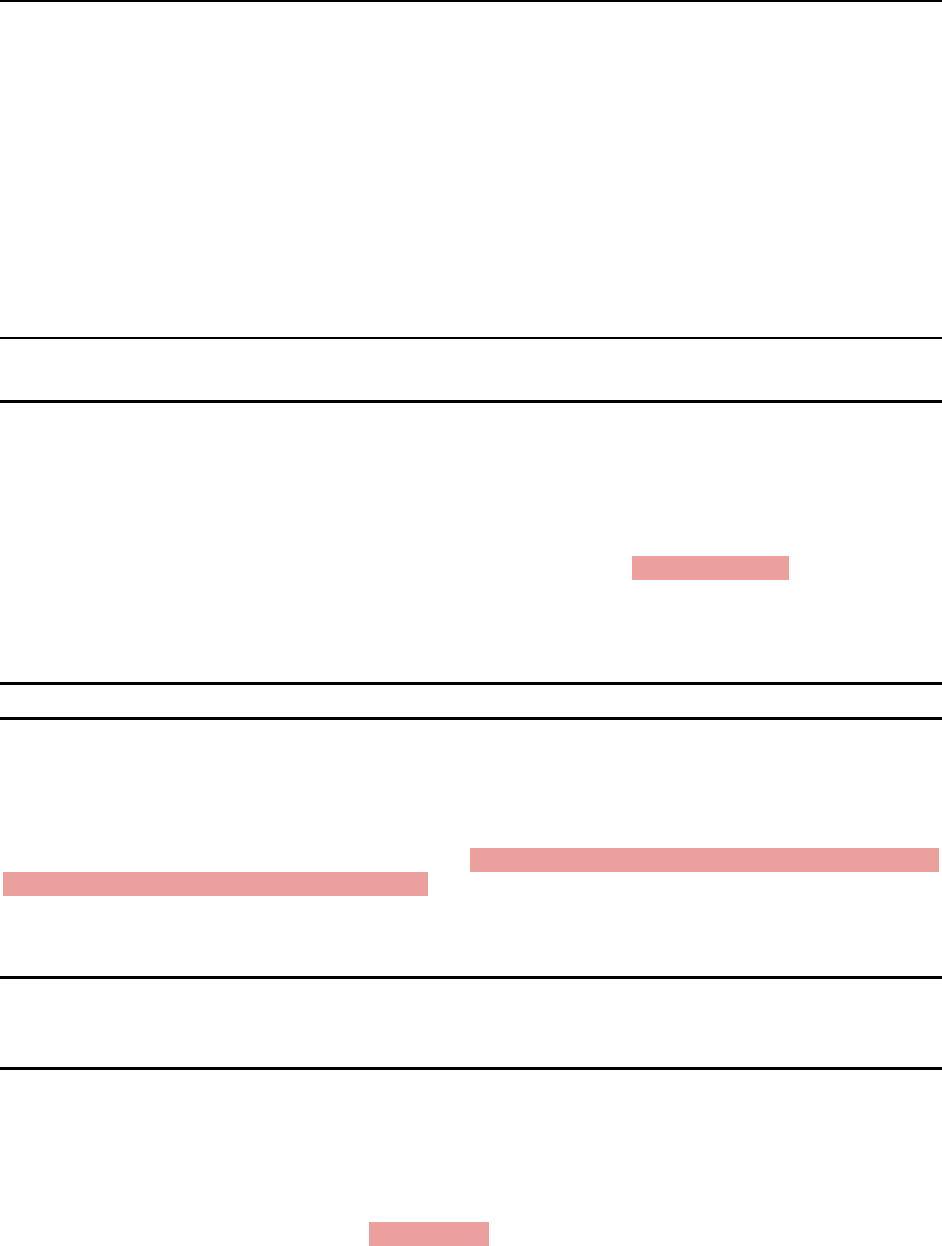
Crime Legislation
26 | April 27, 2023
a separate minor. Consequently, multiple counts involving more than one minor are not to be
grouped together under §3D1.2 (Groups of Closely Related Counts). In addition,
subsection (d)(1) directs that if the relevant conduct of an offense of conviction includes travel
or transportation to engage in a commercial sex act or prohibited sexual conduct in respect to
more than one minor, whether specifically cited in the count of conviction, each such minor
shall be treated as if contained in a separate count of conviction.
7. Upward Departure Provision.—If the offense involved more than ten victims, an upward
departure may be warranted.
* * *
§2H3.1. Interception of Communications; Eavesdropping; Disclosure of Certain
Private or Protected Information
* * *
Commentary
Statutory Provisions: 8 U.S.C. § 1375a(d)(5)(B)(i), (ii); 18 U.S.C. §§ 119, 1039, 1905, 2511; 26 U.S.C.
§§ 7213(a)(1)–(3), (a)(5), (d), 7213A, 7216; 42 U.S.C. §§ 16962, 16984; 44 U.S.C. § 3572; 47 U.S.C. § 605.
For additional statutory provision(s), see Appendix A (Statutory Index).
* * *
§2N1.1. Tampering or Attempting to Tamper Involving Risk of Death or Bodily Injury
* * *
Commentary
Statutory Provisions: 18 U.S.C. § 1365(a), (e); 21 U.S.C. § 333(b)(7). For additional statutory
provision(s), see Appendix A (Statutory Index).
* * *
§2N2.1. Violations of Statutes and Regulations Dealing With Any Food, Drug,
Biological Product, Device, Cosmetic, Agricultural Product, or Consumer
Product
* * *
Commentary
Statutory Provisions: 7 U.S.C. §§ 150bb, 150gg, 6810, 7734, 8313; 21 U.S.C. §§ 115, 117, 122, 134–
134e, 151–158, 331, 333(a)(1), (a)(2), (b)(1)–(6), (b)(8), 458–461, 463, 466, 610, 611, 614, 617, 619, 620,
642–644, 676; 42 U.S.C. § 262. For additional statutory provision(s), see Appendix A (Statutory Index).
* * *

Crime Legislation
April 27, 2023 | 27
§2S1.3. Structuring Transactions to Evade Reporting Requirements; Failure to Report
Cash or Monetary Transactions; Failure to File Currency and Monetary
Instrument Report; Knowingly Filing False Reports; Bulk Cash Smuggling;
Establishing or Maintaining Prohibited Accounts
* * *
Commentary
Statutory Provisions: 18 U.S.C. § 1960 (but only with respect to unlicensed money transmitting
businesses as defined in 18 U.S.C. § 1960(b)(1)(A) and (B)); 26 U.S.C. §§ 7203 (if a violation based upon
26 U.S.C. § 6050I), 7206 (if a violation based upon 26 U.S.C. § 6050I); 31 U.S.C. §§ 5313, 5314, 5316,
5318, 5318A(b), 5322, 5324, 5326, 5331, 5332, 5335, 5336. For additional statutory provision(s),
see Appendix A (Statutory Index).
* * *
§2X5.2. Class A Misdemeanors (Not Covered by Another Specific Offense
Guideline)
* * *
Commentary
Statutory Provisions: 10 U.S.C. § 2733a(g)(2); 18 U.S.C. §§ 39B, 1365(f), 1801, 2259(d)(4); 34 U.S.C.
§ 12593; 49 U.S.C. § 31310. For additional statutory provision(s), see Appendix A (Statutory Index).
* * *
APPENDIX A
STATUTORY INDEX
* * *
2 U.S.C. § 390 2J1.1, 2J1.5
5 U.S.C. § 8345a 2B1.1
5 U.S.C. § 8466a 2B1.1
7 U.S.C. § 6 2B1.1
* * *
10 U.S.C. § 987(f) 2X5.2
10 U.S.C. § 2733a(g)(2) 2X5.2

Crime Legislation
28 | April 27, 2023
12 U.S.C. § 631 2B1.1
* * *
18 U.S.C. § 39A 2A5.2
18 U.S.C. § 39B 2A5.2, 2X5.2
18 U.S.C. § 40A 2A2.4
18 U.S.C. § 43 2B1.1
* * *
18 U.S.C. § 219 2C1.3
18 U.S.C. § 220 2B1.1, 2B4.1
18 U.S.C. § 224 2B4.1
* * *
18 U.S.C. § 2257A 2G2.5
18 U.S.C. § 2259(d)(4) 2X5.2
18 U.S.C. § 2260(a) 2G2.1
* * *
18 U.S.C. § 2319B 2B5.3
18 U.S.C. § 2319C 2B5.3
18 U.S.C. § 2320 2B5.3
* * *
18 U.S.C. § 2421 2G1.1, 2G1.3
18 U.S.C. § 2421A 2G1.1, 2G1.3
18 U.S.C. § 2422 2G1.1, 2G1.3
* * *
20 U.S.C. § 1097(d) 2B1.1
20 U.S.C. § 1097(e) 2B1.1
21 U.S.C. § 101 2N2.1

Crime Legislation
April 27, 2023 | 29
* * *
21 U.S.C. § 333(b)(1)–(6) 2N2.1
21 U.S.C.§ 333(b)(7) 2N1.1
21 U.S.C. § 333(b)(8) 2N2.1
21 U.S.C. § 458 2N2.1
* * *
31 U.S.C. § 5332 2S1.3
31 U.S.C. § 5335 2S1.3
31 U.S.C. § 5336 2S1.3
31 U.S.C. § 5363 2E3.1
* * *
43 U.S.C. § 1822(b) 2Q1.2
44 U.S.C. § 3572 2H3.1
45 U.S.C. § 359(a) 2B1.1
* * *
30 | April 27, 2023
3. SEXUAL ABUSE OFFENSES
Reason for Amendment: This multi-part amendment responds to statutory changes
provided in division W, title XII, of the Violence Against Women Act Reauthorization Act,
Pub. L. 117–103 (Nov. 9, 2022) and separately addresses concerns regarding cases involving
sexual abuse committed by law enforcement or correctional personnel against victims in
their custody, care, or supervision.
First, the amendment amends Appendix A (Statutory Appendix) to reference the new
offense created at 18 U.S.C. § 250 (Penalties for civil rights offenses involving sexual
misconduct) to §2H1.1 (Offenses Involving Individual Rights). New section 250 criminalizes
engaging in or causing another to engage in sexual misconduct while committing any civil
rights offense under chapter 13 (Civil Rights) of title 18, U.S. Code, or 42 U.S.C. § 3631
(Fair Housing [violations]). Section 250 delineates different degrees of prohibited sexual
misconduct, including aggravated sexual abuse as defined in 18 U.S.C. § 2241 (Aggravated
sexual abuse), sexual abuse as defined in 18 U.S.C. § 2242 (Sexual abuse), a sexual act not
amounting to aggravated sexual abuse or sexual abuse, and sexual contact, as defined in
18 U.S.C. § 2244 (Abusive sexual contact). The statutory maximum term of imprisonment
for a violation of section 250 ranges from two years to any term of years or life, depending
on the sexual conduct involved in the offense.
The Commission determined that §2H1.1 is the most appropriate guideline to which to
reference this new offense. Other similar offenses are referenced to this guideline. In
addition, the Commission concluded that the alternative base offense levels provided in
§2H1.1 effectively address both the broad array of conduct criminalized under this new
statute and the varying statutory maximum terms of imprisonment applicable to such
conduct.
Second, the amendment amends Appendix A to reference new subsection (c) at 18 U.S.C.
§ 2243 (Sexual abuse of a minor, a ward, or an individual in Federal custody) to §2A3.3 and
makes a conforming change to §2A3.3’s title. The new subsection at 18 U.S.C. § 2243
prohibits law enforcement officers from knowingly engaging in a sexual act with an
individual under arrest or supervision, in detention, or in federal custody. The Commission
determined §2A3.3 is the most appropriate guideline to which to reference the new offense
because it covers a similar offense at 18 U.S.C. § 2243(b) prohibiting anyone in a federal
prison, institution, or facility from knowingly engaging in a sexual act with a ward, defined
as an inmate or other person in official detention and under the custodial, supervisory, or
disciplinary authority of the person engaging in the act. Subsection 2243(b) also has the
same 15-year statutory maximum term of imprisonment, and a reference to this guideline
will result in similar penalties for both subsections of section 2243.
Finally, the amendment increases the base offense level at §2A3.3 for offenses involving the
sexual abuse of a ward or an individual in federal custody from 14 to 18. The Commission
determined that the increased base offense level will more appropriately reflect the 15-year
statutory maximum penalty for offenses referenced to this guideline and punish the serious
sexual conduct involved in these offenses. In promulgating the amendment, the
Commission was informed by both the rate and extent of above-range sentences in these
cases. While the average guideline minimum in fiscal years 2018 through 2022 was
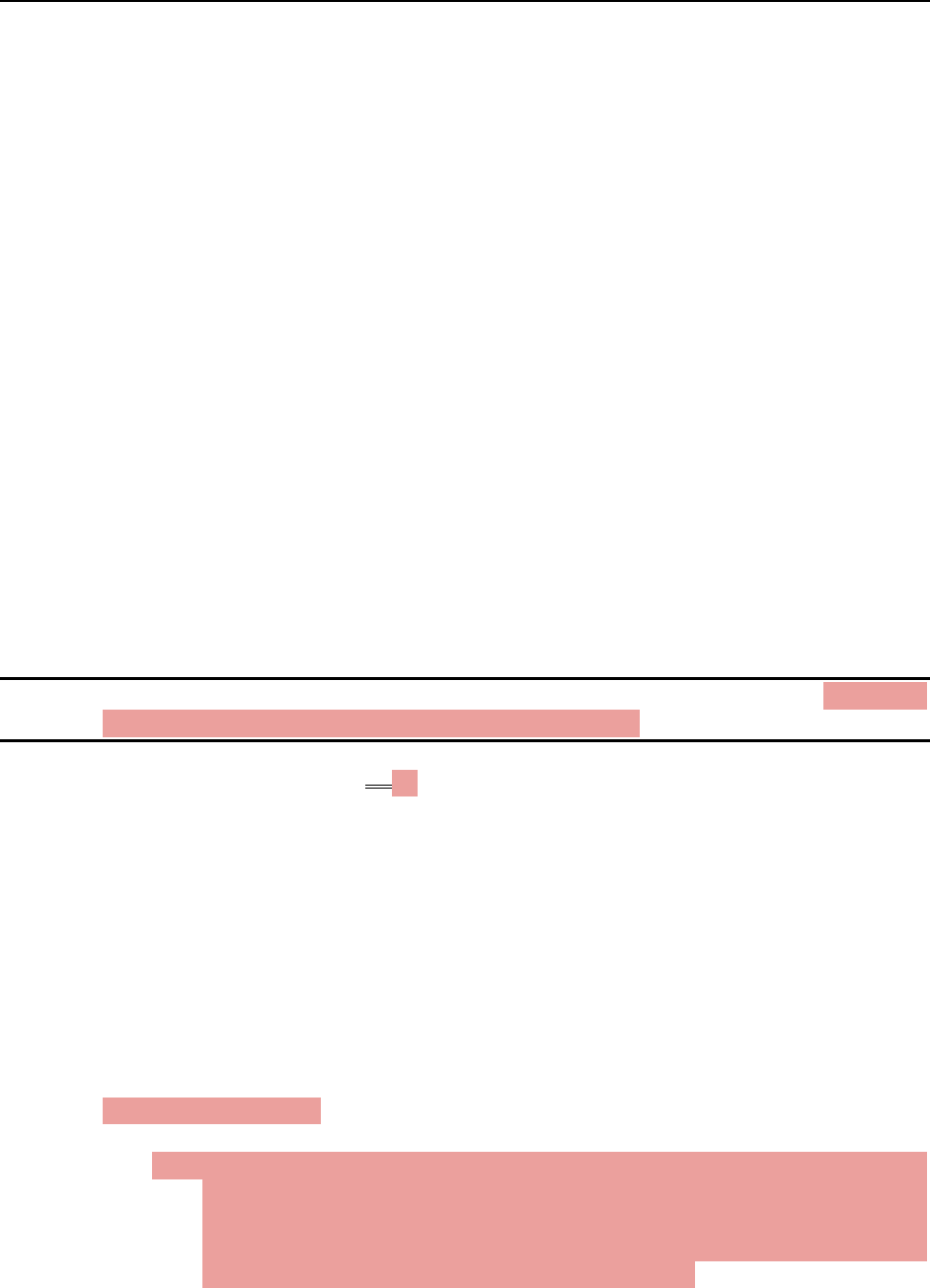
Sexual Abuse Offenses
April 27, 2023 | 31
17 months (median 12 months), the average sentence imposed was more than double, at
35 months (median 15 months).
The Commission also concluded that an increased guideline range for §2A3.3 offenses
would be more proportional to the guideline range at §2A3.2 (Criminal Sexual Abuse of a
Minor Under the Age of Sixteen Years (Statutory Rape) or Attempt to Commit Such Acts)
for the sexual abuse of minors over the age of 12 and under the age of 16 years, conduct
prohibited by 18 U.S.C. § 2243(a) with the same 15-year statutory maximum term of
imprisonment as subsections 2243(b) and 2243(c). Section 2A3.2 has a base offense level 18
and a 4-level enhancement if the victim is in the care, custody, or supervisory control of the
defendant.
Consistent with this approach, the amendment also amends §2A3.3 to include the same
cross reference currently provided for in §2A3.2 in order to ensure proportional guideline
ranges for all section 2243 offenses when the offense involved aggravating sexual conduct.
The new cross reference sends cases to §2A3.1 (Criminal Sexual Abuse; Attempt to Commit
Criminal Sexual Abuse) if the offense involved criminal sexual abuse or attempt to commit
criminal sexual abuse (as defined in 18 U.S.C. § 2241 or § 2242), and further directs that
§2A3.1 shall apply if the victim had not attained the age of 12 years, regardless of the
“consent” of the victim.
Amendment:
§2A3.3. Criminal Sexual Abuse of a Ward or Attempt to Commit Such Acts; Criminal
Sexual Abuse of an Individual in Federal Custody
(a) Base Offense Level: 1418
(b) Specific Offense Characteristics
(1) If the offense involved the knowing misrepresentation of a
participant’s identity to persuade, induce, entice, or coerce a minor to
engage in prohibited sexual conduct, increase by 2 levels.
(2) If a computer or an interactive computer service was used to
persuade, induce, entice, or coerce a minor to engage in prohibited
sexual conduct, increase by 2 levels.
(c) Cross Reference
(1) If the offense involved criminal sexual abuse or attempt to commit
criminal sexual abuse (as defined in 18 U.S.C. § 2241 or § 2242), apply
§2A3.1 (Criminal Sexual Abuse; Attempt to Commit Criminal Sexual
Abuse). If the victim had not attained the age of 12 years, §2A3.1 shall
apply, regardless of the “consent” of the victim.

Sexual Abuse Offenses
32 | April 27, 2023
Commentary
Statutory Provision: 18 U.S.C. §§ 2243(b), 2243(c). For additional statutory provision(s),
see Appendix A (Statutory Index).
Application Notes:
1. Definitions.—For purposes of this guideline:
“Computer” has the meaning given that term in 18 U.S.C. § 1030(e)(1).
“Interactive computer service” has the meaning given that term in section 230(e)(2) of the
Communications Act of 1934 (47 U.S.C. § 230(f)(2)).
“Minor” means (A) an individual who had not attained the age of 18 years; (B) an individual,
whether fictitious or not, who a law enforcement officer represented to a participant (i) had not
attained the age of 18 years; and (ii) could be provided for the purposes of engaging in sexually
explicit conduct; or (C) an undercover law enforcement officer who represented to a participant
that the officer had not attained the age of 18 years.
“Participant” has the meaning given that term in Application Note 1 of the Commentary to
§3B1.1 (Aggravating Role).
“Prohibited sexual conduct” has the meaning given that term in Application Note 1 of the
Commentary to §2A3.1 (Criminal Sexual Abuse; Attempt to Commit Criminal Sexual Abuse).
“Ward” means a person in official detention under the custodial, supervisory, or disciplinary
authority of the defendant.
2. Application of Subsection (b)(1).—The enhancement in subsection (b)(1) applies in cases
involving the misrepresentation of a participant’s identity to persuade, induce, entice, or coerce
a minor to engage in prohibited sexual conduct. Subsection (b)(1) is intended to apply only to
misrepresentations made directly to a minor or to a person who exercises custody, care, or
supervisory control of the minor.
The misrepresentation to which the enhancement in subsection (b)(1) may apply includes
misrepresentation of a participant’s name, age, occupation, gender, or status, as long as the
misrepresentation was made with the intent to persuade, induce, entice, or coerce a minor to
engage in prohibited sexual conduct. Accordingly, use of a computer screen name, without such
intent, would not be a sufficient basis for application of the enhancement.
3. Application of Subsection (b)(2).—Subsection (b)(2) provides an enhancement if a computer
or an interactive computer service was used to persuade, induce, entice, or coerce a minor to
engage in prohibited sexual conduct. Subsection (b)(2) is intended to apply only to the use of a
computer or an interactive computer service to communicate directly with a minor or with a
person who exercises custody, care, or supervisory control of the minor.
4. Inapplicability of §3B1.3.—Do not apply §3B1.3 (Abuse of Position of Trust or Use of Special
Skill).
* * *

Sexual Abuse Offenses
April 27, 2023 | 33
§2H1.1. Offenses Involving Individual Rights
(a) Base Offense Level (Apply the Greatest):
(1) the offense level from the offense guideline applicable to any
underlying offense;
(2) 12, if the offense involved two or more participants;
(3) 10, if the offense involved (A) the use or threat of force against a
person; or (B) property damage or the threat of property damage; or
(4) 6, otherwise.
(b) Specific Offense Characteristic
(1) If (A) the defendant was a public official at the time of the offense; or
(B) the offense was committed under color of law, increase by 6 levels.
Commentary
Statutory Provisions: 18 U.S.C. §§ 241, 242, 245(b), 246, 247, 248, 249246–250, 1091; 42 U.S.C.
§ 3631.
Application Notes:
1. “Offense guideline applicable to any underlying offense” means the offense guideline
applicable to any conduct established by the offense of conviction that constitutes an offense
under federal, state, or local law (other than an offense that is itself covered under Chapter Two,
Part H, Subpart 1).
In certain cases, conduct set forth in the count of conviction may constitute more than one
underlying offense (e.g., two instances of assault, or one instance of assault and one instance of
arson). In such cases, use the following comparative procedure to determine the applicable base
offense level: (i) determine the underlying offenses encompassed within the count of conviction
as if the defendant had been charged with a conspiracy to commit multiple offenses.
See Application Note 4 of §1B1.2 (Applicable Guidelines); (ii) determine the Chapter Two offense
level (i.e., the base offense level, specific offense characteristics, cross references, and special
instructions) for each such underlying offense; and (iii) compare each of the Chapter Two offense
levels determined above with the alternative base offense level under subsection (a)(2), (3), or (4).
The determination of the applicable alternative base offense level is to be based on the entire
conduct underlying the count of conviction (i.e., the conduct taken as a whole). Use the alternative
base offense level only if it is greater than each of the Chapter Two offense levels determined
above. Otherwise, use the Chapter Two offense levels for each of the underlying offenses (with
each underlying offense treated as if contained in a separate count of conviction). Then apply
subsection (b) to the alternative base offense level, or to the Chapter Two offense levels for each
of the underlying offenses, as appropriate.
2. “Participant” is defined in the Commentary to §3B1.1 (Aggravating Role).

Sexual Abuse Offenses
34 | April 27, 2023
3. The burning or defacement of a religious symbol with an intent to intimidate shall be deemed to
involve the threat of force against a person for the purposes of subsection (a)(3)(A).
4. If the finder of fact at trial or, in the case of a plea of guilty or nolo contendere, the court at
sentencing determines beyond a reasonable doubt that the defendant intentionally selected any
victim or any property as the object of the offense because of the actual or perceived race, color,
religion, national origin, ethnicity, gender, gender identity, disability, or sexual orientation of
any person, an additional 3-level enhancement from §3A1.1(a) will apply. An adjustment from
§3A1.1(a) will not apply, however, if a 6-level adjustment from §2H1.1(b) applies. See §3A1.1(c).
5. If subsection (b)(1) applies, do not apply §3B1.3 (Abuse of Position of Trust or Use of Special
Skill).
* * *
APPENDIX A
STATUTORY INDEX
* * *
18 U.S.C. § 249 2H1.1
18 U.S.C. § 250 2H1.1
18 U.S.C. § 281 2C1.3
* * *
18 U.S.C. § 2243(b) 2A3.3
18 U.S.C. § 2243(c) 2A3.3
18 U.S.C. § 2244 2A3.4
* * *
April 27, 2023 | 35
4. FIRST STEP ACT—DRUG OFFENSES
Reason for Amendment: This two-part amendment revises §5C1.2 (Limitation on
Applicability of Statutory Minimum Sentences in Certain Cases) and subsections (a)(1)
and (a)(3) of §2D1.1 (Unlawful Manufacturing, Importing, Exporting, or Trafficking
(Including Possession with Intent to Commit These Offenses); Attempt or Conspiracy) in
response to the First Step Act of 2018, Pub. L. 115–391 (Dec. 21, 2018) (“First Step Act”).
The First Step Act amended the eligibility criteria of the “safety valve” provision at
18 U.S.C. § 3553(f) and the enhanced penalty provisions for certain drug trafficking
defendants at 21 U.S.C. §§ 841(b) and 960(b). The amendment primarily revises §5C1.2 to
conform it to the statutory safety valve, as amended by the First Step Act. In addition, the
amendment revises subsections (a)(1) and (a)(3) of §2D1.1 to make the guideline’s reference
to the type of prior offenses that trigger enhanced mandatory minimum penalties consistent
with the amended statutory provisions.
First, the amendment makes three changes to §5C1.2 and its corresponding commentary to
reflect the statutory changes to section 3553(f) made by the First Step Act. The First Step
Act expanded the safety valve provision at section 3553(f) by extending its applicability to
defendants convicted of maritime offenses (46 U.S.C. §§ 70503 and 70506) and broadening
the criminal history eligibility criteria to include defendants who do not have: (1) “more
than 4 criminal history points, excluding any criminal history points resulting from a 1-
point offense, as determined under the sentencing guidelines”; (2) a “prior 3-point offense,
as determined under the sentencing guidelines”; and (3) a “prior 2-point violent offense, as
determined under the sentencing guidelines.” The amendment revises §5C1.2(a) to include
maritime offenses and the expanded statutory criminal history criteria. Next, it revises
Application Note 1 to incorporate the statutory definition for the term “violent offense.”
Finally, it revises Application Note 7 to reflect the new statutory limitation that
information disclosed by a defendant pursuant to 18 U.S.C. § 3553(f) “may not be used to
enhance the defendant’s sentence unless the information relates to a violent offense.”
Second, the amendment revises §5C1.2(b) to account for the expanded class of defendants
who qualify for safety valve relief. Section 5C1.2(b) implemented Congress’s directive
requiring that the guideline minimum be at least 24 months for defendants whose
statutorily required minimum sentence was at least five years by providing a minimum
offense level of 17 for such offenders. See Violent Crime Control and Law Enforcement Act
of 1994, Pub. L. 103–222, § 80001(b), 108 Stat. 1796, 1985 (1994) (“In the case of a
defendant for whom the statutorily required minimum sentence is 5 years, such guidelines
and amendments to guidelines . . . shall call for a guideline range in which the lowest term
of imprisonment is at least 24 months.”); see also USSG App. C, amend. 624 (effective
Nov. 1, 2001) (adding §5C1.2(b) “in order to comply more strictly with the directive”). Before
the First Step Act, only defendants in Criminal History Category (CHC) I (with no more
than one criminal history point) could qualify for safety valve relief, and a base offense level
of 17 therefore correlated with a guideline range of 24 to 30 months for all safety-valve-
eligible defendants. After the First Step Act, a safety-valve-eligible defendant can be in any
CHC, and an offense level of 17 correlates with the following guideline ranges at each
category: I (24–30 months); II (27–33); III (30–37); IV (37–46); V (46–57); and VI (51–63).
Because Congress’s directive is tied to the existence of a 5-year mandatory minimum
penalty and not to the defendant’s CHC, the amendment replaces the offense-level floor

First Step Act—Drug Offenses
36 | April 27, 2023
with a guideline-range floor. The Commission determined that the proportionality concerns
raised in public comment and testimony are addressed by the operation of the Sentencing
Table, irrespective of the offense-level floor.
Third, the amendment makes conforming changes to §4A1.3 (Departures Based on
Inadequacy of Criminal History Category (Policy Statement)), which references the number
of criminal history points permitted under §5C1.2(a)(1).
Fourth, the amendment makes only non-substantive changes to §2D1.1(b)(18) and
§2D1.11(b)(6), the 2-level reductions that are tethered to the eligibility criteria of
paragraphs (1)–(5) of §5C1.2(a). The 2-level reductions in §2D1.1 and §2D1.11 apply to any
defendant who meets the revised criteria of §5C1.2.
Finally, the amendment revises subsections (a)(1) and (a)(3) of §2D1.1 to replace the term
“similar offense” with the appropriate terms set forth in the relevant statutory provisions,
as amended by the First Step Act.
The penalty provisions at 21 U.S.C. §§ 841(b) and 960(b) provide enhanced mandatory
minimum penalties for defendants (1) whose instant offense resulted in death or serious
bodily injury or (2) who have prior convictions for certain specified offenses. Penalties are
further increased if death or serious bodily injury occurred as a result of the instant offense
and the defendant has a qualifying prior conviction. Prior to the First Step Act, all of the
recidivist penalty provisions within sections 841(b) and 960(b) provided for an enhanced
mandatory minimum penalty if a defendant had one or more convictions for a prior “felony
drug offense,” as defined in 21 U.S.C. § 802(44). The First Step Act both narrowed and
expanded the type of prior offenses that trigger enhanced mandatory minimum penalties
under 21 U.S.C. §§ 841(b)(1)(A), 841(b)(1)(B), 960(b)(1), and 960(b)(2) by replacing the term
“felony drug offense” with “serious drug felony,” as defined in 21 U.S.C. § 802(57), and
adding “serious violent felony” offenses, as defined in 21 U.S.C. § 802(58). The First Step
Act did not amend 21 U.S.C. §§ 841(b)(1)(C), 841(b)(1)(E), 960(b)(3), or 960(b)(5), which still
provide for enhanced mandatory minimum penalties if a defendant was convicted of a prior
“felony drug offense.”
The enhanced statutory penalty structure is accounted for through heightened alternative
base offense levels (BOL) at §2D1.1(a)(1)–(a)(4). Prior to the amendment, §2D1.1(a)(1)
provided for a BOL of 43 “if the defendant is convicted under [any of six enumerated
subsections], and the offense of conviction establishes that death or serious bodily injury
resulted from the use of the substance and that the defendant committed the offense after
one or more prior convictions for a similar offense.” Subsection 2D1.1(a)(3) is identical to
§2D1.1(a)(1), except that it provides a BOL of 30 and applies if the defendant is convicted of
an offense involving a Schedule III controlled substance under 21 U.S.C. § 841(b)(1)(E) or
21 U.S.C. § 960(b)(5).
The First Step Act amended four of the six penalty provisions referenced in §2D1.1(a)(1)
and, for those amended provisions, the term “similar offense” is over-inclusive, because it
includes drug offenses that do not meet the definition of “serious drug felony,” and under-
inclusive, because it fails to account for a prior “serious violent felony.” The amendment
divides §2D1.1(a)(1) into two subparagraphs, (A) and (B). Subparagraph (A), which
references the four statutory provisions amended by the First Step Act, replaces the term

First Step Act—Drug Offenses
April 27, 2023 | 37
“similar offense” with “serious drug felony or serious violent felony.” Subparagraph (B),
which references the two provisions that were not amended, replaces the term “similar
offense” with “felony drug offense.” The amendment also amends §2D1.1(a)(3), by replacing
the term “similar offense” with “felony drug offense,” for consistency with the terminology
used in §2D1.1(a)(1).
Amendment:
§2D1.1. Unlawful Manufacturing, Importing, Exporting, or Trafficking (Including
Possession with Intent to Commit These Offenses); Attempt or Conspiracy
(a) Base Offense Level (Apply the greatest):
(1) 43, if—
(A) the defendant is convicted under 21 U.S.C. § 841(b)(1)(A),
or (b)(1)(B), or (b)(1)(C), or 21 U.S.C. § 960(b)(1), or (b)(2), or
(b)(3), and the offense of conviction establishes that death or
serious bodily injury resulted from the use of the substance and
that the defendant committed the offense after one or more
prior convictions for a similar offenseserious drug felony or
serious violent felony; or
(B) the defendant is convicted under 21 U.S.C. § 841(b)(1)(C) or
21 U.S.C. § 960(b)(3) and the offense of conviction establishes
that death or serious bodily injury resulted from the use of the
substance and that the defendant committed the offense after
one or more prior convictions for a felony drug offense; or
(2) 38, if the defendant is convicted under 21 U.S.C. § 841(b)(1)(A),
(b)(1)(B), or (b)(1)(C), or 21 U.S.C. § 960(b)(1), (b)(2), or (b)(3), and
the offense of conviction establishes that death or serious bodily
injury resulted from the use of the substance; or
(3) 30, if the defendant is convicted under 21 U.S.C. § 841(b)(1)(E) or
21 U.S.C. § 960(b)(5), and the offense of conviction establishes that
death or serious bodily injury resulted from the use of the substance
and that the defendant committed the offense after one or more prior
convictions for a similar offensefelony drug offense; or
(4) 26, if the defendant is convicted under 21 U.S.C. § 841(b)(1)(E) or
21 U.S.C. § 960(b)(5), and the offense of conviction establishes that
death or serious bodily injury resulted from the use of the substance;
or

First Step Act—Drug Offenses
38 | April 27, 2023
(5) the offense level specified in the Drug Quantity Table set forth in
subsection (c), except that if (A) the defendant receives an
adjustment under §3B1.2 (Mitigating Role); and (B) the base offense
level under subsection (c) is (i) level 32, decrease by 2 levels;
(ii) level 34 or level 36, decrease by 3 levels; or (iii) level 38, decrease
by 4 levels. If the resulting offense level is greater than level 32 and
the defendant receives the 4-level (“minimal participant”) reduction
in §3B1.2(a), decrease to level 32.
(b) Specific Offense Characteristics
* * *
(18) If the defendant meets the criteria set forth in
subdivisionsparagraphs (1)–(5) of subsection (a) of §5C1.2
(Limitation on Applicability of Statutory Minimum Sentences in
Certain Cases), decrease by 2 levels.
* * *
Commentary
* * *
Application Notes:
1. Definitions.—
{For purposes of the guidelines, a “plant” is an organism having leaves and a readily observable
root formation (e.g., a marihuana cutting having roots, a rootball, or root hairs is a marihuana
plant).}
*
For purposes of subsection (a), “serious drug felony,” “serious violent felony,” and “felony
drug offense” have the meaning given those terms in 21 U.S.C. § 802.
12. “Mixture or Substance”.—“Mixture or substance” as used in this guideline has the same
meaning as in 21 U.S.C. § 841, except as expressly provided. Mixture or substance does not
include materials that must be separated from the controlled substance before the controlled
substance can be used. Examples of such materials include the fiberglass in a cocaine/fiberglass
bonded suitcase, beeswax in a cocaine/beeswax statue, and waste water from an illicit laboratory
used to manufacture a controlled substance. If such material cannot readily be separated from
the mixture or substance that appropriately is counted in the Drug Quantity Table, the court
may use any reasonable method to approximate the weight of the mixture or substance to be
counted.
An upward departure nonetheless may be warranted when the mixture or substance counted in
the Drug Quantity Table is combined with other, non-countable material in an unusually
sophisticated manner in order to avoid detection.
* The text in braces currently appears in Application Note 2 of §2D1.1. The amendment places
the text here without making any changes.

First Step Act—Drug Offenses
April 27, 2023 | 39
Similarly, in the case of marihuana having a moisture content that renders the marihuana
unsuitable for consumption without drying (this might occur, for example, with a bale of rain-
soaked marihuana or freshly harvested marihuana that had not been dried), an approximation
of the weight of the marihuana without such excess moisture content is to be used.
2. “Plant”.—For purposes of the guidelines, a “plant” is an organism having leaves and a readily
observable root formation (e.g., a marihuana cutting having roots, a rootball, or root hairs is a
marihuana plant).
* * *
21. Applicability of Subsection (b)(18).—The applicability of subsection (b)(18) shall be
determined without regard to whether the defendant was convicted of an offense that subjects
the defendant to a mandatory minimum term of imprisonment. Section §5C1.2(b), which provides
a minimum offense level of level 17that the applicable guideline range shall not be less than 24
to 30 months of imprisonment, is not pertinent to the determination of whether subsection (b)(18)
applies.
* * *
§2D1.11. Unlawfully Distributing, Importing, Exporting or Possessing a Listed
Chemical; Attempt or Conspiracy
* * *
(b) Specific Offense Characteristics
* * *
(6) If the defendant meets the criteria set forth in
subdivisionsparagraphs (1)–(5) of subsection (a) of §5C1.2
(Limitation on Applicability of Statutory Minimum Sentences in
Certain Cases), decrease by 2 levels.
* * *
Commentary
* * *
Application Notes:
* * *
7. Applicability of Subsection (b)(6).— The applicability of subsection (b)(6) shall be determined
without regard to the offense of conviction. If subsection (b)(6) applies, §5C1.2(b) does not apply.
See §5C1.2(b)(2)(requiring a minimum offense level of level 17an applicable guideline range of
not less than 24 to 30 months of imprisonment if the “statutorily required minimum sentence is
at least five years”).
* * *
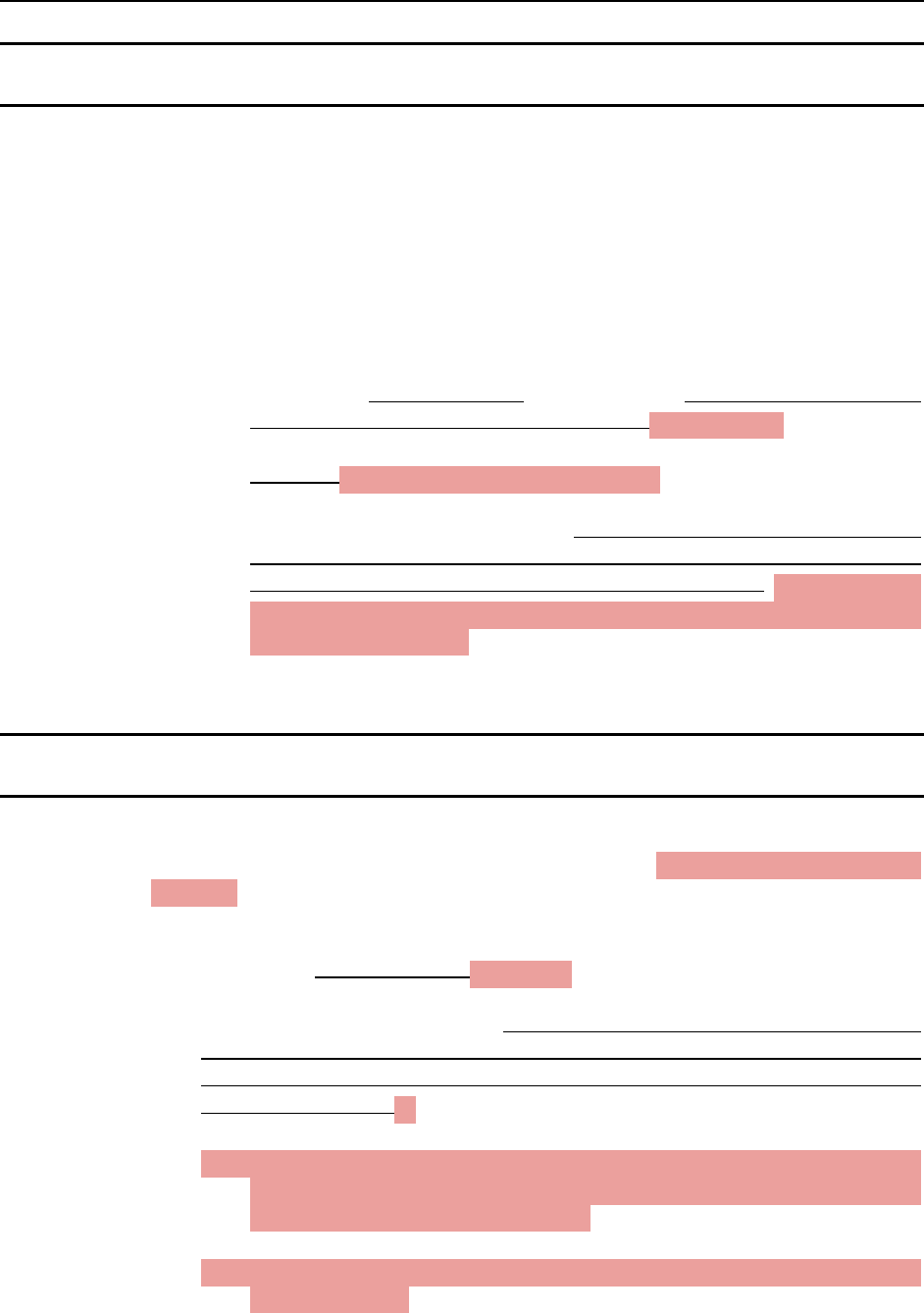
First Step Act—Drug Offenses
40 | April 27, 2023
§4A1.3. Departures Based on Inadequacy of Criminal History Category (Policy
Statement)
* * *
(b) DOWNWARD DEPARTURES.—
* * *
(3) LIMITATIONS.—
* * *
(B) LIMITATION ON APPLICABILITY OF §5C1.2 IN EVENT OF DOWNWARD
DEPARTURE TO CATEGORY I.—A defendant whose criminal history
category is Category I after receipt ofwho receives a downward
departure under this subsection does not meet the
criterioncriminal history requirement of subsection (a)(1) of
§5C1.2 (Limitation on Applicability of Statutory Maximum
Sentences in Certain Cases) if, before receipt of the downward
departure, the defendant had more than one criminal history
point under §4A1.1 (Criminal History Category) the defendant
did not otherwise meet such requirement before receipt of the
downward departure.
* * *
§5C1.2. Limitation on Applicability of Statutory Minimum Sentences in Certain
Cases
(a) Except as provided in subsection (b), in the case of an offense under
21 U.S.C. § 841, § 844, § 846, § 960, or § 963, or 46 U.S.C. § 70503 or
§ 70506, the court shall impose a sentence in accordance with the
applicable guidelines without regard to any statutory minimum sentence,
if the court finds that the defendant meets the criteria in 18 U.S.C.
§ 3553(f)(1)–(5) set forth belowas follows:
(1) the defendant does not have more than 1 criminal history point, as
determined under the sentencing guidelines before application of
subsection (b) of §4A1.3 (Departures Based on Inadequacy of Criminal
History Category);—
(A) more than 4 criminal history points, excluding any criminal
history points resulting from a 1-point offense, as determined
under the sentencing guidelines;
(B) a prior 3-point offense, as determined under the sentencing
guidelines; and

First Step Act—Drug Offenses
April 27, 2023 | 41
(C) a prior 2-point violent offense, as determined under the
sentencing guidelines;
(2) the defendant did not use violence or credible threats of violence or
possess a firearm or other dangerous weapon (or induce another
participant to do so) in connection with the offense;
(3) the offense did not result in death or serious bodily injury to any
person;
(4) the defendant was not an organizer, leader, manager, or supervisor of
others in the offense, as determined under the sentencing guidelines
and was not engaged in a continuing criminal enterprise, as defined
in 21 U.S.C. § 848; and
(5) not later than the time of the sentencing hearing, the defendant has
truthfully provided to the Government all information and evidence
the defendant has concerning the offense or offenses that were part of
the same course of conduct or of a common scheme or plan, but the
fact that the defendant has no relevant or useful other information to
provide or that the Government is already aware of the information
shall not preclude a determination by the court that the defendant
has complied with this requirement.
(b) In the case of a defendant (1) who meets the criteria set forth in
subsection (a); and (2) for whom the statutorily required minimum
sentence is at least five years, the offense level applicable from
Chapters Two (Offense Conduct) and Three (Adjustments) shall be not less
than level 17the applicable guideline range shall not be less than 24 to
30 months of imprisonment.
Commentary
Application Notes:
1. Definitions.—
“More than 1 criminal history point, as determined under the sentencing guidelines,” as
used in subsection (a)(1), means more than one criminal history point as determined under
§4A1.1 (Criminal History Category) before application of subsection (b) of §4A1.3 (Departures
Based on Inadequacy of Criminal History Category).
(A) The term “violent offense” means a “crime of violence,” as defined in 18 U.S.C. § 16, that
is punishable by imprisonment.
2. (B) “Dangerous weapon” and “firearm,” as used in subsection (a)(2), and “serious bodily
injury,” as used in subsection (a)(3), are defined in the Commentary to §1B1.1 (Application
Instructions).

First Step Act—Drug Offenses
42 | April 27, 2023
3. (C) “Offense,” as used in subsection (a)(2)–(4), and “offense or offenses that were part of
the same course of conduct or of a common scheme or plan,” as used in
subsection (a)(5), mean the offense of conviction and all relevant conduct.
42. Application of Subsection (a)(2).—Consistent with §1B1.3 (Relevant Conduct), the term
“defendant,” as used in subsection (a)(2), limits the accountability of the defendant to his own
conduct and conduct that he aided or abetted, counseled, commanded, induced, procured, or
willfully caused.
3. Application of Subsection (a)(4).—
5. (A) “Organizer, leader, manager, or supervisor of others in the offense”.—“Organizer,
leader, manager, or supervisor of others in the offense, as determined under the
sentencing guidelines,” as used inThe first prong of subsection (a)(4), means arequires
that the defendant who receiveswas not subject to an adjustment for an aggravating role
under §3B1.1 (Aggravating Role).
6. (B) “Engaged in a continuing criminal enterprise”.—“Engaged in a continuing
criminal enterprise,” as used in subsection (a)(4), is defined in 21 U.S.C. § 848(c). As a
practical matter, it should not be necessary to apply this prong of subsection (a)(4) because
(i) this section does not apply to a conviction under 21 U.S.C. § 848, and (ii) any defendant
who “engaged in a continuing criminal enterprise” but is convicted of an offense to which
this section applies will be an “organizer, leader, manager, or supervisor of others in the
offense.”
74. Use of Information Disclosed under Subsection (a).—Information disclosed by the
defendant with respect to subsection (a)(5) may be considered in determining the applicable
guideline range, except, where the use of such information is restricted under the provisions of
§1B1.8 (Use of Certain Information). That is, subsection (a)(5) does not provide an independent
basis for restricting the use of information disclosed by the defendantInformation disclosed by a
defendant under subsection (a) may not be used to enhance the sentence of the defendant unless
the information relates to a violent offense, as defined in Application Note 1(A).
85. Government’s Opportunity to Make Recommendation.—Under 18 U.S.C. § 3553(f), prior
to its determination, the court shall afford the government an opportunity to make a
recommendation. See also Fed. R. Crim. P. 32(f), (i).
96. Exemption from Otherwise Applicable Statutory Minimum Sentences.—A defendant
who meets the criteria under this section is exempt from any otherwise applicable statutory
minimum sentence of imprisonment and statutory minimum term of supervised release.
Background: This section sets forth the relevant provisions of 18 U.S.C. § 3553(f), as added by
section 80001(a) of the Violent Crime Control and Law Enforcement Act of 1994 and subsequently
amended, which limit the applicability of statutory minimum sentences in certain cases. Under the
authority of section 80001(b) of that Act, the Commission has promulgated application notes to provide
guidance in the application of 18 U.S.C. § 3553(f). See also H. Rep. No. 460, 103d Cong., 2d Sess. 3
(1994) (expressing intent to foster greater coordination between mandatory minimum sentencing and
the sentencing guideline system).
* * *

April 27, 2023 | 43
5. FAKE PILLS
Reason for Amendment: This amendment revises subsection (b)(13) of §2D1.1 (Unlawful
Manufacturing, Importing, Exporting, or Trafficking (Including Possession with Intent to
Commit These Offenses); Attempt or Conspiracy) to add a new subparagraph (B) with an
alternative 2-level enhancement for offenses where the defendant represented or marketed
as a legitimately manufactured drug another mixture or substance containing fentanyl or a
fentanyl analogue, and acted with willful blindness or conscious avoidance of knowledge
that such mixture or substance was not the legitimately manufactured drug. The new
subparagraph (B) refers to 21 U.S.C. § 321(g)(1) to define the term “drug.”
Since §2D1.1(b)(13)’s initial promulgation in 2018, the distribution of fentanyl and fentanyl
analogues has dramatically increased. The Drug Enforcement Administration reported a
substantial increase in the seizure of fake prescription pills, seizing over 50.6 million in
calendar year 2022, with 70 percent containing fentanyl. Of those seized pills containing
fentanyl, six out of ten contained a potentially lethal dose of the substance, according to lab
testing. Additionally, the Centers for Disease Control and Prevention (CDC) estimates
there were 107,622 drug overdose deaths in the United States in 2021, an increase of nearly
15 percent from the 93,655 deaths estimated in 2020. The CDC attributes 80,816 of the
drug overdose deaths in 2021 to synthetic opioids, primarily fentanyl.
Commission data also indicates an increase in fentanyl and fentanyl analogue offenses,
with fentanyl supplanting other drug types, such as crack cocaine and heroin, to become the
third most prevalent primary drug (12.6%) among federal drug offenses in fiscal year 2022.
In fiscal year 2017, 166 offenders were held accountable for fentanyl or fentanyl analogues.
By fiscal year 2022, the number of offenders increased to 2,511 offenders.
The new alternative 2-level enhancement reflects the increased culpability of an individual
who acted with willful blindness or conscious avoidance of knowledge that the substance
the individual represented or marketed as a legitimately manufactured drug contained
fentanyl or a fentanyl analogue. The Commission determined that the “willful blindness”
and “conscious avoidance” doctrines are “well established in criminal law,” as recognized by
the Supreme Court. See Glob.-Tech Appliances, Inc. v. SEB S.A., 563 U.S. 754, 766 (2011).
While appellate courts articulate the “willful blindness” or “conscious avoidance” doctrines
slightly differently, the requirement makes clear that the government bears the burden to
prove by a preponderance of the evidence that the enhancement applies based on the
subjective belief and deliberate action of the defendant committing the offense.
Amendment:
§2D1.1. Unlawful Manufacturing, Importing, Exporting, or Trafficking (Including
Possession with Intent to Commit These Offenses); Attempt or Conspiracy
(a) Base Offense Level (Apply the greatest):

Fake Pills
44 | April 27, 2023
(1) 43, if the defendant is convicted under 21 U.S.C. § 841(b)(1)(A),
(b)(1)(B), or (b)(1)(C), or 21 U.S.C. § 960(b)(1), (b)(2), or (b)(3), and the
offense of conviction establishes that death or serious bodily injury
resulted from the use of the substance and that the defendant
committed the offense after one or more prior convictions for a similar
offense; or
(2) 38, if the defendant is convicted under 21 U.S.C. § 841(b)(1)(A),
(b)(1)(B), or (b)(1)(C), or 21 U.S.C. § 960(b)(1), (b)(2), or (b)(3), and the
offense of conviction establishes that death or serious bodily injury
resulted from the use of the substance; or
(3) 30, if the defendant is convicted under 21 U.S.C. § 841(b)(1)(E) or
21 U.S.C. § 960(b)(5), and the offense of conviction establishes that
death or serious bodily injury resulted from the use of the substance
and that the defendant committed the offense after one or more prior
convictions for a similar offense; or
(4) 26, if the defendant is convicted under 21 U.S.C. § 841(b)(1)(E) or
21 U.S.C. § 960(b)(5), and the offense of conviction establishes that
death or serious bodily injury resulted from the use of the substance;
or
(5) the offense level specified in the Drug Quantity Table set forth in
subsection (c), except that if (A) the defendant receives an adjustment
under §3B1.2 (Mitigating Role); and (B) the base offense level under
subsection (c) is (i) level 32, decrease by 2 levels; (ii) level 34 or
level 36, decrease by 3 levels; or (iii) level 38, decrease by 4 levels. If
the resulting offense level is greater than level 32 and the defendant
receives the 4-level (“minimal participant”) reduction in §3B1.2(a),
decrease to level 32.
(b) Specific Offense Characteristics
(1) If a dangerous weapon (including a firearm) was possessed, increase
by 2 levels.
(2) If the defendant used violence, made a credible threat to use violence,
or directed the use of violence, increase by 2 levels.
(3) If the defendant unlawfully imported or exported a controlled
substance under circumstances in which (A) an aircraft other than a
regularly scheduled commercial air carrier was used to import or
export the controlled substance, (B) a submersible vessel or semi-
submersible vessel as described in 18 U.S.C. § 2285 was used, or
(C) the defendant acted as a pilot, copilot, captain, navigator, flight

Fake Pills
April 27, 2023 | 45
officer, or any other operation officer aboard any craft or vessel
carrying a controlled substance, increase by 2 levels. If the resulting
offense level is less than level 26, increase to level 26.
(4) If the object of the offense was the distribution of a controlled
substance in a prison, correctional facility, or detention facility,
increase by 2 levels.
(5) If (A) the offense involved the importation of amphetamine or
methamphetamine or the manufacture of amphetamine or
methamphetamine from listed chemicals that the defendant knew
were imported unlawfully, and (B) the defendant is not subject to an
adjustment under §3B1.2 (Mitigating Role), increase by 2 levels.
(6) If the defendant is convicted under 21 U.S.C. § 865, increase by
2 levels.
(7) If the defendant, or a person for whose conduct the defendant is
accountable under §1B1.3 (Relevant Conduct), distributed a
controlled substance through mass-marketing by means of an
interactive computer service, increase by 2 levels.
(8) If the offense involved the distribution of an anabolic steroid and a
masking agent, increase by 2 levels.
(9) If the defendant distributed an anabolic steroid to an athlete, increase
by 2 levels.
(10) If the defendant was convicted under 21 U.S.C. § 841(g)(1)(A),
increase by 2 levels.
(11) If the defendant bribed, or attempted to bribe, a law enforcement
officer to facilitate the commission of the offense, increase by 2 levels.
(12) If the defendant maintained a premises for the purpose of
manufacturing or distributing a controlled substance, increase by
2 levels.
(13) If the defendant (A) knowingly misrepresented or knowingly
marketed as another substance a mixture or substance containing
fentanyl (N-phenyl-N-[1-(2-phenylethyl )-4-piperidinyl] propanamide)
or a fentanyl analogue, increase by 4 levels; or (B) represented or
marketed as a legitimately manufactured drug another mixture or
substance containing fentanyl (N-phenyl-N-[1-(2-phenylethyl )-4-
piperidinyl] propanamide) or a fentanyl analogue, and acted with
willful blindness or conscious avoidance of knowledge that such

Fake Pills
46 | April 27, 2023
mixture or substance was not the legitimately manufactured drug,
increase by 2 levels. The term “drug,” as used in subsection (b)(13)(B),
has the meaning given that term in 21 U.S.C. § 321(g)(1).
(14) (Apply the greatest):
(A) If the offense involved (i) an unlawful discharge, emission, or
release into the environment of a hazardous or toxic substance;
or (ii) the unlawful transportation, treatment, storage, or
disposal of a hazardous waste, increase by 2 levels.
(B) If the defendant was convicted under 21 U.S.C. § 860a of
distributing, or possessing with intent to distribute,
methamphetamine on premises where a minor is present or
resides, increase by 2 levels. If the resulting offense level is less
than level 14, increase to level 14.
(C) If—
(i) the defendant was convicted under 21 U.S.C. § 860a of
manufacturing, or possessing with intent to manufacture,
methamphetamine on premises where a minor is present or
resides; or
(ii) the offense involved the manufacture of amphetamine or
methamphetamine and the offense created a substantial
risk of harm to (I) human life other than a life described in
subdivision (D); or (II) the environment,
increase by 3 levels. If the resulting offense level is less than
level 27, increase to level 27.
(D) If the offense (i) involved the manufacture of amphetamine or
methamphetamine; and (ii) created a substantial risk of harm to
the life of a minor or an incompetent, increase by 6 levels. If the
resulting offense level is less than level 30, increase to level 30.
(15) If (A) the offense involved the cultivation of marihuana on state or
federal land or while trespassing on tribal or private land; and (B) the
defendant receives an adjustment under §3B1.1 (Aggravating Role),
increase by 2 levels.
(16) If the defendant receives an adjustment under §3B1.1 (Aggravating
Role) and the offense involved 1 or more of the following factors:

Fake Pills
April 27, 2023 | 47
(A) (i) the defendant used fear, impulse, friendship, affection, or
some combination thereof to involve another individual in the
illegal purchase, sale, transport, or storage of controlled
substances, (ii) the individual received little or no compensation
from the illegal purchase, sale, transport, or storage of controlled
substances, and (iii) the individual had minimal knowledge of the
scope and structure of the enterprise;
(B) the defendant, knowing that an individual was (i) less than
18 years of age, (ii) 65 or more years of age, (iii) pregnant, or
(iv) unusually vulnerable due to physical or mental condition or
otherwise particularly susceptible to the criminal conduct,
distributed a controlled substance to that individual or involved
that individual in the offense;
(C) the defendant was directly involved in the importation of a
controlled substance;
(D) the defendant engaged in witness intimidation, tampered with or
destroyed evidence, or otherwise obstructed justice in connection
with the investigation or prosecution of the offense;
(E) the defendant committed the offense as part of a pattern of
criminal conduct engaged in as a livelihood,
increase by 2 levels.
(17) If the defendant receives the 4-level (“minimal participant”) reduction
in §3B1.2(a) and the offense involved all of the following factors:
(A) the defendant was motivated by an intimate or familial
relationship or by threats or fear to commit the offense and was
otherwise unlikely to commit such an offense;
(B) the defendant received no monetary compensation from the
illegal purchase, sale, transport, or storage of controlled
substances; and
(C) the defendant had minimal knowledge of the scope and structure
of the enterprise,
decrease by 2 levels.
(18) If the defendant meets the criteria set forth in subdivisions (1)–(5) of
subsection (a) of §5C1.2 (Limitation on Applicability of Statutory
Minimum Sentences in Certain Cases), decrease by 2 levels.

Fake Pills
48 | April 27, 2023
[Subsection (c) (Drug Quantity Table) is set forth after subsection (e) (Special
Instruction).]
(d) Cross References
(1) If a victim was killed under circumstances that would constitute
murder under 18 U.S.C. § 1111 had such killing taken place within
the territorial or maritime jurisdiction of the United States, apply
§2A1.1 (First Degree Murder) or §2A1.2 (Second Degree Murder), as
appropriate, if the resulting offense level is greater than that
determined under this guideline.
(2) If the defendant was convicted under 21 U.S.C. § 841(b)(7) (of
distributing a controlled substance with intent to commit a crime of
violence), apply §2X1.1 (Attempt, Solicitation, or Conspiracy) in
respect to the crime of violence that the defendant committed, or
attempted or intended to commit, if the resulting offense level is
greater than that determined above.
(e) Special Instruction
(1) If (A) subsection (d)(2) does not apply; and (B) the defendant
committed, or attempted to commit, a sexual offense against another
individual by distributing, with or without that individual’s
knowledge, a controlled substance to that individual, an adjustment
under §3A1.1(b)(1) shall apply.
(c) DRUG QUANTITY TABLE
CONTROLLED SUBSTANCES AND QUANTITY* BASE OFFENSE LEVEL
(1) 90 KG or more of Heroin; Level 38
450 KG or more of Cocaine;
25.2 KG or more of Cocaine Base;
90 KG or more of PCP, or 9 KG or more of PCP (actual);
45 KG or more of Methamphetamine, or
4.5 KG or more of Methamphetamine (actual), or
4.5 KG or more of “Ice”;
45 KG or more of Amphetamine, or
4.5 KG or more of Amphetamine (actual);
900 G or more of LSD;
36 KG or more of Fentanyl (N-phenyl-N-[1-(2-phenylethyl)-4-piperidinyl] Propanamide);
9 KG or more of a Fentanyl Analogue;
90,000 KG or more of Marihuana;
18,000 KG or more of Hashish;
1,800 KG or more of Hashish Oil;

Fake Pills
April 27, 2023 | 49
90,000,000 units or more of Ketamine;
90,000,000 units or more of Schedule I or II Depressants;
5,625,000 units or more of Flunitrazepam;
90,000 KG or more of Converted Drug Weight.
(2) At least 30 KG but less than 90 KG of Heroin; Level 36
At least 150 KG but less than 450 KG of Cocaine;
At least 8.4 KG but less than 25.2 KG of Cocaine Base;
At least 30 KG but less than 90 KG of PCP, or
at least 3 KG but less than 9 KG of PCP (actual);
At least 15 KG but less than 45 KG of Methamphetamine, or
at least 1.5 KG but less than 4.5 KG of Methamphetamine (actual), or
at least 1.5 KG but less than 4.5 KG of “Ice”;
At least 15 KG but less than 45 KG of Amphetamine, or
at least 1.5 KG but less than 4.5 KG of Amphetamine (actual);
At least 300 G but less than 900 G of LSD;
At least 12 KG but less than 36 KG of Fentanyl (N-phenyl-N-[1-(2-phenylethyl)-4-piperidinyl]
Propanamide);
At least 3 KG but less than 9 KG of a Fentanyl Analogue;
At least 30,000 KG but less than 90,000 KG of Marihuana;
At least 6,000 KG but less than 18,000 KG of Hashish;
At least 600 KG but less than 1,800 KG of Hashish Oil;
At least 30,000,000 units but less than 90,000,000 units of Ketamine;
At least 30,000,000 units but less than 90,000,000 units of Schedule I or II Depressants;
At least 1,875,000 units but less than 5,625,000 units of Flunitrazepam;
At least 30,000 KG but less than 90,000 KG of Converted Drug Weight.
(3) At least 10 KG but less than 30 KG of Heroin; Level 34
At least 50 KG but less than 150 KG of Cocaine;
At least 2.8 KG but less than 8.4 KG of Cocaine Base;
At least 10 KG but less than 30 KG of PCP, or
at least 1 KG but less than 3 KG of PCP (actual);
At least 5 KG but less than 15 KG of Methamphetamine, or
at least 500 G but less than 1.5 KG of Methamphetamine (actual), or
at least 500 G but less than 1.5 KG of “Ice”;
At least 5 KG but less than 15 KG of Amphetamine, or
at least 500 G but less than 1.5 KG of Amphetamine (actual);
At least 100 G but less than 300 G of LSD;
At least 4 KG but less than 12 KG of Fentanyl (N-phenyl-N-[1-(2-phenylethyl)-4-piperidinyl]
Propanamide);
At least 1 KG but less than 3 KG of a Fentanyl Analogue;
At least 10,000 KG but less than 30,000 KG of Marihuana;
At least 2,000 KG but less than 6,000 KG of Hashish;
At least 200 KG but less than 600 KG of Hashish Oil;
At least 10,000,000 but less than 30,000,000 units of Ketamine;
At least 10,000,000 but less than 30,000,000 units of Schedule I or II Depressants;
At least 625,000 but less than 1,875,000 units of Flunitrazepam;
At least 10,000 KG but less than 30,000 KG of Converted Drug Weight.
(4) At least 3 KG but less than 10 KG of Heroin; Level 32
At least 15 KG but less than 50 KG of Cocaine;
At least 840 G but less than 2.8 KG of Cocaine Base;

Fake Pills
50 | April 27, 2023
At least 3 KG but less than 10 KG of PCP, or
at least 300 G but less than 1 KG of PCP (actual);
At least 1.5 KG but less than 5 KG of Methamphetamine, or
at least 150 G but less than 500 G of Methamphetamine (actual), or
at least 150 G but less than 500 G of “Ice”;
At least 1.5 KG but less than 5 KG of Amphetamine, or
at least 150 G but less than 500 G of Amphetamine (actual);
At least 30 G but less than 100 G of LSD;
At least 1.2 KG but less than 4 KG of Fentanyl (N-phenyl-N-[1-(2-phenylethyl)-4-piperidinyl]
Propanamide);
At least 300 G but less than 1 KG of a Fentanyl Analogue;
At least 3,000 KG but less than 10,000 KG of Marihuana;
At least 600 KG but less than 2,000 KG of Hashish;
At least 60 KG but less than 200 KG of Hashish Oil;
At least 3,000,000 but less than 10,000,000 units of Ketamine;
At least 3,000,000 but less than 10,000,000 units of Schedule I or II Depressants;
At least 187,500 but less than 625,000 units of Flunitrazepam;
At least 3,000 KG but less than 10,000 KG of Converted Drug Weight.
(5) At least 1 KG but less than 3 KG of Heroin; Level 30
At least 5 KG but less than 15 KG of Cocaine;
At least 280 G but less than 840 G of Cocaine Base;
At least 1 KG but less than 3 KG of PCP, or
at least 100 G but less than 300 G of PCP (actual);
At least 500 G but less than 1.5 KG of Methamphetamine, or
at least 50 G but less than 150 G of Methamphetamine (actual), or
at least 50 G but less than 150 G of “Ice”;
At least 500 G but less than 1.5 KG of Amphetamine, or
at least 50 G but less than 150 G of Amphetamine (actual);
At least 10 G but less than 30 G of LSD;
At least 400 G but less than 1.2 KG of Fentanyl (N-phenyl-N-[1-(2-phenylethyl)-4-piperidinyl]
Propanamide);
At least 100 G but less than 300 G of a Fentanyl Analogue;
At least 1,000 KG but less than 3,000 KG of Marihuana;
At least 200 KG but less than 600 KG of Hashish;
At least 20 KG but less than 60 KG of Hashish Oil;
At least 1,000,000 but less than 3,000,000 units of Ketamine;
At least 1,000,000 but less than 3,000,000 units of Schedule I or II Depressants;
At least 62,500 but less than 187,500 units of Flunitrazepam;
At least 1,000 KG but less than 3,000 KG of Converted Drug Weight.
(6) At least 700 G but less than 1 KG of Heroin; Level 28
At least 3.5 KG but less than 5 KG of Cocaine;
At least 196 G but less than 280 G of Cocaine Base;
At least 700 G but less than 1 KG of PCP, or
at least 70 G but less than 100 G of PCP (actual);
At least 350 G but less than 500 G of Methamphetamine, or
at least 35 G but less than 50 G of Methamphetamine (actual), or
at least 35 G but less than 50 G of “Ice”;
At least 350 G but less than 500 G of Amphetamine, or
at least 35 G but less than 50 G of Amphetamine (actual);
At least 7 G but less than 10 G of LSD;

Fake Pills
April 27, 2023 | 51
At least 280 G but less than 400 G of Fentanyl (N-phenyl-N-[1-(2-phenylethyl)-4-piperidinyl]
Propanamide);
At least 70 G but less than 100 G of a Fentanyl Analogue;
At least 700 KG but less than 1,000 KG of Marihuana;
At least 140 KG but less than 200 KG of Hashish;
At least 14 KG but less than 20 KG of Hashish Oil;
At least 700,000 but less than 1,000,000 units of Ketamine;
At least 700,000 but less than 1,000,000 units of Schedule I or II Depressants;
At least 43,750 but less than 62,500 units of Flunitrazepam;
At least 700 KG but less than 1,000 KG of Converted Drug Weight.
(7) At least 400 G but less than 700 G of Heroin; Level 26
At least 2 KG but less than 3.5 KG of Cocaine;
At least 112 G but less than 196 G of Cocaine Base;
At least 400 G but less than 700 G of PCP, or
at least 40 G but less than 70 G of PCP (actual);
At least 200 G but less than 350 G of Methamphetamine, or
at least 20 G but less than 35 G of Methamphetamine (actual), or
at least 20 G but less than 35 G of “Ice”;
At least 200 G but less than 350 G of Amphetamine, or
at least 20 G but less than 35 G of Amphetamine (actual);
At least 4 G but less than 7 G of LSD;
At least 160 G but less than 280 G of Fentanyl (N-phenyl-N-[1-(2-phenylethyl)-4-piperidinyl]
Propanamide);
At least 40 G but less than 70 G of a Fentanyl Analogue;
At least 400 KG but less than 700 KG of Marihuana;
At least 80 KG but less than 140 KG of Hashish;
At least 8 KG but less than 14 KG of Hashish Oil;
At least 400,000 but less than 700,000 units of Ketamine;
At least 400,000 but less than 700,000 units of Schedule I or II Depressants;
At least 25,000 but less than 43,750 units of Flunitrazepam;
At least 400 KG but less than 700 KG of Converted Drug Weight.
(8) At least 100 G but less than 400 G of Heroin; Level 24
At least 500 G but less than 2 KG of Cocaine;
At least 28 G but less than 112 G of Cocaine Base;
At least 100 G but less than 400 G of PCP, or
at least 10 G but less than 40 G of PCP (actual);
At least 50 G but less than 200 G of Methamphetamine, or
at least 5 G but less than 20 G of Methamphetamine (actual), or
at least 5 G but less than 20 G of “Ice”;
At least 50 G but less than 200 G of Amphetamine, or
at least 5 G but less than 20 G of Amphetamine (actual);
At least 1 G but less than 4 G of LSD;
At least 40 G but less than 160 G of Fentanyl (N-phenyl-N-[1-(2-phenylethyl)-4-piperidinyl]
Propanamide);
At least 10 G but less than 40 G of a Fentanyl Analogue;
At least 100 KG but less than 400 KG of Marihuana;
At least 20 KG but less than 80 KG of Hashish;
At least 2 KG but less than 8 KG of Hashish Oil;
At least 100,000 but less than 400,000 units of Ketamine;
At least 100,000 but less than 400,000 units of Schedule I or II Depressants;
At least 6,250 but less than 25,000 units of Flunitrazepam;

Fake Pills
52 | April 27, 2023
At least 100 KG but less than 400 KG of Converted Drug Weight.
(9) At least 80 G but less than 100 G of Heroin; Level 22
At least 400 G but less than 500 G of Cocaine;
At least 22.4 G but less than 28 G of Cocaine Base;
At least 80 G but less than 100 G of PCP, or
at least 8 G but less than 10 G of PCP (actual);
At least 40 G but less than 50 G of Methamphetamine, or
at least 4 G but less than 5 G of Methamphetamine (actual), or
at least 4 G but less than 5 G of “Ice”;
At least 40 G but less than 50 G of Amphetamine, or
at least 4 G but less than 5 G of Amphetamine (actual);
At least 800 MG but less than 1 G of LSD;
At least 32 G but less than 40 G of Fentanyl (N-phenyl-N-[1-(2-phenylethyl)-4-piperidinyl]
Propanamide);
At least 8 G but less than 10 G of a Fentanyl Analogue;
At least 80 KG but less than 100 KG of Marihuana;
At least 16 KG but less than 20 KG of Hashish;
At least 1.6 KG but less than 2 KG of Hashish Oil;
At least 80,000 but less than 100,000 units of Ketamine;
At least 80,000 but less than 100,000 units of Schedule I or II Depressants;
At least 5,000 but less than 6,250 units of Flunitrazepam;
At least 80 KG but less than 100 KG of Converted Drug Weight.
(10) At least 60 G but less than 80 G of Heroin; Level 20
At least 300 G but less than 400 G of Cocaine;
At least 16.8 G but less than 22.4 G of Cocaine Base;
At least 60 G but less than 80 G of PCP, or
at least 6 G but less than 8 G of PCP (actual);
At least 30 G but less than 40 G of Methamphetamine, or
at least 3 G but less than 4 G of Methamphetamine (actual), or
at least 3 G but less than 4 G of “Ice”;
At least 30 G but less than 40 G of Amphetamine, or
at least 3 G but less than 4 G of Amphetamine (actual);
At least 600 MG but less than 800 MG of LSD;
At least 24 G but less than 32 G of Fentanyl (N-phenyl-N-[1-(2-phenylethyl)-4-piperidinyl]
Propanamide);
At least 6 G but less than 8 G of a Fentanyl Analogue;
At least 60 KG but less than 80 KG of Marihuana;
At least 12 KG but less than 16 KG of Hashish;
At least 1.2 KG but less than 1.6 KG of Hashish Oil;
At least 60,000 but less than 80,000 units of Ketamine;
At least 60,000 but less than 80,000 units of Schedule I or II Depressants;
60,000 units or more of Schedule III substances (except Ketamine);
At least 3,750 but less than 5,000 units of Flunitrazepam;
At least 60 KG but less than 80 KG of Converted Drug Weight.
(11) At least 40 G but less than 60 G of Heroin; Level 18
At least 200 G but less than 300 G of Cocaine;
At least 11.2 G but less than 16.8 G of Cocaine Base;
At least 40 G but less than 60 G of PCP, or
at least 4 G but less than 6 G of PCP (actual);

Fake Pills
April 27, 2023 | 53
At least 20 G but less than 30 G of Methamphetamine, or
at least 2 G but less than 3 G of Methamphetamine (actual), or
at least 2 G but less than 3 G of “Ice”;
At least 20 G but less than 30 G of Amphetamine, or
at least 2 G but less than 3 G of Amphetamine (actual);
At least 400 MG but less than 600 MG of LSD;
At least 16 G but less than 24 G of Fentanyl (N-phenyl-N-[1-(2-phenylethyl)-4-piperidinyl]
Propanamide);
At least 4 G but less than 6 G of a Fentanyl Analogue;
At least 40 KG but less than 60 KG of Marihuana;
At least 8 KG but less than 12 KG of Hashish;
At least 800 G but less than 1.2 KG of Hashish Oil;
At least 40,000 but less than 60,000 units of Ketamine;
At least 40,000 but less than 60,000 units of Schedule I or II Depressants;
At least 40,000 but less than 60,000 units of Schedule III substances (except Ketamine);
At least 2,500 but less than 3,750 units of Flunitrazepam;
At least 40 KG but less than 60 KG of Converted Drug Weight.
(12) At least 20 G but less than 40 G of Heroin; Level 16
At least 100 G but less than 200 G of Cocaine;
At least 5.6 G but less than 11.2 G of Cocaine Base;
At least 20 G but less than 40 G of PCP, or
at least 2 G but less than 4 G of PCP (actual);
At least 10 G but less than 20 G of Methamphetamine, or
at least 1 G but less than 2 G of Methamphetamine (actual), or
at least 1 G but less than 2 G of “Ice”;
At least 10 G but less than 20 G of Amphetamine, or
at least 1 G but less than 2 G of Amphetamine (actual);
At least 200 MG but less than 400 MG of LSD;
At least 8 G but less than 16 G of Fentanyl (N-phenyl-N-[1-(2-phenylethyl)-4-piperidinyl]
Propanamide);
At least 2 G but less than 4 G of a Fentanyl Analogue;
At least 20 KG but less than 40 KG of Marihuana;
At least 5 KG but less than 8 KG of Hashish;
At least 500 G but less than 800 G of Hashish Oil;
At least 20,000 but less than 40,000 units of Ketamine;
At least 20,000 but less than 40,000 units of Schedule I or II Depressants;
At least 20,000 but less than 40,000 units of Schedule III substances (except Ketamine);
At least 1,250 but less than 2,500 units of Flunitrazepam;
At least 20 KG but less than 40 KG of Converted Drug Weight.
(13) At least 10 G but less than 20 G of Heroin; Level 14
At least 50 G but less than 100 G of Cocaine;
At least 2.8 G but less than 5.6 G of Cocaine Base;
At least 10 G but less than 20 G of PCP, or
at least 1 G but less than 2 G of PCP (actual);
At least 5 G but less than 10 G of Methamphetamine, or
at least 500 MG but less than 1 G of Methamphetamine (actual), or
at least 500 MG but less than 1 G of “Ice”;
At least 5 G but less than 10 G of Amphetamine, or
at least 500 MG but less than 1 G of Amphetamine (actual);
At least 100 MG but less than 200 MG of LSD;

Fake Pills
54 | April 27, 2023
At least 4 G but less than 8 G of Fentanyl (N-phenyl-N-[1-(2-phenylethyl)-4-piperidinyl]
Propanamide);
At least 1 G but less than 2 G of a Fentanyl Analogue;
At least 10 KG but less than 20 KG of Marihuana;
At least 2 KG but less than 5 KG of Hashish;
At least 200 G but less than 500 G of Hashish Oil;
At least 10,000 but less than 20,000 units of Ketamine;
At least 10,000 but less than 20,000 units of Schedule I or II Depressants;
At least 10,000 but less than 20,000 units of Schedule III substances (except Ketamine);
At least 625 but less than 1,250 units of Flunitrazepam;
At least 10 KG but less than 20 KG of Converted Drug Weight.
(14) Less than 10 G of Heroin; Level 12
Less than 50 G of Cocaine;
Less than 2.8 G of Cocaine Base;
Less than 10 G of PCP, or
less than 1 G of PCP (actual);
Less than 5 G of Methamphetamine, or
less than 500 MG of Methamphetamine (actual), or
less than 500 MG of “Ice”;
Less than 5 G of Amphetamine, or
less than 500 MG of Amphetamine (actual);
Less than 100 MG of LSD;
Less than 4 G of Fentanyl (N-phenyl-N-[1-(2-phenylethyl)-4-piperidinyl] Propanamide);
Less than 1 G of a Fentanyl Analogue;
At least 5 KG but less than 10 KG of Marihuana;
At least 1 KG but less than 2 KG of Hashish;
At least 100 G but less than 200 G of Hashish Oil;
At least 5,000 but less than 10,000 units of Ketamine;
At least 5,000 but less than 10,000 units of Schedule I or II Depressants;
At least 5,000 but less than 10,000 units of Schedule III substances (except Ketamine);
At least 312 but less than 625 units of Flunitrazepam;
80,000 units or more of Schedule IV substances (except Flunitrazepam);
At least 5 KG but less than 10 KG of Converted Drug Weight.
(15) At least 2.5 KG but less than 5 KG of Marihuana; Level 10
At least 500 G but less than 1 KG of Hashish;
At least 50 G but less than 100 G of Hashish Oil;
At least 2,500 but less than 5,000 units of Ketamine;
At least 2,500 but less than 5,000 units of Schedule I or II Depressants;
At least 2,500 but less than 5,000 units of Schedule III substances (except Ketamine);
At least 156 but less than 312 units of Flunitrazepam;
At least 40,000 but less than 80,000 units of Schedule IV substances (except
Flunitrazepam);
At least 2.5 KG but less than 5 KG of Converted Drug Weight.
(16) At least 1 KG but less than 2.5 KG of Marihuana; Level 8
At least 200 G but less than 500 G of Hashish;
At least 20 G but less than 50 G of Hashish Oil;
At least 1,000 but less than 2,500 units of Ketamine;
At least 1,000 but less than 2,500 units of Schedule I or II Depressants;
At least 1,000 but less than 2,500 units of Schedule III substances (except Ketamine);
Less than 156 units of Flunitrazepam;

Fake Pills
April 27, 2023 | 55
At least 16,000 but less than 40,000 units of Schedule IV substances (except
Flunitrazepam);
160,000 units or more of Schedule V substances;
At least 1 KG but less than 2.5 KG of Converted Drug Weight.
(17) Less than 1 KG of Marihuana;
Level 6
Less than 200 G of Hashish;
Less than 20 G of Hashish Oil;
Less than 1,000 units of Ketamine;
Less than 1,000 units of Schedule I or II Depressants;
Less than 1,000 units of Schedule III substances (except Ketamine);
Less than 16,000 units of Schedule IV substances (except Flunitrazepam);
Less than 160,000 units of Schedule V substances;
Less than 1 KG of Converted Drug Weight.
*Notes to Drug Quantity Table:
(A) Unless otherwise specified, the weight of a controlled substance set forth in the table
refers to the entire weight of any mixture or substance containing a detectable
amount of the controlled substance. If a mixture or substance contains more than
one controlled substance, the weight of the entire mixture or substance is assigned
to the controlled substance that results in the greater offense level.
(B) The terms “PCP (actual)”, “Amphetamine (actual)”, and “Methamphetamine
(actual)” refer to the weight of the controlled substance, itself, contained in the
mixture or substance. For example, a mixture weighing 10 grams containing PCP at
50% purity contains 5 grams of PCP (actual). In the case of a mixture or substance
containing PCP, amphetamine, or methamphetamine, use the offense level
determined by the entire weight of the mixture or substance, or the offense level
determined by the weight of the PCP (actual), amphetamine (actual), or
methamphetamine (actual), whichever is greater.
The terms “Hydrocodone (actual)” and “Oxycodone (actual)” refer to the weight
of the controlled substance, itself, contained in the pill, capsule, or mixture.
(C) “Ice,” for the purposes of this guideline, means a mixture or substance containing
d-methamphetamine hydrochloride of at least 80% purity.
(D) “Cocaine base,” for the purposes of this guideline, means “crack.” “Crack” is the
street name for a form of cocaine base, usually prepared by processing cocaine
hydrochloride and sodium bicarbonate, and usually appearing in a lumpy, rocklike
form.
(E) In the case of an offense involving marihuana plants, treat each plant, regardless of
sex, as equivalent to 100 grams of marihuana. Provided, however, that if the actual
weight of the marihuana is greater, use the actual weight of the marihuana.

Fake Pills
56 | April 27, 2023
(F) In the case of Schedule I or II Depressants (except gamma-hydroxybutyric acid),
Schedule III substances, Schedule IV substances, and Schedule V substances, one
“unit” means one pill, capsule, or tablet. If the substance (except gamma-
hydroxybutyric acid) is in liquid form, one “unit” means 0.5 milliliters. For an
anabolic steroid that is not in a pill, capsule, tablet, or liquid form (e.g., patch, topical
cream, aerosol), the court shall determine the base offense level using a reasonable
estimate of the quantity of anabolic steroid involved in the offense. In making a
reasonable estimate, the court shall consider that each 25 milligrams of an anabolic
steroid is one “unit”.
(G) In the case of LSD on a carrier medium (e.g., a sheet of blotter paper), do not use the
weight of the LSD/carrier medium. Instead, treat each dose of LSD on the carrier
medium as equal to 0.4 milligrams of LSD for the purposes of the Drug Quantity
Table.
(H) Hashish, for the purposes of this guideline, means a resinous substance of cannabis
that includes (i) one or more of the tetrahydrocannabinols (as listed in 21 C.F.R.
§ 1308.11(d)(31)), (ii) at least two of the following: cannabinol, cannabidiol, or
cannabichromene, and (iii) fragments of plant material (such as cystolith fibers).
(I) Hashish oil, for the purposes of this guideline, means a preparation of the soluble
cannabinoids derived from cannabis that includes (i) one or more of the
tetrahydrocannabinols (as listed in 21 C.F.R. § 1308.11(d)(31)), (ii) at least two of
the following: cannabinol, cannabidiol, or cannabichromene, and (iii) is essentially
free of plant material (e.g., plant fragments). Typically, hashish oil is a viscous, dark
colored oil, but it can vary from a dry resin to a colorless liquid.
(J) Fentanyl analogue, for the purposes of this guideline, means any substance
(including any salt, isomer, or salt of isomer thereof), whether a controlled substance
or not, that has a chemical structure that is similar to fentanyl (N-phenyl-N-[1-(2-
phenylethyl)-4-piperidinyl] propanamide).
(K) The term “Converted Drug Weight,” for purposes of this guideline, refers to a
nominal reference designation that is used as a conversion factor in the Drug
Conversion Tables set forth in the Commentary below, to determine the offense level
for controlled substances that are not specifically referenced in the Drug Quantity
Table or when combining differing controlled substances.
* * *
April 27, 2023 | 57
6. FIREARMS OFFENSES
Reason for Amendment: This multi-part amendment responds to the directive in
section 12004(a)(5) of the Bipartisan Safer Communities Act, Pub. L. No. 117-159 (the
“Act”), addresses new offenses and other changes in law made by the Act, and revises the
primary firearms guideline, §2K2.1 (Unlawful Receipt, Possession, or Transportation of
Firearms or Ammunition; Prohibited Transactions Involving Firearms or Ammunition), to
account for firearms that are not marked with a serial number. In the Act, Congress
directed that the Commission:
shall review and amend its guidelines and policy statements to ensure that
persons convicted of an offense under section 932 or 933 of title 18, United
States Code, and other offenses applicable to the straw purchases and
trafficking of firearms are subject to increased penalties in comparison to
those currently provided by the guidelines and policy statements for such
straw purchasing and trafficking of firearms offenses. In its review, the
Commission shall consider, in particular, an appropriate amendment to
reflect the intent of Congress that straw purchasers without significant
criminal histories receive sentences that are sufficient to deter participation
in such activities and reflect the defendant’s role and culpability, and any
coercion, domestic violence survivor history, or other mitigating factors. The
Commission shall also review and amend its guidelines and policy statements
to reflect the intent of Congress that a person convicted of an offense under
section 932 or 933 of title 18, United States Code, who is affiliated with a
gang, cartel, organized crime ring, or other such enterprise should be subject
to higher penalties than an otherwise unaffiliated individual.
Pub. L. 117-159, §12004(a)(5), 136 Stat. 1313, 1328 (2022).
New Straw Purchase and Firearms Trafficking Offenses
The amendment makes two changes to account for the new offenses at 18 U.S.C. §§ 932
and 933 established by the Act. First, the amendment amends Appendix A (Statutory
Index) to reference the new offenses to §2K2.1. Section 12004(a)(1) of the Act makes it
unlawful to engage in straw purchasing of firearms (18 U.S.C. § 932) or trafficking in
firearms (18 U.S.C. § 933). Sections 932 and 933 both carry statutory maximum sentences
of 15 years of imprisonment. 18 U.S.C. §§ 932(c)(1), 933(b). The statutory maximum in
section 932 increases to 25 years where the defendant has reasonable cause to believe the
firearm would be used to commit a felony or certain other offenses. 18 U.S.C. § 932(c)(2). As
both offenses address conduct that is analogous to other firearms offenses, the Commission
determined that the most appropriate guideline is §2K2.1.
Second, the amendment revises §2K2.1 to set the base offense level for defendants convicted
of these crimes at level 14, or level 20 if the offense involved either a semiautomatic firearm
that is capable of accepting a large capacity magazine or a firearm described in 26 U.S.C.
§ 5845(a). The Commission set these base offense levels to the same levels applicable to
defendants convicted under a third statute used to prosecute straw purchasers and

Firearms Offenses
58 | April 27, 2023
traffickers with the same 15-year statutory maximum, 18 U.S.C. § 922(d), to ensure
proportionality.
Increase Penalties for Straw Purchasing and Trafficking Offenses
The amendment next revises §2K2.1 to respond to section 12004(a)(5) of the Act, which
directs the Commission to provide increased penalties for defendants convicted under
18 U.S.C. § 932, 18 U.S.C. § 933, or “other offenses applicable to the straw purchases and
trafficking of firearms.” Specifically, the amendment revises the existing “trafficking”
specific offense characteristic at §2K2.1(b)(5).
Prior to the amendment, subsection (b)(5) provided an enhancement of four levels “[i]f the
defendant engaged in the trafficking of firearms.” Application Note 13(A) provided that this
enhancement applied if the defendant transported, transferred, or otherwise disposed of
two or more firearms to another individual, or received two or more firearms with the
intent to transport, transfer, or otherwise dispose of firearms to another individual, whose
possession or receipt would be unlawful or who intended to use or dispose of the firearm
unlawfully. Application Note 13(B) defined a person whose possession or receipt would be
unlawful as an individual who (i) had a prior conviction for a crime of violence, a controlled
substance offense, or a misdemeanor crime of domestic violence; or (ii) at the time of the
offense was under a criminal justice sentence, including probation, parole, supervised
release, imprisonment, work release, or escape status.
The amendment revises subsection (b)(5) in three ways to comply with Congress’s directive
to include an increase for all defendants convicted under 18 U.S.C. § 932, 18 U.S.C. § 933,
or other offenses involving straw purchasing or trafficking of firearms.
First, the amendment creates a new subsection, §2K2.1(b)(5)(A), which provides a 2-level
enhancement for defendants convicted of illegally receiving a firearm under 18 U.S.C.
§ 933(a)(2) (the trafficking receipt provision) or § 933(a)(3) (attempting/conspiring to violate
section 933). This ensures that receipt-only defendants convicted under section 933 receive
the requisite increase.
Second, the amendment creates a new subsection, §2K2.1(b)(5)(B), which provides a 2-level
enhancement for any defendant engaged in straw purchasing or trafficking. This provision
incorporates the elements of the straw purchasing and firearms trafficking statutes,
including 18 U.S.C. § 922(d), § 932, and § 933(a)(1), to provide an increase for defendants
who attempted, conspired, or engaged in conduct involving the illicit transfer of a firearm or
ammunition but who would not have received the trafficking enhancement prior to the
amendment because of the limiting criteria in the existing Application Note 13. Those
criteria included trafficking two or more firearms and that the recipient have criminal
convictions for specified crimes.
Third, the amendment revises the criteria previously set forth in Application Notes 13(A)
and (B) and incorporates the criteria into subsection (b)(5)(C). New subsection (b)(5)(C)
provides an increase for defendants who attempted, conspired, or engaged in conduct
involving the illicit transfer of two or more firearms to a person who (i) had a prior
conviction of a crime of violence, controlled substance offense, or misdemeanor crime of
domestic violence; (ii) was under a criminal justice sentence at the time of the offense; or

Firearms Offenses
April 27, 2023 | 59
(iii) intended to use or dispose of the firearms unlawfully. The new subsection (b)(5)(C)
increases the enhancement from four levels to five levels to ensure straw purchasers and
firearms traffickers meeting these criteria receive increased penalties as required by the
directive.
The Commission determined that the expanded specific offense characteristic at
subsection (b)(5) fully implements the directive by ensuring that defendants who illegally
transfer a firearm receive an increased penalty under the guidelines. Specifically, the
enhancement is tailored to apply to the most culpable defendants who engage in (a) straw
purchasing, including those defendants who induce straw purchasing, and (b) firearms
trafficking, including those defendants whose conduct was “upstream” in the gun
trafficking pipeline. Consistent with the legislative history of the Act, public comment, and
witness testimony, the Commission determined that such an increase is appropriate to
reflect Congress’s view that such conduct contributes to the illegal flow of firearms and that
such defendants are currently under-punished as compared to felons in possession of the
trafficked weapons. At the same time, by incorporating the elements of the core straw
purchasing and firearms trafficking statutes, including the new offenses (sections 932
and 933), the new enhancement narrowly targets such defendants without also impacting
other firearms defendants who were not intended to receive an increase.
The amendment also makes two conforming changes. First, to conform with statutory
changes in 18 U.S.C. § 921(a)(33), the amended subsection (b)(5)(C) includes a proviso that
the enhancement does not apply by reason of the transferee’s prior misdemeanor crime of
domestic violence where the transferee’s rights were restored. Second, the amendment
amends the upward departure provision in Application Note 13(B) to conform the language
with the revised subsection (b)(5).
Increase Penalties for Organized Crime
The amendment next amends §2K2.1 to respond to section 12004(a)(5) of the Act, which
directs the Commission to increase penalties for defendants convicted under 18 U.S.C.
§ 932 or § 933 who are affiliated with organized crime. The amendment implements this
portion of the directive by creating a new specific offense characteristic providing for a 2-
level enhancement under §2K2.1(b)(8). Section 2K2.1(b)(8) applies to those defendants who
receive an increase at subsection (b)(5) and who committed the offense in connection with
the defendant’s participation in an organization of five or more persons, knowing, or acting
with willful blindness or conscious avoidance of knowledge, that the organization has as one
of its primary purposes the commission of criminal offenses.
To ensure that a defendant would not receive the enhancement based solely on evidence
unrelated to the criminal act or mere inclusion in gang databases, the enhancement
requires that the defendant committed the offense “in connection with” the defendant’s
“participation” in a criminal organization, and that the defendant knew or consciously
avoided knowledge of the criminal nature of the organization’s activities. As with other
amendments this year, the Commission determined that the doctrines of “willful blindness”
and “conscious avoidance” are “well established in criminal law.” See Glob.-Tech Appliances,
Inc. v. SEB S.A., 563 U.S. 754, 766, 769 (2011) (noting that, while the Courts of Appeals
articulate the “willful blindness” or “conscious avoidance” doctrines slightly differently,
“[the Courts of Appeals] all appear to agree on two basic requirements: (1) The defendant

Firearms Offenses
60 | April 27, 2023
must subjectively believe that there is a high probability that a fact exists and (2) the
defendant must take deliberate actions to avoid learning of that fact.”).
Finally, the Commission determined that a 2-level increase for defendants receiving this
enhancement is appropriate because specific offense characteristics accounting for other
aggravating factors, such as the number of firearms and the use or possession of any
firearm or ammunition in connection with another felony offense, may also apply to gang-
affiliated defendants in addition to the new enhancement at subsection (b)(8). Accordingly,
the Commission determined that an incremental 2-level enhancement appropriately and
adequately differentiates straw purchasing and firearms trafficking defendants affiliated
with organized crime from those who are unaffiliated.
Reduction for Mitigating Circumstances
The amendment amends §2K2.1 to respond to section 12004(a)(5) of the Act, which directs
the Commission to consider an amendment accounting for straw purchasers with
mitigating circumstances. The amendment implements this portion of the directive by
creating a new specific offense characteristic at §2K2.1(b)(9) providing a 2-level reduction
available to defendants who receive an increase at subsection (b)(5) and satisfy other
eligibility criteria. The amendment also deletes Application Note 15, which provided for a
downward departure for certain straw purchasers, because subsection (b)(9) provides a
reduction with broader criteria.
Consistent with congressional intent that the reduction apply to straw purchasers without
significant criminal histories, a defendant must have no more than 1 criminal history point
to qualify for the specific offense characteristic. Also consistent with congressional intent
that the Commission account for mitigating circumstances, the adjustment applies to a
defendant motivated by an intimate or familial relationship or by threats or fear who was
otherwise unlikely to commit such an offense, or to a defendant who was unusually
vulnerable due to physical or mental conditions. The Commission determined that such
qualifiers appropriately ensure that the reduction is not so broad as to include highly
culpable defendants, while also ensuring it is not so narrow as to exclude the less culpable
defendants.
Similarly, the Commission determined that a 2-level reduction is appropriate to ensure that
the magnitude of the reduction matches the magnitude of the increase provided in
subsections (b)(5)(A) and (B) so that qualifying defendants do not receive increased
penalties as a result of the amendment taken as a whole.
Firearms Not Marked with a Serial Number
Finally, the amendment amends §2K2.1 to account for privately made firearms not marked
with a serial number, commonly referred to as “ghost guns.” The amendment provides a 4-
level enhancement if the defendant knew that the offense involved a firearm not marked
with a serial number, or the defendant was willfully blind or consciously avoided knowing
this fact.
In adding the enhancement, the Commission concluded that there is no meaningful
distinction between a firearm with an obliterated serial number, which has long-triggered a

Firearms Offenses
April 27, 2023 | 61
4-level enhancement under §2K2.1(b)(4), and a firearm that is not marked with a serial
number. The Commission also concluded that firearms not marked with a serial number
share the traits that led the Commission to implement a 4-level enhancement for firearms
with altered or obliterated serial numbers: “difficulty in tracing firearms with altered or
obliterated serial numbers, and the increased market for these types of weapons.”
USSG App. C, amend. 691 (effective Nov. 1, 2006). Specifically, the Commission shared
concerns raised by the Department of Justice regarding the proliferation of ghost guns, the
increased frequency with which ghost guns are used in connection with criminal activity,
and the difficulty in tracing these firearms. Therefore, the Commission concluded that the
same 4-level enhancement applied in offenses involving an altered or obliterated serial
number is also appropriate for firearms not marked with a serial number.
The Commission determined that the enhancement should apply only to those defendants
who knew or consciously avoided knowing that the firearm was not marked with a serial
number. The amendment also specifically excepts firearms manufactured before the
effective date of the Gun Control Act of 1968, which imposed the requirement that federal
firearms licensees serialize newly manufactured or imported firearms.
The amendment also makes conforming changes to Application Note 8.
Amendment:
§2K2.1. Unlawful Receipt, Possession, or Transportation of Firearms or Ammunition;
Prohibited Transactions Involving Firearms or Ammunition
(a) Base Offense Level (Apply the Greatest):
(1) 26, if (A) the offense involved a (i) semiautomatic firearm that is
capable of accepting a large capacity magazine; or (ii) firearm that is
described in 26 U.S.C. § 5845(a); and (B) the defendant committed any
part of the instant offense subsequent to sustaining at least two felony
convictions of either a crime of violence or a controlled substance
offense;
(2) 24, if the defendant committed any part of the instant offense
subsequent to sustaining at least two felony convictions of either a
crime of violence or a controlled substance offense;
(3) 22, if (A) the offense involved a (i) semiautomatic firearm that is
capable of accepting a large capacity magazine; or (ii) firearm that is
described in 26 U.S.C. § 5845(a); and (B) the defendant committed any
part of the instant offense subsequent to sustaining one felony
conviction of either a crime of violence or a controlled substance
offense;

Firearms Offenses
62 | April 27, 2023
(4) 20, if—
(A) the defendant committed any part of the instant offense
subsequent to sustaining one felony conviction of either a crime
of violence or a controlled substance offense; or
(B) the (i) offense involved a (I) semiautomatic firearm that is
capable of accepting a large capacity magazine; or (II) firearm
that is described in 26 U.S.C. § 5845(a); and (ii) defendant (I) was
a prohibited person at the time the defendant committed the
instant offense; (II) is convicted under 18 U.S.C. § 922(d), § 932,
or § 933; or (III) is convicted under 18 U.S.C. § 922(a)(6) or
§ 924(a)(1)(A) and committed the offense with knowledge, intent,
or reason to believe that the offense would result in the transfer
of a firearm or ammunition to a prohibited person;
(5) 18, if the offense involved a firearm described in 26 U.S.C. § 5845(a);
(6) 14, if the defendant (A) was a prohibited person at the time the
defendant committed the instant offense; (B) is convicted under
18 U.S.C. § 922(d), § 932, or § 933; or (C) is convicted under 18 U.S.C.
§ 922(a)(6) or § 924(a)(1)(A) and committed the offense with
knowledge, intent, or reason to believe that the offense would result
in the transfer of a firearm or ammunition to a prohibited person;
(7) 12, except as provided below; or
(8) 6, if the defendant is convicted under 18 U.S.C. § 922(c), (e), (f), (m),
(s), (t), or (x)(1), or 18 U.S.C. § 1715.
(b) Specific Offense Characteristics
(1) If the offense involved three or more firearms, increase as follows:
NUMBER OF FIREARMS INCREASE IN LEVEL
(A) 3–7 add 2
(B) 8–24 add 4
(C) 25–99 add 6
(D) 100–199 add 8
(E) 200 or more add 10.
(2) If the defendant, other than a defendant subject to subsection (a)(1),
(a)(2), (a)(3), (a)(4), or (a)(5), possessed all ammunition and firearms
solely for lawful sporting purposes or collection, and did not
unlawfully discharge or otherwise unlawfully use such firearms or
ammunition, decrease the offense level determined above to level 6.

Firearms Offenses
April 27, 2023 | 63
(3) If the offense involved—
(A) a destructive device that is a portable rocket, a missile, or a
device for use in launching a portable rocket or a missile, increase
by 15 levels; or
(B) a destructive device other than a destructive device referred to in
subdivision (A), increase by 2 levels.
(4) If (A) any firearm (A) was stolen, increase by 2 levels; or (B)(i) any
firearm had an altered or obliterated serial number; or (ii) the
defendant knew that any firearm involved in the offense was not
otherwise marked with a serial number (other than a firearm
manufactured prior to the effective date of the Gun Control Act
of 1968) or was willfully blind to or consciously avoided knowledge of
such fact, increase by 4 levels.
The cumulative offense level determined from the application of
subsections (b)(1) through (b)(4) may not exceed level 29, except if
subsection (b)(3)(A) applies.
(5) If the defendant engaged in the trafficking of firearms, increase by
4 levels.(Apply the Greatest) If the defendant—
(A) was convicted under 18 U.S.C. § 933(a)(2) or (a)(3), increase by
2 levels;
(B) (i) transported, transferred, sold, or otherwise disposed of, or
purchased or received with intent to transport, transfer, sell, or
otherwise dispose of, a firearm or any ammunition knowing or
having reason to believe that such conduct would result in the
receipt of the firearm or ammunition by an individual who (I) was
a prohibited person; or (II) intended to use or dispose of the
firearm or ammunition unlawfully; (ii) attempted or conspired to
commit the conduct described in clause (i); or (iii) received a
firearm or any ammunition as a result of inducing the conduct
described in clause (i), increase by 2 levels; or
(C) (i) transported, transferred, sold, or otherwise disposed of, or
purchased or received with intent to transport, transfer, sell, or
otherwise dispose of, two or more firearms knowing or having
reason to believe that such conduct would result in the receipt of
the firearms by an individual who (I) had a prior conviction for a
crime of violence, controlled substance offense, or misdemeanor
crime of domestic violence; (II) was under a criminal justice

Firearms Offenses
64 | April 27, 2023
sentence at the time of the offense; or (III) intended to use or
dispose of the firearms unlawfully; (ii) attempted or conspired to
commit the conduct described in clause (i); or (iii) received two or
more firearms as a result of inducing the conduct described in
clause (i), increase by 5 levels.
Provided, however, that subsection (b)(5)(C)(i)(I) shall not apply based
upon the receipt or intended receipt of the firearms by an individual
with a prior conviction for a misdemeanor crime of domestic violence
against a person in a dating relationship if, at the time of the instant
offense, such individual met the criteria set forth in the proviso of
18 U.S.C. § 921(a)(33)(C).
(6) If the defendant—
(A) possessed any firearm or ammunition while leaving or
attempting to leave the United States, or possessed or
transferred any firearm or ammunition with knowledge, intent,
or reason to believe that it would be transported out of the United
States; or
(B) used or possessed any firearm or ammunition in connection with
another felony offense; or possessed or transferred any firearm
or ammunition with knowledge, intent, or reason to believe that
it would be used or possessed in connection with another felony
offense,
increase by 4 levels. If the resulting offense level is less than level 18,
increase to level 18.
(7) If a recordkeeping offense reflected an effort to conceal a substantive
offense involving firearms or ammunition, increase to the offense level
for the substantive offense.
(8) If the defendant—
(A) receives an enhancement under subsection (b)(5); and
(B) committed the offense in connection with the defendant’s
participation in a group, club, organization, or association of five
or more persons, knowing or acting with willful blindness or
conscious avoidance of knowledge that the group, club,
organization, or association had as one of its primary purposes
the commission of criminal offenses;
increase by 2 levels.

Firearms Offenses
April 27, 2023 | 65
(9) If the defendant—
(A) receives an enhancement under subsection (b)(5);
(B) does not have more than 1 criminal history point, as determined
under §4A1.1 (Criminal History Category) and §4A1.2
(Definitions and Instructions for Computing Criminal History),
read together, before application of subsection (b) of §4A1.3
(Departures Based on Inadequacy of Criminal History Category);
and
(C) (i) was motivated by an intimate or familial relationship or by
threats or fear to commit the offense and was otherwise unlikely
to commit such an offense; or (ii) was unusually vulnerable to
being persuaded or induced to commit the offense due to a
physical or mental condition;
decrease by 2 levels.
(c) Cross Reference
(1) If the defendant used or possessed any firearm or ammunition cited
in the offense of conviction in connection with the commission or
attempted commission of another offense, or possessed or transferred
a firearm or ammunition cited in the offense of conviction with
knowledge or intent that it would be used or possessed in connection
with another offense, apply—
(A) §2X1.1 (Attempt, Solicitation, or Conspiracy) in respect to that
other offense, if the resulting offense level is greater than that
determined above; or
(B) if death resulted, the most analogous offense guideline from
Chapter Two, Part A, Subpart 1 (Homicide), if the resulting
offense level is greater than that determined above.
Commentary
Statutory Provisions: 18 U.S.C. §§ 922(a)–(p), (r)–(w), (x)(1), 924(a), (b), (e)–(i), (k)–(o), 932, 933,
1715, 2332g; 26 U.S.C. § 5861(a)–(l). For additional statutory provisions, see Appendix A (Statutory
Index).
Application Notes:
1. Definitions.—For purposes of this guideline:
“Ammunition” has the meaning given that term in 18 U.S.C. § 921(a)(17)(A).

Firearms Offenses
66 | April 27, 2023
“Controlled substance offense” has the meaning given that term in §4B1.2(b) and Application
Note 1 of the Commentary to §4B1.2 (Definitions of Terms Used in Section 4B1.1).
“Crime of violence” has the meaning given that term in §4B1.2(a) and Application Note 1 of the
Commentary to §4B1.2.
“Destructive device” has the meaning given that term in 26 U.S.C. § 5845(f).
“Felony conviction” means a prior adult federal or state conviction for an offense punishable by
death or imprisonment for a term exceeding one year, regardless of whether such offense is
specifically designated as a felony and regardless of the actual sentence imposed. A conviction
for an offense committed at age eighteen years or older is an adult conviction. A conviction for an
offense committed prior to age eighteen years is an adult conviction if it is classified as an adult
conviction under the laws of the jurisdiction in which the defendant was convicted (e.g., a federal
conviction for an offense committed prior to the defendant’s eighteenth birthday is an adult
conviction if the defendant was expressly proceeded against as an adult).
“Firearm” has the meaning given that term in 18 U.S.C. § 921(a)(3).
2. Semiautomatic Firearm That Is Capable of Accepting a Large Capacity Magazine.—
For purposes of subsections (a)(1), (a)(3), and (a)(4), a “semiautomatic firearm that is capable
of accepting a large capacity magazine” means a semiautomatic firearm that has the ability
to fire many rounds without reloading because at the time of the offense (A) the firearm had
attached to it a magazine or similar device that could accept more than 15 rounds of ammunition;
or (B) a magazine or similar device that could accept more than 15 rounds of ammunition was in
close proximity to the firearm. This definition does not include a semiautomatic firearm with an
attached tubular device capable of operating only with .22 caliber rim fire ammunition.
3. Definition of “Prohibited Person”.—For purposes of subsections (a)(4)(B) and, (a)(6),
and (b)(5), “prohibited person” means any person described in 18 U.S.C. § 922(g) or § 922(n).
4. Application of Subsection (a)(7).—Subsection (a)(7) includes the interstate transportation or
interstate distribution of firearms, which is frequently committed in violation of state, local, or
other federal law restricting the possession of firearms, or for some other underlying unlawful
purpose. In the unusual case in which it is established that neither avoidance of state, local, or
other federal firearms law, nor any other underlying unlawful purpose was involved, a reduction
in the base offense level to no lower than level 6 may be warranted to reflect the less serious
nature of the violation.
5. Application of Subsection (b)(1).—For purposes of calculating the number of firearms under
subsection (b)(1), count only those firearms that were unlawfully sought to be obtained,
unlawfully possessed, or unlawfully distributed, including any firearm that a defendant obtained
or attempted to obtain by making a false statement to a licensed dealer.
6. Application of Subsection (b)(2).—Under subsection (b)(2), “lawful sporting purposes or
collection” as determined by the surrounding circumstances, provides for a reduction to an
offense level of 6. Relevant surrounding circumstances include the number and type of firearms,
the amount and type of ammunition, the location and circumstances of possession and actual
use, the nature of the defendant’s criminal history (e.g., prior convictions for offenses involving
firearms), and the extent to which possession was restricted by local law. Note that where the
base offense level is determined under subsections (a)(1)–(a)(5), subsection (b)(2) is not
applicable.

Firearms Offenses
April 27, 2023 | 67
7. Destructive Devices.—A defendant whose offense involves a destructive device receives both
the base offense level from the subsection applicable to a firearm listed in 26 U.S.C. § 5845(a)
(e.g., subsection (a)(1), (a)(3), (a)(4)(B), or (a)(5)), and the applicable enhancement under
subsection (b)(3). Such devices pose a considerably greater risk to the public welfare than other
National Firearms Act weapons.
Offenses involving such devices cover a wide range of offense conduct and involve different
degrees of risk to the public welfare depending on the type of destructive device involved and the
location or manner in which that destructive device was possessed or transported. For example,
a pipe bomb in a populated train station creates a substantially greater risk to the public welfare,
and a substantially greater risk of death or serious bodily injury, than an incendiary device in
an isolated area. In a case in which the cumulative result of the increased base offense level and
the enhancement under subsection (b)(3) does not adequately capture the seriousness of the
offense because of the type of destructive device involved, the risk to the public welfare, or the
risk of death or serious bodily injury that the destructive device created, an upward departure
may be warranted. See also §§5K2.1 (Death), 5K2.2 (Physical Injury), and 5K2.14 (Public
Welfare).
8. Application of Subsection (b)(4).—
(A) Interaction with Subsection (a)(7).—If the only offense to which §2K2.1 applies is
18 U.S.C. § 922(i), (j), or (u), or 18 U.S.C. § 924(l) or (m) (offenses involving a stolen firearm
or stolen ammunition) and the base offense level is determined under subsection (a)(7), do
not apply the enhancement in subsection (b)(4)(A). This is because the base offense level
takes into account that the firearm or ammunition was stolen. However, if the offense
involved a firearm with an altered or obliterated serial number, or if the defendant knew
that any firearm involved in the offense was not otherwise marked with a serial number
(other than a firearm manufactured prior to the effective date of the Gun Control Act of
1968) or was willfully blind to or consciously avoided knowledge of such fact, apply
subsection (b)(4)(B)(i) or (ii).
Similarly, if the offense to which §2K2.1 applies is 18 U.S.C. § 922(k) or 26 U.S.C. § 5861(g)
or (h) (offenses involving an altered or obliterated serial number) and the base offense level
is determined under subsection (a)(7), do not apply the enhancement in
subsection (b)(4)(B)(i). This is because the base offense level takes into account that the
firearm had an altered or obliterated serial number. However, itif the offense involved a
stolen firearm or stolen ammunition, or if the defendant knew that any firearm involved in
the offense was not otherwise marked with a serial number (other than a firearm
manufactured prior to the effective date of the Gun Control Act of 1968) or was willfully
blind to or consciously avoided knowledge of such fact, apply subsection (b)(4)(A) or (B)(ii).
(B) Knowledge or Reason to BelieveDefendant’s State of Mind.—Subsection (b)(4)(A)
or (B)(i) applies regardless of whether the defendant knew or had reason to believe that the
firearm was stolen or had an altered or obliterated serial number. However,
subsection (b)(4)(B)(ii) only applies if the defendant knew that any firearm involved in the
offense was not otherwise marked with a serial number (other than a firearm manufactured
prior to the effective date of the Gun Control Act of 1968) or was willfully blind to or
consciously avoided knowledge of such fact.
9. Application of Subsection (b)(7).—Under subsection (b)(7), if a record-keeping offense was
committed to conceal a substantive firearms or ammunition offense, the offense level is increased
to the offense level for the substantive firearms or ammunition offense (e.g., if the defendant

Firearms Offenses
68 | April 27, 2023
falsifies a record to conceal the sale of a firearm to a prohibited person, the offense level is
increased to the offense level applicable to the sale of a firearm to a prohibited person).
10. Prior Felony Convictions.—For purposes of applying subsection (a)(1), (2), (3), or (4)(A), use
only those felony convictions that receive criminal history points under §4A1.1(a), (b), or (c). In
addition, for purposes of applying subsectionsubsections (a)(1) and (a)(2), use only those felony
convictions that are counted separately under §4A1.1(a), (b), or (c). See §4A1.2(a)(2).
Prior felony conviction(s) resulting in an increased base offense level under subsection (a)(1),
(a)(2), (a)(3), (a)(4)(A), (a)(4)(B), or (a)(6) are also counted for purposes of determining criminal
history points pursuant to Chapter Four, Part A (Criminal History).
11. Upward Departure Provisions.—An upward departure may be warranted in any of the
following circumstances: (A) the number of firearms substantially exceeded 200; (B) the offense
involved multiple National Firearms Act weapons (e.g., machineguns, destructive devices),
military type assault rifles, non-detectable (“plastic”) firearms (defined at 18 U.S.C. § 922(p));
(C) the offense involved large quantities of armor-piercing ammunition (defined at 18 U.S.C.
§ 921(a)(17)(B)); or (D) the offense posed a substantial risk of death or bodily injury to multiple
individuals (see Application Note 7).
12. Armed Career Criminal.—A defendant who is subject to an enhanced sentence under the
provisions of 18 U.S.C. § 924(e) is an Armed Career Criminal. See §4B1.4.
13. Application of Subsection (b)(5).—
(A) In General.—Subsection (b)(5) applies, regardless of whether anything of value was
exchanged, if the defendant—
(i) transported, transferred, or otherwise disposed of two or more firearms to another
individual, or received two or more firearms with the intent to transport, transfer, or
otherwise dispose of firearms to another individual; and
(ii) knew or had reason to believe that such conduct would result in the transport,
transfer, or disposal of a firearm to an individual—
(I) whose possession or receipt of the firearm would be unlawful; or
(II) who intended to use or dispose of the firearm unlawfully.
(BA) Definitions.—For purposes of this subsection:
“Individual whose possession or receipt of the firearm would be unlawful” means
an individual who (i) has a prior conviction for a crime of violence, a controlled substance
offense, or a misdemeanor crime of domestic violence; or (ii) at the time of the offense was
under a criminal justice sentence, including probation, parole, supervised release,
imprisonment, work release, or escape status.
“Crime of violence” and “controlled substance offense” have the meaning given those terms
in §4B1.2 (Definitions of Terms Used in Section 4B1.1).
“Misdemeanor crime of domestic violence” has the meaning given that term in 18 U.S.C.
§ 921(a)(33)(A).
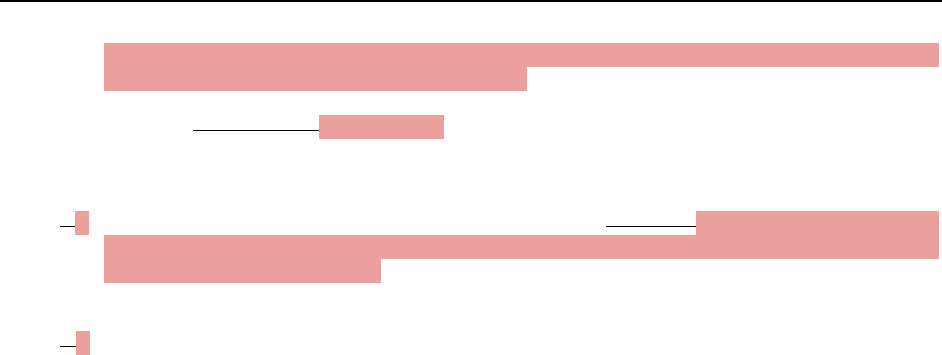
Firearms Offenses
April 27, 2023 | 69
The term “criminal justice sentence” includes probation, parole, supervised release,
imprisonment, work release, or escape status.
The term “defendant”,“defendant,” consistent with §1B1.3 (Relevant Conduct), limits the
accountability of the defendant to the defendant’s own conduct and conduct that the
defendant aided or abetted, counseled, commanded, induced, procured, or willfully caused.
(CB) Upward Departure Provision.—If the defendant trafficked transported, transferred,
sold, or otherwise disposed of, or purchased or received with intent to transport, transfer,
sell, or otherwise dispose of, substantially more than 25 firearms, an upward departure
may be warranted.
(DC) Interaction with Other Subsections.—In a case in which three or more firearms were
both possessed and trafficked, apply both subsections (b)(1) and (b)(5). If the defendant used
or transferred one of such firearms in connection with another felony offense (i.e., an offense
other than a firearms possession or trafficking offense) an enhancement under
subsection (b)(6)(B) also would apply.
14. Application of Subsections (b)(6)(B) and (c)(1).—
(A) In General.—Subsections (b)(6)(B) and (c)(1) apply if the firearm or ammunition
facilitated, or had the potential of facilitating, another felony offense or another offense,
respectively. However, subsection (c)(1) contains the additional requirement that the
firearm or ammunition be cited in the offense of conviction.
(B) Application When Other Offense is Burglary or Drug Offense.—
Subsections (b)(6)(B) and (c)(1) apply (i) in a case in which a defendant who, during the
course of a burglary, finds and takes a firearm, even if the defendant did not engage in any
other conduct with that firearm during the course of the burglary; and (ii) in the case of a
drug trafficking offense in which a firearm is found in close proximity to drugs, drug-
manufacturing materials, or drug paraphernalia. In these cases, application of
subsections (b)(6)(B) and, if the firearm was cited in the offense of conviction, (c)(1) is
warranted because the presence of the firearm has the potential of facilitating another
felony offense or another offense, respectively.
(C) Definitions.—
“Another felony offense”, for purposes of subsection (b)(6)(B), means any federal, state, or
local offense, other than the explosive or firearms possession or trafficking offense,
punishable by imprisonment for a term exceeding one year, regardless of whether a
criminal charge was brought, or a conviction obtained.
“Another offense”, for purposes of subsection (c)(1), means any federal, state, or local
offense, other than the explosive or firearms possession or trafficking offense, regardless of
whether a criminal charge was brought, or a conviction obtained.
(D) Upward Departure Provision.—In a case in which the defendant used or possessed a
firearm or explosive to facilitate another firearms or explosives offense (e.g., the defendant
used or possessed a firearm to protect the delivery of an unlawful shipment of explosives),
an upward departure under §5K2.6 (Weapons and Dangerous Instrumentalities) may be
warranted.

Firearms Offenses
70 | April 27, 2023
(E) Relationship Between the Instant Offense and the Other Offense.—In determining
whether subsections (b)(6)(B) and (c)(1) apply, the court must consider the relationship
between the instant offense and the other offense, consistent with relevant conduct
principles. See §1B1.3(a)(1)–(4) and accompanying commentary.
In determining whether subsection (c)(1) applies, the court must also consider whether the
firearm used in the other offense was a firearm cited in the offense of conviction.
For example:
(i) Firearm Cited in the Offense of Conviction. Defendant A’s offense of conviction
is for unlawfully possessing a shotgun on October 15. The court determines that, on
the preceding February 10, Defendant A used the shotgun in connection with a
robbery. Ordinarily, under these circumstances, subsection (b)(6)(B) applies, and the
cross reference in subsection (c)(1) also applies if it results in a greater offense level.
Ordinarily, the unlawful possession of the shotgun on February 10 will be “part of the
same course of conduct or common scheme or plan” as the unlawful possession of the
same shotgun on October 15. See §1B1.3(a)(2) and accompanying commentary
(including, in particular, the factors discussed in Application Note 5(B) to §1B1.3).
The use of the shotgun “in connection with” the robbery is relevant conduct because
it is a factor specified in subsections (b)(6)(B) and (c)(1). See §1B1.3(a)(4) (“any other
information specified in the applicable guideline”).
(ii) Firearm Not Cited in the Offense of Conviction. Defendant B’s offense of
conviction is for unlawfully possessing a shotgun on October 15. The court determines
that, on the preceding February 10, Defendant B unlawfully possessed a handgun (not
cited in the offense of conviction) and used the handgun in connection with a robbery.
Subsection (b)(6)(B). In determining whether subsection (b)(6)(B) applies, the
threshold question for the court is whether the two unlawful possession offenses (the
shotgun on October 15 and the handgun on February 10) were “part of the same course
of conduct or common scheme or plan”. See §1B1.3(a)(2) and accompanying
commentary (including, in particular, the factors discussed in Application Note 5(B)
to §1B1.3).
If they were, then the handgun possession offense is relevant conduct to the shotgun
possession offense, and the use of the handgun “in connection with” the robbery is
relevant conduct because it is a factor specified in subsection (b)(6)(B).
See §1B1.3(a)(4) (“any other information specified in the applicable guideline”).
Accordingly, subsection (b)(6)(B) applies.
On the other hand, if the court determines that the two unlawful possession offenses
were not “part of the same course of conduct or common scheme or plan,” then the
handgun possession offense is not relevant conduct to the shotgun possession offense
and subsection (b)(6)(B) does not apply.
Subsection (c)(1). Under these circumstances, the cross reference in subsection (c)(1)
does not apply, because the handgun was not cited in the offense of conviction.
15. Certain Convictions Under 18 U.S.C. §§ 922(a)(6), 922(d), and 924(a)(1)(A).—In a case in
which the defendant is convicted under 18 U.S.C. §§ 922(a)(6), 922(d), or 924(a)(1)(A), a
downward departure may be warranted if (A) none of the enhancements in subsection (b) apply,
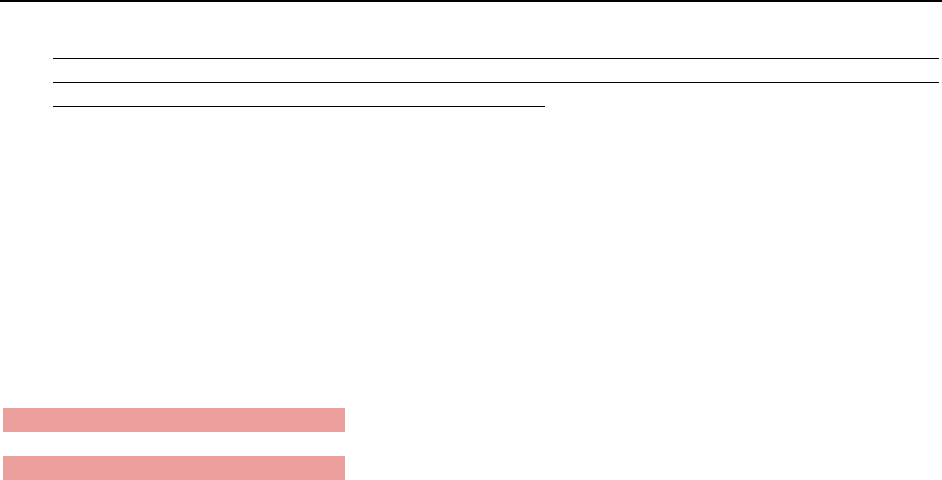
Firearms Offenses
April 27, 2023 | 71
(B) the defendant was motivated by an intimate or familial relationship or by threats or fear to
commit the offense and was otherwise unlikely to commit such an offense, and (C) the defendant
received no monetary compensation from the offense.
* * *
APPENDIX A
STATUTORY INDEX
* * *
18 U.S.C. § 931 2K2.6
18 U.S.C. § 932 2K2.1
18 U.S.C. § 933 2K2.1
18 U.S.C. § 956 2A1.5, 2X1.1
* * *
72 | April 27, 2023
7. CIRCUIT CONFLICTS
Reason for Amendment: This amendment responds to circuit conflicts over whether a
reduction under subsection (b) of §3E1.1 (Acceptance of Responsibility), which requires a
motion from the government, may be withheld or denied if a defendant moves to suppress
evidence or raises sentencing challenges. The amendment addresses the circuit conflicts by
providing a definition of the term “preparing for trial,” which appears in §3E1.1(b) and
Application Note 6 to §3E1.1. The amendment also deletes hortatory language that the
Commission previously added to Application Note 6 providing that the “government should
not withhold such a motion based on interests not identified in §3E1.1, such as whether the
defendant agrees to waive his or her right to appeal.” See USSG App. C, amend. 775
(effective Nov. 1, 2013).
The amendment defines “preparing for trial” as “substantive preparations taken to present
the government’s case against the defendant to a jury (or judge, in the case of a bench trial)
at trial.” The amendment further provides examples of actions that ordinarily indicate
preparing for trial (such as preparing witnesses for trial, in limine motions, proposed voir
dire questions and jury instructions, and witnesses and exhibit lists). The amendment
further provides that preparations for pretrial proceedings (such as litigation related to a
charging document, discovery motions, and suppression motions) ordinarily are not
considered preparing for trial, and that post-conviction matters (such as sentencing
objections, appeal waivers, and related issues) are not considered preparing for trial.
As Justices Sotomayor and Gorsuch observed in 2021, the conflict as to whether a
suppression hearing is a valid basis for denying a §3E1.1(b) reduction is both longstanding
and has a potentially significant impact on defendants. See Longoria v. United States,
141 S. Ct. 978, 979 (2021) (statement of Sotomayor, J., with whom Gorsuch, J. joins,
respecting the denial of certiorari, “emphasiz[ing] the need for clarification from the
Commission” on this “important and longstanding split among the Courts of Appeals over
the proper interpretation of § 3E1.1(b)”). Three circuits (the Third, Fifth, and Sixth
Circuits) have permitted the government to withhold a §3E1.1(b) motion based on a
suppression motion, while five circuits (the First, Second, Ninth, Tenth, and D.C. Circuits)
have held that a reduction may not be denied based on a suppression motion. Compare
United States v. Longoria, 958 F.3d 372 (5th Cir. 2020), cert. denied, 141 S. Ct. 978 (2021),
United States v. Collins, 683 F.3d 697 (6th Cir. 2012), and United States v. Drennon,
516 F.3d 160 (3d Cir. 2008), with United States v. Vargas, 961 F.3d 566 (2d Cir. 2020),
United States v. Price, 409 F.3d 436 (D.C. Cir. 2005), United States v. Marquez, 337 F.3d
1203 (10th Cir. 2003), United States v. Marroquin, 136 F.3d 220 (1st Cir. 1998), and United
States v. Kimple, 27 F.3d 1409 (9th Cir. 1994).
Similarly, the First, Third, Seventh, and Eighth Circuits have held that the government
may withhold a §3E1.1(b) motion based on sentencing challenges, while the Second and
Fifth Circuits have held that it may not. Compare United States v. Adair, 38 F.4th 341
(3d Cir. 2022), United States v. Jordan, 877 F.3d 391 (8th Cir. 2017), United States v.
Sainz-Preciado, 566 F.3d 708 (7th Cir. 2009), and United States v. Beatty, 538 F.3d 8
(1st Cir. 2008), with United States v. Castillo, 779 F.3d 318 (5th Cir. 2015), and United
States v. Lee, 653 F.3d 170 (2d Cir. 2011).

Circuit Conflicts
April 27, 2023 | 73
These conflicts have resulted in variation in §3E1.1(b) motion practice across—and even
within—judicial districts. In some jurisdictions, defendants receive the additional reduction
as a matter of course, even if they assert pre-trial or post-conviction challenges. In others,
the §3E1.1(b) motion has been withheld based on motions to suppress, sentencing
challenges, or other grounds. Because the sentencing impact of losing one additional level
under §3E1.1(b) can be significant, the practice in the latter districts has had a chilling
effect, deterring defendants from pursuing certain evidentiary and sentencing challenges.
The Commission promulgated this amendment to decrease variation between jurisdictions
in applying §3E1.1(b). The amendment also aims to minimize any deterrent effect on
defendants’ ability to exercise their constitutional rights. See also §3E1.1, comment. (n.2)
(allowing consideration for the adjustment where a defendant exercises constitutional
rights to trial to raise a constitutional challenge to a statute or challenge the applicability of
a statute to the defendant’s conduct).
In promulgating this amendment, the Commission recognizes that these circuit conflicts
involve guideline and commentary provisions that Congress directly amended, and that
Congress also directed the Commission not to “alter or repeal” the congressional
amendments. See Prosecutorial Remedies and Other Tools to end the Exploitation of
Children Today Act of 2003, Pub. L. 108–21, § 401(g), (j)(4), 117 Stat. 650. In recognition of
this limitation, the amendment defines a term that the congressional amendments did not
define—“preparing for trial”—without altering or repealing the amendments that Congress
made.
Amendment:
§3E1.1. Acceptance of Responsibility
(a) If the defendant clearly demonstrates acceptance of responsibility for his
offense, decrease the offense level by 2 levels.
(b) If the defendant qualifies for a decrease under subsection (a), the offense
level determined prior to the operation of subsection (a) is level 16 or
greater, and upon motion of the government stating that the defendant has
assisted authorities in the investigation or prosecution of his own
misconduct by timely notifying authorities of his intention to enter a plea
of guilty, thereby permitting the government to avoid preparing for trial
and permitting the government and the court to allocate their resources
efficiently, decrease the offense level by 1 additional level. The term
“preparing for trial” means substantive preparations taken to present
the government’s case against the defendant to a jury (or judge, in the case
of a bench trial) at trial. “Preparing for trial” is ordinarily indicated by
actions taken close to trial, such as preparing witnesses for trial, in limine
motions, proposed voir dire questions and jury instructions, and witness
and exhibit lists. Preparations for pretrial proceedings (such as litigation
related to a charging document, discovery motions, and suppression

Circuit Conflicts
74 | April 27, 2023
motions) ordinarily are not considered “preparing for trial” under this
subsection. Post-conviction matters (such as sentencing objections, appeal
waivers, and related issues) are not considered “preparing for trial.”
Commentary
Application Notes:
1. In determining whether a defendant qualifies under subsection (a), appropriate considerations
include, but are not limited to, the following:
(A) truthfully admitting the conduct comprising the offense(s) of conviction, and truthfully
admitting or not falsely denying any additional relevant conduct for which the defendant
is accountable under §1B1.3 (Relevant Conduct). Note that a defendant is not required to
volunteer, or affirmatively admit, relevant conduct beyond the offense of conviction in order
to obtain a reduction under subsection (a). A defendant may remain silent in respect to
relevant conduct beyond the offense of conviction without affecting his ability to obtain a
reduction under this subsection. A defendant who falsely denies, or frivolously contests,
relevant conduct that the court determines to be true has acted in a manner inconsistent
with acceptance of responsibility, but the fact that a defendant’s challenge is unsuccessful
does not necessarily establish that it was either a false denial or frivolous;
(B) voluntary termination or withdrawal from criminal conduct or associations;
(C) voluntary payment of restitution prior to adjudication of guilt;
(D) voluntary surrender to authorities promptly after commission of the offense;
(E) voluntary assistance to authorities in the recovery of the fruits and instrumentalities of the
offense;
(F) voluntary resignation from the office or position held during the commission of the offense;
(G) post-offense rehabilitative efforts (e.g., counseling or drug treatment); and
(H) the timeliness of the defendant’s conduct in manifesting the acceptance of responsibility.
2. This adjustment is not intended to apply to a defendant who puts the government to its burden
of proof at trial by denying the essential factual elements of guilt, is convicted, and only then
admits guilt and expresses remorse. Conviction by trial, however, does not automatically
preclude a defendant from consideration for such a reduction. In rare situations a defendant may
clearly demonstrate an acceptance of responsibility for his criminal conduct even though he
exercises his constitutional right to a trial. This may occur, for example, where a defendant goes
to trial to assert and preserve issues that do not relate to factual guilt (e.g., to make a
constitutional challenge to a statute or a challenge to the applicability of a statute to his conduct).
In each such instance, however, a determination that a defendant has accepted responsibility
will be based primarily upon pre-trial statements and conduct.
3. Entry of a plea of guilty prior to the commencement of trial combined with truthfully admitting
the conduct comprising the offense of conviction, and truthfully admitting or not falsely denying
any additional relevant conduct for which he is accountable under §1B1.3 (Relevant Conduct)
(see Application Note 1(A)), will constitute significant evidence of acceptance of responsibility for
the purposes of subsection (a). However, this evidence may be outweighed by conduct of the

Circuit Conflicts
April 27, 2023 | 75
defendant that is inconsistent with such acceptance of responsibility. A defendant who enters a
guilty plea is not entitled to an adjustment under this section as a matter of right.
4. Conduct resulting in an enhancement under §3C1.1 (Obstructing or Impeding the
Administration of Justice) ordinarily indicates that the defendant has not accepted responsibility
for his criminal conduct. There may, however, be extraordinary cases in which adjustments
under both §§3C1.1 and 3E1.1 may apply.
5. The sentencing judge is in a unique position to evaluate a defendant’s acceptance of
responsibility. For this reason, the determination of the sentencing judge is entitled to great
deference on review.
6. Subsection (a) provides a 2-level decrease in offense level. Subsection (b) provides an additional
1-level decrease in offense level for a defendant at offense level 16 or greater prior to the operation
of subsection (a) who both qualifies for a decrease under subsection (a) and who has assisted
authorities in the investigation or prosecution of his own misconduct by taking the steps set forth
in subsection (b). The timeliness of the defendant’s acceptance of responsibility is a consideration
under both subsections, and is context specific. In general, the conduct qualifying for a decrease
in offense level under subsection (b) will occur particularly early in the case. For example, to
qualify under subsection (b), the defendant must have notified authorities of his intention to
enter a plea of guilty at a sufficiently early point in the process so that the government may avoid
preparing for trial and the court may schedule its calendar efficiently.
Because the Government is in the best position to determine whether the defendant has assisted
authorities in a manner that avoids preparing for trial, an adjustment under subsection (b) may
only be granted upon a formal motion by the Government at the time of sentencing.
See section 401(g)(2)(B) of Public Law 108–21. The government should not withhold such a
motion based on interests not identified in §3E1.1, such as whether the defendant agrees to waive
his or her right to appeal.
If the government files such a motion, and the court in deciding whether to grant the motion also
determines that the defendant has assisted authorities in the investigation or prosecution of his
own misconduct by timely notifying authorities of his intention to enter a plea of guilty, thereby
permitting the government to avoid preparing for trial and permitting the government and the
court to allocate their resources efficiently, the court should grant the motion.
Background: The reduction of offense level provided by this section recognizes legitimate societal
interests. For several reasons, a defendant who clearly demonstrates acceptance of responsibility for
his offense by taking, in a timely fashion, the actions listed above (or some equivalent action) is
appropriately given a lower offense level than a defendant who has not demonstrated acceptance of
responsibility.
Subsection (a) provides a 2-level decrease in offense level. Subsection (b) provides an additional
1-level decrease for a defendant at offense level 16 or greater prior to operation of subsection (a) who
both qualifies for a decrease under subsection (a) and has assisted authorities in the investigation or
prosecution of his own misconduct by taking the steps specified in subsection (b). Such a defendant
has accepted responsibility in a way that ensures the certainty of his just punishment in a timely
manner, thereby appropriately meriting an additional reduction. Subsection (b) does not apply,
however, to a defendant whose offense level is level 15 or lower prior to application of subsection (a).
At offense level 15 or lower, the reduction in the guideline range provided by a 2-level decrease in
offense level under subsection (a) (which is a greater proportional reduction in the guideline range
than at higher offense levels due to the structure of the Sentencing Table) is adequate for the court to
take into account the factors set forth in subsection (b) within the applicable guideline range.

Circuit Conflicts
76 | April 27, 2023
Section 401(g) of Public Law 108–21 directly amended subsection (b), Application Note 6
(including adding the first sentence of the second paragraph of that application note), and the
Background Commentary, effective April 30, 2003.
* * *
April 27, 2023 | 77
8. CRIMINAL HISTORY
Reason for Amendment: This amendment is the result of several Commission studies
regarding the nature of the criminal history of federal offenders, including analyses of the
number and types of prior convictions included as criminal history and the ability of the
criminal history rules to predict an offender’s likelihood of rearrest. While these studies
continue to recognize the close association between an offender’s criminal history
calculation under the guidelines and the likelihood of future recidivism, the amendment
makes targeted changes to reduce the impact of providing additional criminal history points
for offenders under a criminal justice sentence (commonly known as “status points”), to
reduce recommended guideline ranges for offenders with zero criminal history points under
the guidelines (“zero-point offenders”), and to recognize the changing legal landscape as it
pertains to simple possession of marihuana offenses. These targeted amendments balance
the Commission’s mission of implementing data-driven sentencing policies with its duty to
craft penalties that reflect the statutory purposes of sentencing.
Part A – Status Points
Part A of the amendment addresses “status points” for offenders, namely the additional
criminal history points given to offenders for the fact of having committed the instant
offense while under a criminal justice sentence, including probation, parole, supervised
release, imprisonment, work release, or escape status. The amendment redesignates
current subsection (d) of §4A1.1, which addresses “status points,” as subsection (e) and
redesignates current subsection (e), which addresses multiple crimes of violence treated as
a single sentence, as subsection (d). This redesignation is made for ease of application.
Under the previous “status points” provision, two criminal history points were added under
§4A1.1(d) if the defendant committed the instant offense “while under any criminal justice
sentence, including probation, parole, supervised release, imprisonment, work release, or
escape status.” The amendment limits the overall criminal history impact of “status points”
in two ways. First, as revised, the “status points” provision under redesignated
subsection (e) applies only to offenders with more serious criminal histories under the
guidelines by requiring that an offender have seven or more criminal history points under
subsections (a) through (d) in addition to having been under a criminal justice sentence at
the time of the instant offense. Offenders with six or fewer criminal history points under
subsections (a) through (d) will no longer receive “status points.” Second, the amendment
also reduces from two points to one point the “status points” assessed for offenders to whom
the revised provision applies. Part A of the amendment also makes conforming changes to
the Commentary to §4A1.1, §2P1.1 (Escape, Instigating or Assisting Escape), and §4A1.2
(Definitions and Instructions for Computing Criminal History).
As part of its study of criminal history, the Commission found that “status points” are
relatively common in cases with at least one criminal history point, having been applied in
37.5 percent of cases with criminal history points over the last five fiscal years. Of the
offenders who received “status points,” 61.5 percent had a higher Criminal History
Category as a result of the addition of the “status points.” The Commission also recently
published a series of research reports regarding the recidivism rates of federal offenders.
See, e.g., U.S. S
ENT’G COMM’N, RECIDIVISM OF FEDERAL OFFENDERS RELEASED IN 2010

Criminal History
78 | April 27, 2023
(2021), available at https://www.ussc.gov/research/research-reports/recidivism-federal-
offenders-released-2010. These reports again concluded that an offender’s criminal history
calculation under the guidelines is strongly associated with the likelihood of future
recidivism by the defendant. In a related publication, the Commission also found, however,
that status points add little to the overall predictive value associated with the criminal
history score. See U.S. S
ENT’G COMM’N, REVISITING STATUS POINTS (2022), available at
https://www.ussc.gov/research/research-reports/revisiting-status-points.
The Commission’s action to limit the impact of “status points” builds upon its tradition of
data-driven evolution of the guidelines. As described in the Introduction to Chapter Four,
the original Commission envisioned status points as “consistent with the extant empirical
research assessing correlates of recidivism and patterns of career criminal behavior” and
therefore envisioned “status points” as being reflective of, among other sentencing goals,
the increased likelihood of future recidivism. See USSG Ch.4, Pt.A, intro. comment. The
original Commission also explained, however, that it would “review additional data insofar
as they become available in the future.” The Commission’s recent research suggests that
“status points” improve the predictive value of the criminal history score less than the
original Commission may have expected, suggesting that the treatment of “status points”
under Chapter Four should be refined.
Accordingly, the Commission determined that it was appropriate to address several
concerns regarding the scope and impact of status points. In taking these steps, the
Commission observed that the operation of the Guidelines Manual separately accounts for
consecutive punishment imposed upon revocations of supervised release, a likely occurrence
if an offender was under a criminal justice sentence during the commission of another
offense. The Commission further recognized that it is also possible that an offender’s
criminal history score would be independently increased as the result of additional time
imposed as the result of a revocation of probation or supervised release for the offense that
also results in the addition of status points.
At the same time, by retaining “status points” for those offenders in higher criminal history
categories, the Commission continues to recognize that “status points,” like the other
criminal history provisions in Chapter Four, reflect and serve multiple purposes of
sentencing, including the offender’s perceived lack of respect for the law, as reflected both
in the offender’s overall criminal history and the fact that the offender has reoffended while
under a criminal justice sentence ordered by a court. See 18 U.S.C. § 3553(a)(2)(A)–(C).
The Commission concluded that accounting for status on a more limited basis continues to
serve the broader purposes of sentencing while also addressing other concerns raised
regarding the impact of status points.
Part B – Zero-Point Offenders
Part B of the amendment includes three subparts making changes pertaining to offenders
who did not receive any criminal history points from Chapter Four, Part A. Subpart 1
provides for an adjustment for certain offenders with zero criminal history points.
Subpart 2 revises §5C1.1 (Imposition of a Term of Imprisonment) to implement the
congressional directive at 28 U.S.C. § 994(j). Finally, Subpart 3 makes other conforming
changes.

Criminal History
April 27, 2023 | 79
Subpart 1 – Adjustment for Certain Zero-Point Offenders
Subpart 1 of Part B of the amendment creates a new Chapter Four guideline at §4C1.1
(Adjustment for Certain Zero-Point Offenders). New §4C1.1 provides a decrease of two
levels from the offense level determined under Chapters Two and Three for offenders who
did not receive any criminal history points under Chapter Four, Part A and whose instant
offense did not involve specified aggravating factors. In establishing new §4C1.1, the
Commission was informed by its studies of recidivism among federal offenders, as well as
other extensive data analyses of offenders with no criminal history points, and public
comment. The Sentencing Table in Chapter Five, Part A is divided into six criminal history
categories, from I (lowest) to VI (highest). Criminal History Category I includes offenders
with zero criminal history points and those with one criminal history point. Recidivism data
analyzed by the Commission shows, however, that offenders with zero criminal history
points have considerably lower recidivism rates than other offenders, including offenders
with one criminal history point. See U.S. S
ENT’G COMM’N, RECIDIVISM OF FEDERAL
OFFENDERS RELEASED IN 2010 (2021), available at https://www.ussc.gov/research/research-
reports/recidivism-federal-offenders-released-2010. Among other findings, the report
concluded that “zero-point offenders” were less likely to be rearrested than “one point”
offenders (26.8% compared to 42.3%), the largest variation of any comparison of offenders
within the same Criminal History Category.
In promulgating this change, the Commission also considered the rates of departures and
variances in cases involving offenders with no criminal history points. The Commission has
long viewed the rates and extents of departures and variances from the applicable guideline
ranges as a feedback mechanism from the courts that a particular area of the guidelines
may warrant further review and possible amendment. In fiscal year 2021, 39.2 percent of
offenders with zero criminal history points received a sentence within the guidelines range;
by comparison, 47.4 percent of offenders with one criminal history point were sentenced
within the guideline range. The Commission determined that the departure and variance
rates for zero-point offenders, coupled with its recidivism data, warranted action.
The amendment applies to offenders with no criminal history points, including (1) offenders
with no prior convictions; (2) offenders who have prior convictions that are not counted
because those convictions were not within the time limits set forth in subsection (d) and (e)
of §4A1.2 (Definitions and Instructions for Computing Criminal History); and (3) offenders
who have prior convictions that are not used in computing the criminal history category for
reasons other than their “staleness” (e.g., sentences resulting from foreign or tribal court
convictions, minor misdemeanor convictions, or infractions). In adopting this definition of
“zero-point offenders,” the Commission opted to hew to the long-standing and carefully
crafted criminal history rules set forth in Chapter Four, regarding which prior convictions
count for criminal history purposes and which do not. The Commission also observed that
attempts to exclude offenders with certain prior convictions could lead to increased
complexity and litigation and require the additional practical step of investigating prior
unscorable offenses for which records may not be readily available.
While determining that a reduction is appropriate for some offenders with zero criminal
history points, the Commission also identified circumstances in which zero-point offenders
are appropriately excluded from eligibility in light of the seriousness of the instant offense

Criminal History
80 | April 27, 2023
of conviction or the existence of aggravating factors in the instant offense (e.g., where the
offender used violence or credible threats of violence in connection with the offense or where
the instant offense of conviction was a “sex offense”). The exclusionary criteria identified by
the Commission were again informed by extensive data analyses and public comment. The
Commission was also informed by existing legislation, including the congressionally
established criteria for the statutory safety valve at 18 U.S.C. § 3553(f) and the recent
firearms legislation set forth in the Bipartisan Safer Communities Act.
Subpart 2 – Implementation of 28 U.S.C. § 994(j)
Subpart 2 of Part B of the amendment revises the Commentary to §5C1.1 (Imposition of a
Term of Imprisonment) that addresses “nonviolent first offenders.” New Application
Note 10(A) provides that if the defendant received an adjustment under new §4C1.1 and the
defendant’s applicable guideline range is in Zone A or B of the Sentencing Table, a sentence
other than a sentence of imprisonment, in accordance with subsection (b) or (c)(3), is
generally appropriate. New Application Note 10(B) adds a corresponding departure
provision providing that a departure, including a departure to a sentence other than a
sentence of imprisonment, may be appropriate if the offender received an adjustment under
new §4C1.1 and the applicable guideline range overstates the gravity of the offense because
the offense of conviction is not a crime of violence or an otherwise serious offense.
The changes to the Commentary to §5C1.1 respond to Congress’s directive to the
Commission at 28 U.S.C. § 994(j), directing the Commission to ensure that the guidelines
reflect the general appropriateness of imposing a sentence other than imprisonment in
cases in which the defendant is a first offender who has not been convicted of a crime of
violence or an otherwise serious offense. The Commission determined that the revised
commentary serves Congress’s intent in promulgating section 994(j) while providing
appropriate limitations and guidance through reliance on the criteria set forth in new
§4C1.1 and the specific statutory language set forth in section 994(j).
Subpart 3 – Additional Changes
Subpart 3 of Part B of the amendment makes a corresponding change to
subsection (b)(2)(A) of §4A1.3 (Departures Based on Inadequacy of Criminal History
Category (Policy Statement)) to provide that a departure below the lower limit of the
applicable guideline range for Criminal History Category I is prohibited, “unless otherwise
specified.” The amendment also revises an explanatory note in Chapter One, Part A,
Subpart 1(4)(d) (Probation and Split Sentences) to detail amendments to the Guidelines
Manual related to the implementation of 28 U.S.C. § 994(j), first offenders, and “zero-point
offenders.”
Part C – Impact of Simple Possession of Marihuana Offenses
Part C of the amendment revises the Commentary to §4A1.3 (Departures Based on
Inadequacy of Criminal History Category (Policy Statement)) to include sentences resulting
from possession of marihuana offenses as an example of when a downward departure from
the defendant’s criminal history may be warranted. Specifically, Part C provides that a
downward departure may be warranted if the defendant received criminal history points
from a sentence for possession of marihuana for personal use, without an intent to sell or

Criminal History
April 27, 2023 | 81
distribute it to another person. Most commenters, including the Department of Justice,
supported this change. See Letter from Jonathan J. Wroblewski, Dir., Crim. Div., U.S. Dep’t
of Just., to Hon. Carlton W. Reeves, Chair, U.S. Sent’g Comm’n (Feb. 27, 2023), in
U.S. S
ENT’G COMM’N, 2022–2023 AMENDMENT CYCLE PROPOSED AMENDMENTS/PUBLIC
COMMENT (2023); see also U.S. SENT’G COMM’N, 2022–2023 AMENDMENT CYCLE PROPOSED
AMENDMENTS/PUBLIC COMMENT (2023) (providing numerous public comment supporting
the amendment).
The Commission also relied upon its recently published report on the impact of simple
possession of marihuana offenses on sentencing. See U.S. S
ENT’G COMM’N, WEIGHING THE
IMPACT OF SIMPLE POSSESSION OF MARIJUANA: TRENDS AND SENTENCING IN THE FEDERAL
SYSTEM (2023), available at https://www.ussc.gov/research/research-reports/weighing-
impact-simple-possession-marijuana. In that study, the Commission found that 4,405
federal offenders (8.0%) received criminal history points under the federal sentencing
guidelines for prior marihuana possession sentences in fiscal year 2021. Most such prior
sentences were for state court convictions resulting in less than 60 days in prison or non-
custodial sentences. The Commission also found informative that ten percent (10.2%) of
these 4,405 offenders had no other criminal history points, and that for 40 percent (40.1%)
of the 4,405 offenders (1,765), the criminal history points for prior marihuana possession
sentences resulted in a higher Criminal History Category.
Amendment:
Part A (Status Points under §4A1.1)
§2P1.1. Escape, Instigating or Assisting Escape
* * *
Commentary
* * *
Application Notes:
* * *
5. Criminal history points under Chapter Four, Part A (Criminal History) are to be determined
independently of the application of this guideline. For example, in the case of a defendant serving
a one-year sentence of imprisonment at the time of the escape, criminal history points from
§4A1.1(b) (for the sentence being served at the time of the escape) and §4A1.1(de) (custody status)
would be applicable.
* * *
§4A1.1. Criminal History Category
The total points from subsections (a) through (e) determine the criminal history
category in the Sentencing Table in Chapter Five, Part A.

Criminal History
82 | April 27, 2023
(a) Add 3 points for each prior sentence of imprisonment exceeding one year
and one month.
(b) Add 2 points for each prior sentence of imprisonment of at least sixty days
not counted in (a).
(c) Add 1 point for each prior sentence not counted in (a) or (b), up to a total
of 4 points for this subsection.
(d) Add 2 points if the defendant committed the instant offense while under
any criminal justice sentence, including probation, parole, supervised
release, imprisonment, work release, or escape status.
(ed) Add 1 point for each prior sentence resulting from a conviction of a crime
of violence that did not receive any points under (a), (b), or (c) above
because such sentence was treated as a single sentence, up to a total of
3 points for this subsection.
(e) Add 1 point if the defendant (1) receives 7 or more points under
subsections (a) through (d), and (2) committed the instant offense while
under any criminal justice sentence, including probation, parole,
supervised release, imprisonment, work release, or escape status.
Commentary
The total criminal history points from §4A1.1 determine the criminal history category (I–VI) in
the Sentencing Table in Chapter Five, Part A. The definitions and instructions in §4A1.2 govern the
computation of the criminal history points. Therefore, §§4A1.1 and 4A1.2 must be read together. The
following notes highlight the interaction of §§4A1.1 and 4A1.2.
Application Notes:
1. §4A1.1(a). Three points are added for each prior sentence of imprisonment exceeding one year
and one month. There is no limit to the number of points that may be counted under this
subsection. The term “prior sentence” is defined at §4A1.2(a). The term “sentence of
imprisonment” is defined at §4A1.2(b). Where a prior sentence of imprisonment resulted from
a revocation of probation, parole, or a similar form of release, see §4A1.2(k).
Certain prior sentences are not counted or are counted only under certain conditions:
A sentence imposed more than fifteen years prior to the defendant’s commencement of the
instant offense is not counted unless the defendant’s incarceration extended into this
fifteen-year period. See §4A1.2(e).
A sentence imposed for an offense committed prior to the defendant’s eighteenth birthday
is counted under this subsection only if it resulted from an adult conviction. See §4A1.2(d).
A sentence for a foreign conviction, a conviction that has been expunged, or an invalid
conviction is not counted. See §4A1.2(h) and (j) and the Commentary to §4A1.2.

Criminal History
April 27, 2023 | 83
2. §4A1.1(b). Two points are added for each prior sentence of imprisonment of at least sixty days
not counted in §4A1.1(a). There is no limit to the number of points that may be counted under
this subsection. The term “prior sentence” is defined at §4A1.2(a). The term “sentence of
imprisonment” is defined at §4A1.2(b). Where a prior sentence of imprisonment resulted from
a revocation of probation, parole, or a similar form of release, see §4A1.2(k).
Certain prior sentences are not counted or are counted only under certain conditions:
A sentence imposed more than ten years prior to the defendant’s commencement of the
instant offense is not counted. See §4A1.2(e).
An adult or juvenile sentence imposed for an offense committed prior to the defendant’s
eighteenth birthday is counted only if confinement resulting from such sentence extended
into the five-year period preceding the defendant’s commencement of the instant offense.
See §4A1.2(d).
Sentences for certain specified non-felony offenses are never counted. See §4A1.2(c)(2).
A sentence for a foreign conviction or a tribal court conviction, an expunged conviction, or
an invalid conviction is not counted. See §4A1.2(h), (i), (j), and the Commentary to §4A1.2.
A military sentence is counted only if imposed by a general or special court-martial.
See §4A1.2(g).
3. §4A1.1(c). One point is added for each prior sentence not counted under §4A1.1(a) or (b). A
maximum of four points may be counted under this subsection. The term “prior sentence” is
defined at §4A1.2(a).
Certain prior sentences are not counted or are counted only under certain conditions:
A sentence imposed more than ten years prior to the defendant’s commencement of the
instant offense is not counted. See §4A1.2(e).
An adult or juvenile sentence imposed for an offense committed prior to the defendant’s
eighteenth birthday is counted only if imposed within five years of the defendant’s
commencement of the current offense. See §4A1.2(d).
Sentences for certain specified non-felony offenses are counted only if they meet certain
requirements. See §4A1.2(c)(1).
Sentences for certain specified non-felony offenses are never counted. See §4A1.2(c)(2).
A diversionary disposition is counted only where there is a finding or admission of guilt in
a judicial proceeding. See §4A1.2(f).
A sentence for a foreign conviction, a tribal court conviction, an expunged conviction, or an
invalid conviction, is not counted. See §4A1.2(h), (i), (j), and the Commentary to §4A1.2.
A military sentence is counted only if imposed by a general or special court-martial.
See §4A1.2(g).
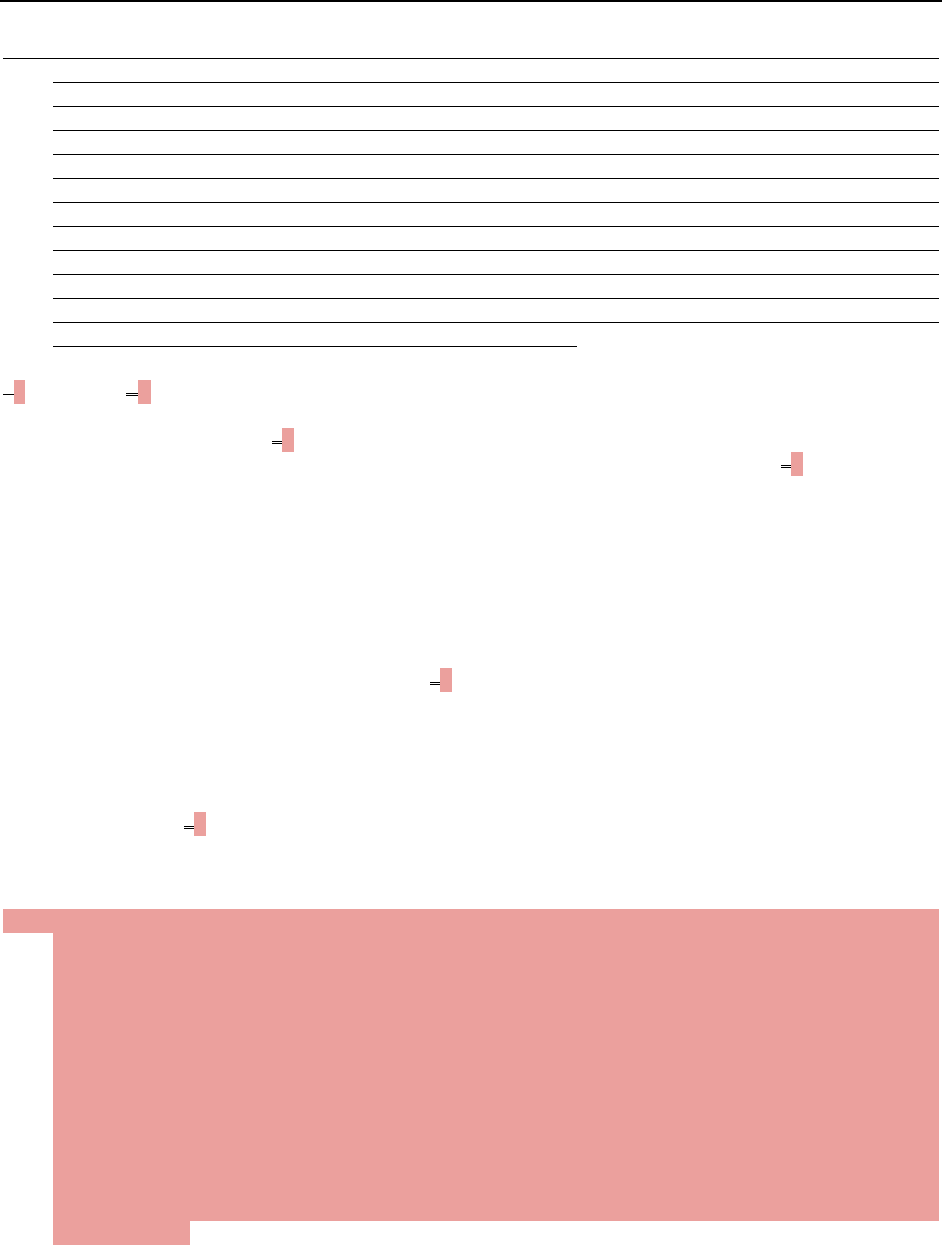
Criminal History
84 | April 27, 2023
4. §4A1.1(d). Two points are added if the defendant committed any part of the instant offense
(i.e., any relevant conduct) while under any criminal justice sentence, including probation,
parole, supervised release, imprisonment, work release, or escape status. Failure to report for
service of a sentence of imprisonment is to be treated as an escape from such sentence.
See §4A1.2(n). For the purposes of this subsection, a “criminal justice sentence” means a
sentence countable under §4A1.2 (Definitions and Instructions for Computing Criminal History)
having a custodial or supervisory component, although active supervision is not required for this
subsection to apply. For example, a term of unsupervised probation would be included; but a
sentence to pay a fine, by itself, would not be included. A defendant who commits the instant
offense while a violation warrant from a prior sentence is outstanding (e.g., a probation, parole,
or supervised release violation warrant) shall be deemed to be under a criminal justice sentence
for the purposes of this provision if that sentence is otherwise countable, even if that sentence
would have expired absent such warrant. See §4A1.2(m).
54. §4A1.1(ed). In a case in which the defendant received two or more prior sentences as a result of
convictions for crimes of violence that are treated as a single sentence (see §4A1.2(a)(2)), one point
is added under §4A1.1(ed) for each such sentence that did not result in any additional points
under §4A1.1(a), (b), or (c). A total of up to 3 points may be added under §4A1.1(ed). For purposes
of this guideline, “crime of violence” has the meaning given that term in §4B1.2(a).
See §4A1.2(p).
For example, a defendant’s criminal history includes two robbery convictions for offenses
committed on different occasions. The sentences for these offenses were imposed on the same day
and are treated as a single prior sentence. See §4A1.2(a)(2). If the defendant received a five-year
sentence of imprisonment for one robbery and a four-year sentence of imprisonment for the other
robbery (consecutively or concurrently), a total of 3 points is added under §4A1.1(a). An
additional point is added under §4A1.1(ed) because the second sentence did not result in any
additional point(s) (under §4A1.1(a), (b), or (c)). In contrast, if the defendant received a one-year
sentence of imprisonment for one robbery and a nine-month consecutive sentence of
imprisonment for the other robbery, a total of 3 points also is added under §4A1.1(a) (a one-year
sentence of imprisonment and a consecutive nine-month sentence of imprisonment are treated
as a combined one-year-nine-month sentence of imprisonment). But no additional point is added
under §4A1.1(ed) because the sentence for the second robbery already resulted in an additional
point under §4A1.1(a). Without the second sentence, the defendant would only have received two
points under §4A1.1(b) for the one-year sentence of imprisonment.
5. §4A1.1(e). One point is added if the defendant (1) receives 7 or more points under §4A1.1(a)
through (d), and (2) committed any part of the instant offense (i.e., any relevant conduct) while
under any criminal justice sentence, including probation, parole, supervised release,
imprisonment, work release, or escape status. Failure to report for service of a sentence of
imprisonment is to be treated as an escape from such sentence. See §4A1.2(n). For the purposes
of this subsection, a “criminal justice sentence” means a sentence countable under §4A1.2
(Definitions and Instructions for Computing Criminal History) having a custodial or supervisory
component, although active supervision is not required for this subsection to apply. For example,
a term of unsupervised probation would be included; but a sentence to pay a fine, by itself, would
not be included. A defendant who commits the instant offense while a violation warrant from a
prior sentence is outstanding (e.g., a probation, parole, or supervised release violation warrant)
shall be deemed to be under a criminal justice sentence for the purposes of this provision if that
sentence is otherwise countable, even if that sentence would have expired absent such warrant.
See §4A1.2(m).
Background: Prior convictions may represent convictions in the federal system, fifty state systems,
the District of Columbia, territories, and foreign, tribal, and military courts. There are jurisdictional
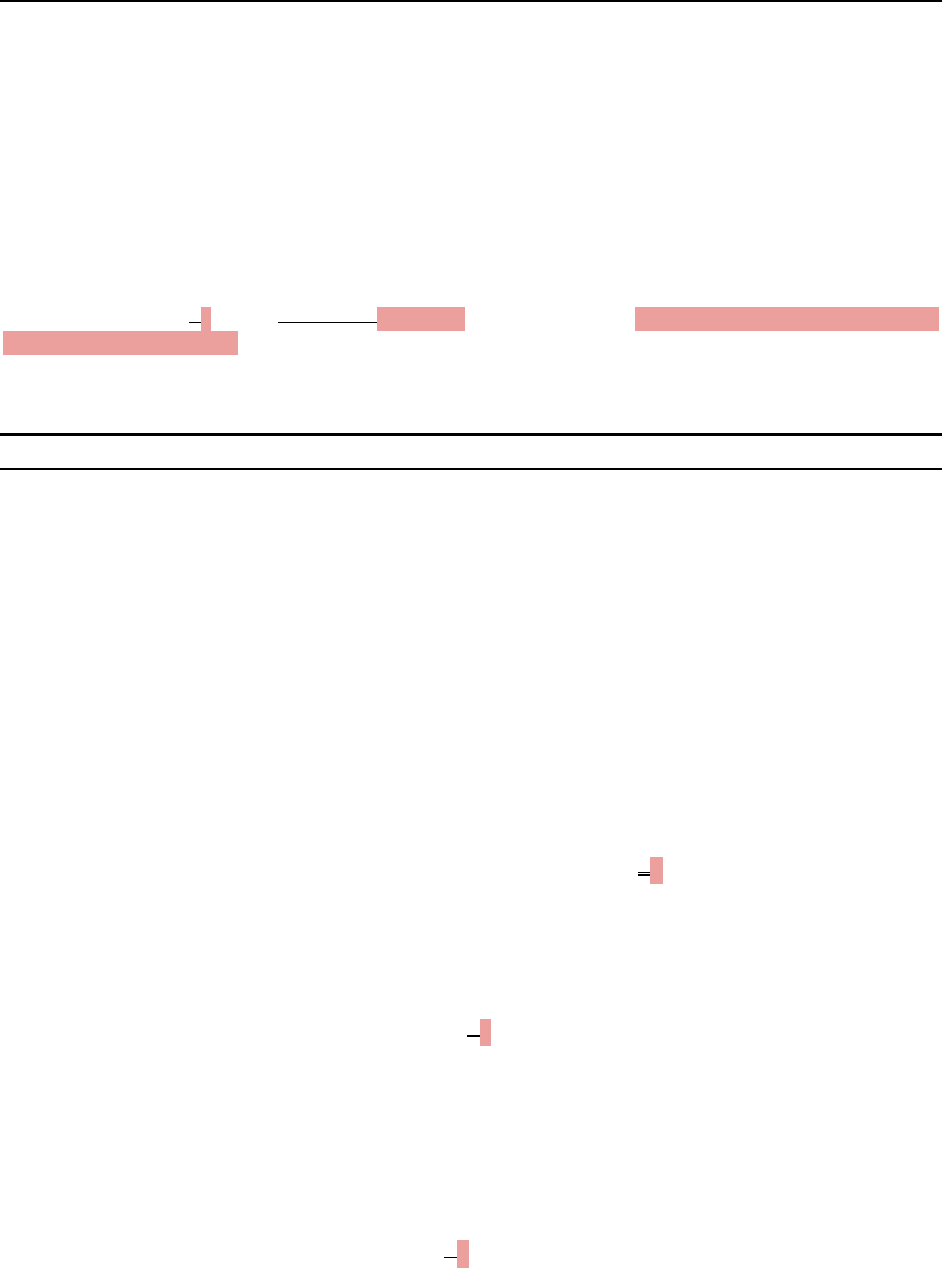
Criminal History
April 27, 2023 | 85
variations in offense definitions, sentencing structures, and manner of sentence pronouncement. To
minimize problems with imperfect measures of past crime seriousness, criminal history categories are
based on the maximum term imposed in previous sentences rather than on other measures, such as
whether the conviction was designated a felony or misdemeanor. In recognition of the imperfection of
this measure however, §4A1.3 authorizes the court to depart from the otherwise applicable criminal
history category in certain circumstances.
Subsections (a), (b), and (c) of §4A1.1 distinguish confinement sentences longer than one year
and one month, shorter confinement sentences of at least sixty days, and all other sentences, such as
confinement sentences of less than sixty days, probation, fines, and residency in a halfway house.
Section 4A1.1(de) adds two pointsone point if the defendant receives 7 or more points under
§4A1.1(a) through (d) and was under a criminal justice sentence during any part of the instant offense.
* * *
§4A1.2. Definitions and Instructions for Computing Criminal History
(a) P
RIOR SENTENCE
* * *
(2) If the defendant has multiple prior sentences, determine whether
those sentences are counted separately or treated as a single sentence.
Prior sentences always are counted separately if the sentences were
imposed for offenses that were separated by an intervening arrest
(i.e., the defendant is arrested for the first offense prior to committing
the second offense). If there is no intervening arrest, prior sentences
are counted separately unless (A) the sentences resulted from offenses
contained in the same charging instrument; or (B) the sentences were
imposed on the same day. Treat any prior sentence covered by (A) or
(B) as a single sentence. See also §4A1.1(ed).
* * *
(m) EFFECT OF A VIOLATION WARRANT
For the purposes of §4A1.1(de), a defendant who commits the instant
offense while a violation warrant from a prior sentence is outstanding
(e.g., a probation, parole, or supervised release violation warrant) shall be
deemed to be under a criminal justice sentence if that sentence is otherwise
countable, even if that sentence would have expired absent such warrant.
(n) F
AILURE TO REPORT FOR SERVICE OF SENTENCE OF IMPRISONMENT
For the purposes of §4A1.1(de), failure to report for service of a sentence of
imprisonment shall be treated as an escape from such sentence.

Criminal History
86 | April 27, 2023
* * *
(p) C
RIME OF VIOLENCE DEFINED
For the purposes of §4A1.1(ed), the definition of “crime of violence” is that
set forth in §4B1.2(a).
* * *

Criminal History
April 27, 2023 | 87
Part B (Zero-Point Offenders)
Subpart 1 (Adjustment for Certain Zero-Point Offenders)
CHAPTER FOUR
CRIMINAL HISTORY
AND CRIMINAL LIVELIHOOD
* * *
PART C ― ADJUSTMENT FOR CERTAIN ZERO-POINT OFFENDERS
§4C1.1. Adjustment for Certain Zero-Point Offenders
(a) ADJUSTMENT.—If the defendant meets all of the following criteria:
(1) the defendant did not receive any criminal history points from
Chapter Four, Part A;
(2) the defendant did not receive an adjustment under §3A1.4
(Terrorism);
(3) the defendant did not use violence or credible threats of violence in
connection with the offense;
(4) the offense did not result in death or serious bodily injury;
(5) the instant offense of conviction is not a sex offense;
(6) the defendant did not personally cause substantial financial hardship;
(7) the defendant did not possess, receive, purchase, transport, transfer,
sell, or otherwise dispose of a firearm or other dangerous weapon (or
induce another participant to do so) in connection with the offense;
(8) the instant offense of conviction is not covered by §2H1.1 (Offenses
Involving Individual Rights);
(9) the defendant did not receive an adjustment under §3A1.1 (Hate
Crime Motivation or Vulnerable Victim) or §3A1.5 (Serious Human
Rights Offense); and

Criminal History
88 | April 27, 2023
(10) the defendant did not receive an adjustment under §3B1.1
(Aggravating Role) and was not engaged in a continuing criminal
enterprise, as defined in 21 U.S.C. § 848;
decrease the offense level determined under Chapters Two and Three by
2 levels.
(b) DEFINITIONS AND ADDITIONAL CONSIDERATIONS.—
(1) “Dangerous weapon,” “firearm,” “offense,” and “serious bodily
injury” have the meaning given those terms in the Commentary to
§1B1.1 (Application Instructions).
(2) “Sex offense” means (A) an offense, perpetrated against a minor,
under (i) chapter 109A of title 18, United States Code; (ii) chapter 110
of title 18, not including a recordkeeping offense; (iii) chapter 117 of
title 18, not including transmitting information about a minor or filing
a factual statement about an alien individual; or (iv) 18 U.S.C. § 1591;
or (B) an attempt or a conspiracy to commit any offense described in
subparagraphs (A)(i) through (iv) of this definition.
(3) In determining whether the defendant’s acts or omissions resulted in
“substantial financial hardship” to a victim, the court shall
consider, among other things, the non-exhaustive list of factors
provided in Application Note 4(F) of the Commentary to §2B1.1
(Theft, Property Destruction, and Fraud).
Commentary
Application Notes:
1. Application of Subsection (a)(6).—The application of subsection (a)(6) is to be determined
independently of the application of subsection (b)(2) of §2B1.1 (Theft, Property Destruction, and
Fraud).
2. Upward Departure.—An upward departure may be warranted if an adjustment under this
guideline substantially underrepresents the seriousness of the defendant’s criminal history. For
example, an upward departure may be warranted if the defendant has a prior conviction or other
comparable judicial disposition for an offense that involved violence or credible threats of
violence.
* * *

Criminal History
April 27, 2023 | 89
Subpart 2 (Implementation of 28 U.S.C. § 994(j))
§5C1.1. Imposition of a Term of Imprisonment
(a) A sentence conforms with the guidelines for imprisonment if it is within
the minimum and maximum terms of the applicable guideline range.
(b) If the applicable guideline range is in Zone A of the Sentencing Table, a
sentence of imprisonment is not required, unless the applicable guideline
in Chapter Two expressly requires such a term.
(c) If the applicable guideline range is in Zone B of the Sentencing Table, the
minimum term may be satisfied by—
(1) a sentence of imprisonment; or
(2) a sentence of imprisonment that includes a term of supervised release
with a condition that substitutes community confinement or home
detention according to the schedule in subsection (e), provided that at
least one month is satisfied by imprisonment; or
(3) a sentence of probation that includes a condition or combination of
conditions that substitute intermittent confinement, community
confinement, or home detention for imprisonment according to the
schedule in subsection (e).
(d) If the applicable guideline range is in Zone C of the Sentencing Table, the
minimum term may be satisfied by—
(1) a sentence of imprisonment; or
(2) a sentence of imprisonment that includes a term of supervised release
with a condition that substitutes community confinement or home
detention according to the schedule in subsection (e), provided that at
least one-half of the minimum term is satisfied by imprisonment.
(e) Schedule of Substitute Punishments:
(1) One day of intermittent confinement in prison or jail for one day of
imprisonment (each 24 hours of confinement is credited as one day of
intermittent confinement, provided, however, that one day shall be
credited for any calendar day during which the defendant is employed
in the community and confined during all remaining hours);

Criminal History
90 | April 27, 2023
(2) One day of community confinement (residence in a community
treatment center, halfway house, or similar residential facility) for
one day of imprisonment;
(3) One day of home detention for one day of imprisonment.
(f) If the applicable guideline range is in Zone D of the Sentencing Table, the
minimum term shall be satisfied by a sentence of imprisonment.
Commentary
Application Notes:
1. Application of Subsection (a).—Subsection (a) provides that a sentence conforms with the
guidelines for imprisonment if it is within the minimum and maximum terms of the applicable
guideline range specified in the Sentencing Table in Part A of this Chapter. For example, if the
defendant has an Offense Level of 20 and a Criminal History Category of I, the applicable
guideline range is 33–41 months of imprisonment. Therefore, a sentence of imprisonment of at
least thirty-three months, but not more than forty-one months, is within the applicable guideline
range.
2. Application of Subsection (b).—Subsection (b) provides that where the applicable guideline
range is in Zone A of the Sentencing Table (i.e., the minimum term of imprisonment specified in
the applicable guideline range is zero months), the court is not required to impose a sentence of
imprisonment unless a sentence of imprisonment or its equivalent is specifically required by the
guideline applicable to the offense. Where imprisonment is not required, the court, for example,
may impose a sentence of probation. In some cases, a fine appropriately may be imposed as the
sole sanction.
3. Application of Subsection (c).—Subsection (c) provides that where the applicable guideline
range is in Zone B of the Sentencing Table (i.e., the minimum term of imprisonment specified in
the applicable guideline range is at least one but not more than nine months), the court has three
options:
(A) It may impose a sentence of imprisonment.
(B) It may impose a sentence of probation provided that it includes a condition of probation
requiring a period of intermittent confinement, community confinement, or home detention,
or combination of intermittent confinement, community confinement, and home detention,
sufficient to satisfy the minimum period of imprisonment specified in the guideline range.
For example, where the guideline range is 4–10 months, a sentence of probation with a
condition requiring at least four months of intermittent confinement, community
confinement, or home detention would satisfy the minimum term of imprisonment specified
in the guideline range.
(C) Or, it may impose a sentence of imprisonment that includes a term of supervised release
with a condition that requires community confinement or home detention. In such case, at
least one month must be satisfied by actual imprisonment and the remainder of the
minimum term specified in the guideline range must be satisfied by community
confinement or home detention. For example, where the guideline range is 4–10 months, a
sentence of imprisonment of one month followed by a term of supervised release with a
condition requiring three months of community confinement or home detention would
satisfy the minimum term of imprisonment specified in the guideline range.
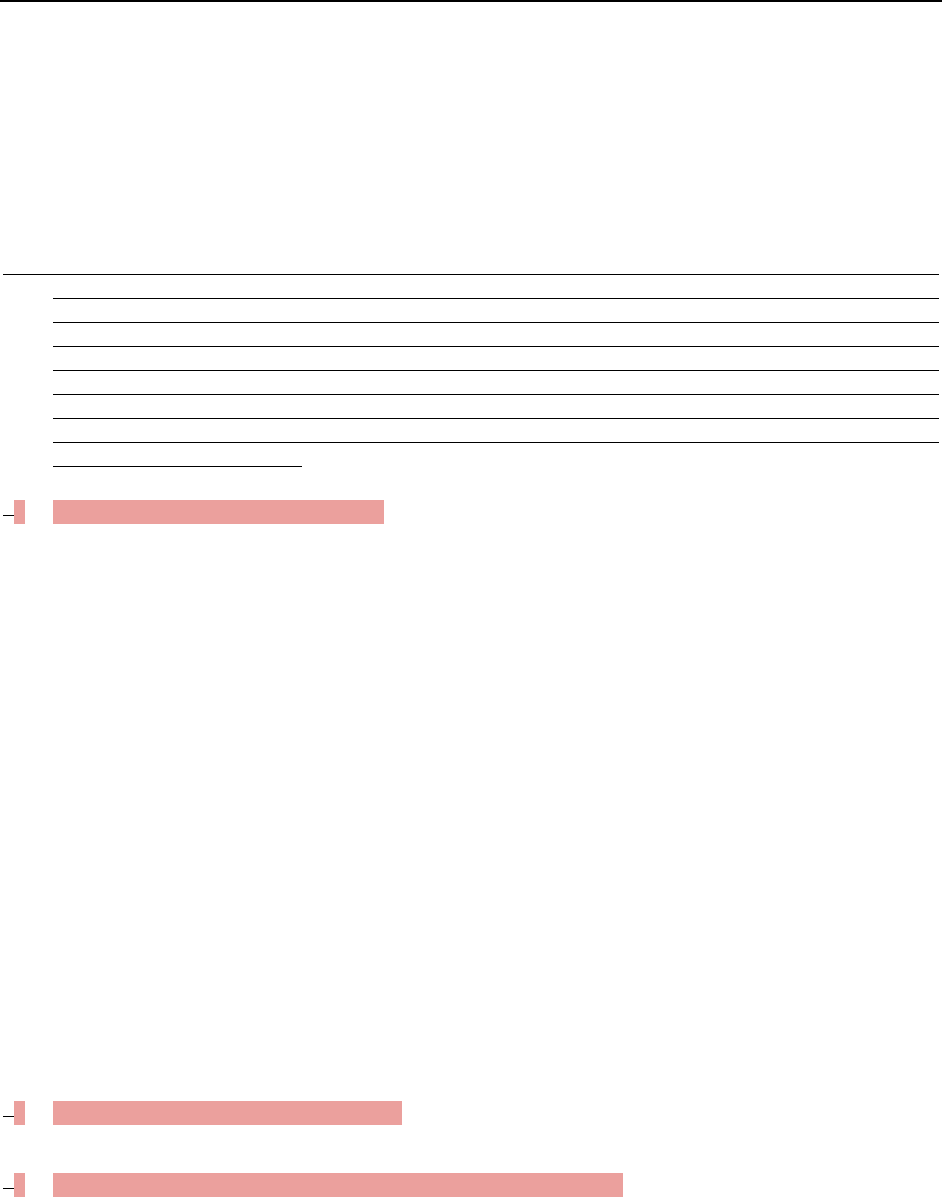
Criminal History
April 27, 2023 | 91
The preceding examples illustrate sentences that satisfy the minimum term of imprisonment
required by the guideline range. The court, of course, may impose a sentence at a higher point
within the applicable guideline range. For example, where the guideline range is 4–10 months,
both a sentence of probation with a condition requiring six months of community confinement or
home detention (under subsection (c)(3)) and a sentence of two months imprisonment followed
by a term of supervised release with a condition requiring four months of community confinement
or home detention (under subsection (c)(2)) would be within the guideline range.
4. If the defendant is a nonviolent first offender and the applicable guideline range is in Zone A or B
of the Sentencing Table, the court should consider imposing a sentence other than a sentence of
imprisonment, in accordance with subsection (b) or (c)(3). See 28 U.S.C. § 994(j). For purposes of
this application note, a “nonviolent first offender” is a defendant who has no prior convictions
or other comparable judicial dispositions of any kind and who did not use violence or credible
threats of violence or possess a firearm or other dangerous weapon in connection with the offense
of conviction. The phrase “comparable judicial dispositions of any kind” includes diversionary or
deferred dispositions resulting from a finding or admission of guilt or a plea of nolo contendere
and juvenile adjudications.
54. Application of Subsection (d).—Subsection (d) provides that where the applicable guideline
range is in Zone C of the Sentencing Table (i.e., the minimum term specified in the applicable
guideline range is ten or twelve months), the court has two options:
(A) It may impose a sentence of imprisonment.
(B) Or, it may impose a sentence of imprisonment that includes a term of supervised release
with a condition requiring community confinement or home detention. In such case, at least
one-half of the minimum term specified in the guideline range must be satisfied by
imprisonment, and the remainder of the minimum term specified in the guideline range
must be satisfied by community confinement or home detention. For example, where the
guideline range is 10–16 months, a sentence of five months imprisonment followed by a
term of supervised release with a condition requiring five months community confinement
or home detention would satisfy the minimum term of imprisonment required by the
guideline range.
The preceding example illustrates a sentence that satisfies the minimum term of imprisonment
required by the guideline range. The court, of course, may impose a sentence at a higher point
within the guideline range. For example, where the guideline range is 10–16 months, both a
sentence of five months imprisonment followed by a term of supervised release with a condition
requiring six months of community confinement or home detention (under subsection (d)), and a
sentence of ten months imprisonment followed by a term of supervised release with a condition
requiring four months of community confinement or home detention (also under subsection (d))
would be within the guideline range.
65. Application of Subsection (e).—Subsection (e) sets forth a schedule of imprisonment
substitutes.
76. Departures Based on Specific Treatment Purpose.—There may be cases in which a
departure from the sentencing options authorized for Zone C of the Sentencing Table (under
which at least half the minimum term must be satisfied by imprisonment) to the sentencing
options authorized for Zone B of the Sentencing Table (under which all or most of the minimum
term may be satisfied by intermittent confinement, community confinement, or home detention
instead of imprisonment) is appropriate to accomplish a specific treatment purpose. Such a

Criminal History
92 | April 27, 2023
departure should be considered only in cases where the court finds that (A) the defendant is an
abuser of narcotics, other controlled substances, or alcohol, or suffers from a significant mental
illness, and (B) the defendant’s criminality is related to the treatment problem to be addressed.
In determining whether such a departure is appropriate, the court should consider, among other
things, (1) the likelihood that completion of the treatment program will successfully address the
treatment problem, thereby reducing the risk to the public from further crimes of the defendant,
and (2) whether imposition of less imprisonment than required by Zone C will increase the risk
to the public from further crimes of the defendant.
Examples: The following examples both assume the applicable guideline range is 12–18 months
and the court departs in accordance with this application note. Under Zone C rules, the defendant
must be sentenced to at least six months imprisonment. (1) The defendant is a nonviolent drug
offender in Criminal History Category I and probation is not prohibited by statute. The court
departs downward to impose a sentence of probation, with twelve months of intermittent
confinement, community confinement, or home detention and participation in a substance abuse
treatment program as conditions of probation. (2) The defendant is convicted of a Class A or B
felony, so probation is prohibited by statute (see §5B1.1(b)). The court departs downward to
impose a sentence of one month imprisonment, with eleven months in community confinement
or home detention and participation in a substance abuse treatment program as conditions of
supervised release.
87. Use of Substitutes for Imprisonment.—The use of substitutes for imprisonment as provided
in subsections (c) and (d) is not recommended for most defendants with a criminal history
category of III or above.
98. Residential Treatment Program.—In a case in which community confinement in a residential
treatment program is imposed to accomplish a specific treatment purpose, the court should
consider the effectiveness of the residential treatment program.
109. Application of Subsection (f).—Subsection (f) provides that, where the applicable guideline
range is in Zone D of the Sentencing Table (i.e., the minimum term of imprisonment specified in
the applicable guideline range is 15 months or more), the minimum term must be satisfied by a
sentence of imprisonment without the use of any of the imprisonment substitutes in
subsection (e).
10. Zero-Point Offenders.—
(A) Zero-Point Offenders in Zones A and B of the Sentencing Table.—If the defendant
received an adjustment under §4C1.1 (Adjustment for Certain Zero-Point Offenders) and
the defendant’s applicable guideline range is in Zone A or B of the Sentencing Table, a
sentence other than a sentence of imprisonment, in accordance with subsection (b) or (c)(3),
is generally appropriate. See 28 U.S.C. § 994(j).
(B) Departure for Cases Where the Applicable Guideline Range Overstates the
Gravity of the Offense.—A departure, including a departure to a sentence other than a
sentence of imprisonment, may be appropriate if the defendant received an adjustment
under §4C1.1 (Adjustment for Certain Zero-Point Offenders) and the defendant’s applicable
guideline range overstates the gravity of the offense because the offense of conviction is not
a crime of violence or an otherwise serious offense. See 28 U.S.C. § 994(j).
* * *

Criminal History
April 27, 2023 | 93
Subpart 3 (Additional Changes)
CHAPTER ONE
INTRODUCTION, AUTHORITY,
AND GENERAL APPLICATION PRINCIPLES
PART A ― INTRODUCTION AND AUTHORITY
* * *
1. ORIGINAL INTRODUCTION TO THE GUIDELINES MANUAL
* * *
4. The Guidelines’ Resolution of Major Issues (Policy Statement)
* * *
(d) Probation and Split Sentences.
The statute provides that the guidelines are to “reflect the general appropriateness
of imposing a sentence other than imprisonment in cases in which the defendant is a
first offender who has not been convicted of a crime of violence or an otherwise serious
offense . . . .” 28 U.S.C. § 994(j). Under pre-guidelines sentencing practice, courts
sentenced to probation an inappropriately high percentage of offenders guilty of certain
economic crimes, such as theft, tax evasion, antitrust offenses, insider trading, fraud,
and embezzlement, that in the Commission’s view are “serious.”
The Commission’s solution to this problem has been to write guidelines that
classify as serious many offenses for which probation previously was frequently given
and provide for at least a short period of imprisonment in such cases. The Commission
concluded that the definite prospect of prison, even though the term may be short, will
serve as a significant deterrent, particularly when compared with pre-guidelines
practice where probation, not prison, was the norm.
More specifically, the guidelines work as follows in respect to a first offender. For
offense levels one through eight, the sentencing court may elect to sentence the offender
to probation (with or without confinement conditions) or to a prison term. For offense
levels nine and ten, the court may substitute probation for a prison term, but the
probation must include confinement conditions (community confinement, intermittent
confinement, or home detention). For offense levels eleven and twelve, the court must
impose at least one-half the minimum confinement sentence in the form of prison
confinement, the remainder to be served on supervised release with a condition of
community confinement or home detention.* The Commission, of course, has not dealt

Criminal History
94 | April 27, 2023
with the single acts of aberrant behavior that still may justify probation at higher
offense levels through departures.**
*Note: The Commission expanded Zones B and C of the Sentencing Table in 2010 to provide a greater range of sentencing
options to courts with respect to certain offenders. (See USSG App. C, amendment 738.) In 2018, the Commission added
a new application note to the Commentary to §5C1.1 (Imposition of a Term of Imprisonment), stating that if a defendant
is a “nonviolent first offender and the applicable guideline range is in Zone A or B of the Sentencing Table, the court
should consider imposing a sentence other than a sentence of imprisonment.” (See USSG App. C, amendment 801.)
In 2023, the Commission added a new Chapter Four guideline, at §4C1.1 (Adjustment for Certain Zero-Point Offenders),
providing a decrease of 2 levels from the offense level determined under Chapters Two and Three for “zero-point”
offenders who meet certain criteria. In addition, the Commission further amended the Commentary to §5C1.1 to address
the alternatives to incarceration available to “zero-point” offenders by revising the application note in §5C1.1 that
addressed “nonviolent first offenders” to focus on “zero-point” offenders. (See USSG App. C, amendment 821.)
**Note: Although the Commission had not addressed “single acts of aberrant behavior” at the time the Introduction to
the Guidelines Manual originally was written, it subsequently addressed the issue in Amendment 603, effective
November 1, 2000. (See USSG App. C, amendment 603.)
* * *
§4A1.3. Departures Based on Inadequacy of Criminal History Category (Policy
Statement)
* * *
(b) D
OWNWARD DEPARTURES.—
* * *
(2) PROHIBITIONS.—
(A) CRIMINAL HISTORY CATEGORY I.—AUnless otherwise specified, a
departure below the lower limit of the applicable guideline range
for Criminal History Category I is prohibited.
* * *
Commentary
Application Notes:
* * *
3. Downward Departures.—A downward departure from the defendant’s criminal history
category may be warranted if, for example, the defendant had two minor misdemeanor
convictions close to ten years prior to the instant offense and no other evidence of prior criminal
behavior in the intervening period. A departure below the lower limit of the applicable guideline
range for Criminal History Category I is prohibited under subsection (b)(2)(A), due to the fact
that the lower limit of the guideline range for Criminal History Category I is set for a first
offender with the lowest risk of recidivismunless otherwise specified.
* * *
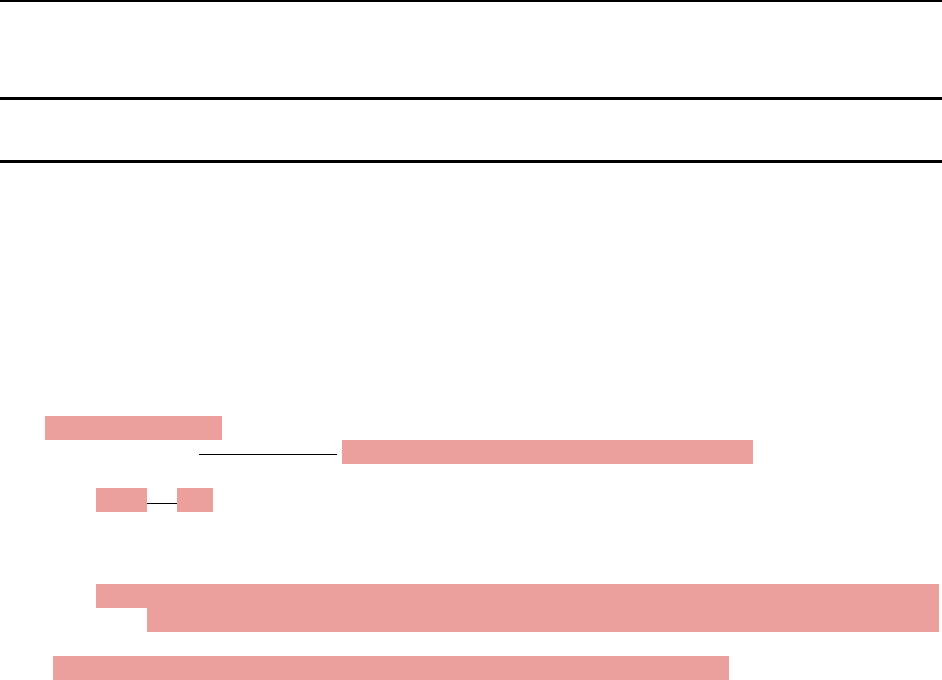
Criminal History
April 27, 2023 | 95
Part C (Impact of Simple Possession of Marihuana Offenses)
§4A1.3. Departures Based on Inadequacy of Criminal History Category (Policy
Statement)
* * *
Commentary
Application Notes:
* * *
3. Downward Departures.—
(A) Examples.—A downward departure from the defendant’s criminal history category may be
warranted if, for example, based on any of the following circumstances:
(i) theThe defendant had two minor misdemeanor convictions close to ten years prior to
the instant offense and no other evidence of prior criminal behavior in the intervening
period.
(ii) The defendant received criminal history points from a sentence for possession of
marihuana for personal use, without an intent to sell or distribute it to another person.
(B) Downward Departures from Criminal History Category I.—A departure below the
lower limit of the applicable guideline range for Criminal History Category I is prohibited
under subsection (b)(2)(A), due to the fact that the lower limit of the guideline range for
Criminal History Category I is set for a first offender with the lowest risk of recidivism.
* * *
96 | April 27, 2023
9. CAREER OFFENDER
Reason for Amendment: This amendment is a result of the Commission’s work on §4B1.2
(Definitions of Terms Used in Section 4B1.1) regarding several application issues that have
arisen in the context of the career offender guideline. As part of this study, the Commission
considered varying case law interpreting certain guideline definitions and commentary to
the guideline. Informed by the case law, public comment and relevant sentencing data, this
amendment specifically addresses application issues regarding the meaning of “robbery”
and “extortion” and the treatment of inchoate offenses. The amendment also makes
necessary changes to further implement the congressional directive at 28 U.S.C. § 994(h).
The amendment makes several changes to address a circuit conflict regarding the
authoritative weight afforded to certain commentary to §4B1.2. The commentary to §4B1.2
prior to the amendment provided that the definitions of “crime of violence” and “controlled
substance offense” include the offenses of aiding and abetting, conspiring, and attempting
to commit such offenses. Although most circuits had previously held that this commentary
was authoritative under Stinson v. United States, 508 U.S. 36 (1993), several courts have
now concluded that the guideline definition of “controlled substance offense” does not
include inchoate offenses because such offenses are not expressly included in the guideline
text. See United States v. Dupree, 57 F.4th 1269 (11th Cir. 2023) (en banc); United States v.
Campbell, 22 F.4th 438 (4th Cir. 2022); United States v. Nasir, 17 F.4th 459 (3d Cir. 2021)
(en banc); United States v. Havis, 927 F.3d 382 (6th Cir. 2019) (en banc); United States v.
Winstead, 890 F.3d 1082 (D.C. Cir. 2018). Several courts held that the Commission
exceeded its authority under Stinson when it attempted to incorporate inchoate offenses
into §4B1.2(b)’s definition through the commentary, finding that the commentary can only
interpret or explain the guideline, it cannot expand its scope by adding qualifying offenses.
See, e.g., Havis, 927 F.3d at 385–87. More recently, courts have relied on Kisor v. Wilkie,
139 S. Ct. 2400 (2022), to hold that guideline commentary should not be afforded deference
unless the guideline text is genuinely ambiguous. See, e.g., Dupree, 57 F.4th at 1275.
Applying the Kisor holding to the guidelines, courts have concluded that the plain language
definition of “controlled substance offense” in §4B1.2 unambiguously excludes inchoate
offenses. Similarly, courts have held that “crime of violence” excludes conspiracies because
the §4B1.2 commentary does not warrant Kisor deference. See, e.g., United States v. Abreu,
32 F.4th 271, 277–78 (3d Cir. 2022).
The amendment addresses this circuit conflict by moving, without change, the commentary
including certain inchoate and accessory offenses in the definitions of “crime of violence”
and “controlled substance offense” to the text of the guideline. While not the subject of the
circuit conflict, the amendment also moves the definitions of enumerated offenses
(i.e., “forcible sex offense” and “extortion”) and “prior felony conviction” from the
commentary to a new subsection (e) in the guideline to avoid similar challenges to their
applicability.
The amendment next addresses a concern that Hobbs Act robbery offenses no longer qualify
as “crimes of violence” under §4B1.2. In 2016, the Commission amended §4B1.2 to, among
other things, delete the “residual clause” and revise the “enumerated clause” by moving
enumerated offenses that were previously listed in the commentary to the guideline itself.
Although the guideline generally relies on existing case law for purposes of defining most

Career Offender
April 27, 2023 | 97
enumerated offenses, the amendment added to the Commentary to §4B1.2 definitions for
two of the enumerated offenses: “forcible sex offense” and “extortion.” Consistent with the
Commission’s goal of focusing the career offender and related enhancements on the most
dangerous offenders, the amendment narrowed the generic definition of extortion by
limiting it to offenses having an element of force or an element of fear or threat “of physical
injury,” as opposed to non-violent threats such as injury to reputation. As such, extortion is
defined as “obtaining something of value from another by the wrongful use of (A) force,
(B) fear of physical injury, or (C) threat of physical injury.”
After the 2016 amendment, every Court of Appeals addressing the issue under the
guidelines has held that Hobbs Act robbery is not a “crime of violence” under §4B1.2,
reasoning that neither generic robbery nor the guidelines definition of extortion encompass
threats against property while the Hobbs Act defines “robbery” as, among other things, “the
unlawful taking or obtaining of personal property . . . by means of actual or threatened
force, or violence, or fear of injury, immediate or future, to his person or property . . . . ”
See 18 U.S.C. § 1951(b)(1) (emphasis added); United States v. Chappelle, 41 F.4th 102
(2d Cir. 2022); United States v. Scott, 14 F.4th 190 (3d Cir. 2021); United States v. Prigan,
8 F.4th 1115 (9th Cir. 2021); United States v. Green, 996 F.3d 176 (4th Cir. 2021); Bridges v.
United States, 991 F.3d 793 (7th Cir. 2021); United States v. Eason, 953 F.3d 1184
(11th Cir. 2020); United States v. Camp, 903 F.3d 594 (6th Cir. 2018); United States v.
O’Connor, 874 F.3d 1147 (10th Cir. 2017).
The amendment amends §4B1.2 to add to the new subsection (e) a definition of “robbery”
that mirrors the “robbery” definition at 18 U.S.C. § 1951(b)(1) and makes a conforming
change to §2L1.2 (Illegal Reentry), which also includes robbery as an enumerated offense.
The Commission views the recent decisions holding that Hobbs Act robbery is not a crime of
violence under the guidelines as an unintended consequence of the 2016 amendment to the
career offender guideline meant to remove threats to reputation. In addition, the
Commission conducted an analysis of recent cases and found that the Hobbs Act robberies
overwhelmingly involved violence.
The amendment clarifies that “actual or threatened force” for purposes of the new “robbery”
definition is “force sufficient to overcome a victim’s resistance.” The Commission concludes
that such definition, relying on the Supreme Court’s decision in Stokeling v. United States,
139 S. Ct. 544 (2019), would eliminate potential litigation over the meaning of actual or
threatened force in this context and is consistent with the level of force necessary for a
robbery under the force clause.
Finally, the amendment revises the definition of “controlled substance offense” in §4B1.2(b)
to include “an offense described in 46 U.S.C. § 70503(a) or § 70506(b).” The directive at
28 U.S.C. § 994(h) instructs the Commission to assure that “the guidelines specify a term of
imprisonment at or near the maximum term authorized” for offenders who are 18 years or
older and have been convicted of a felony that is, and have previously been convicted of two
or more felonies that are, among other things, “an offense described in . . . chapter 705 of
title 46.” See 28 U.S.C. § 994(h). In 2016, Congress enacted the Coast Guard Authorization
Act of 2015, Pub. L. 114–120 (2016), which amended Chapter 705 of Title 46 by adding two
new offenses to section 70503(a), in subparagraphs (2) and (3). Following this statutory

Career Offender
98 | April 27, 2023
change, these two new offenses are not covered by the pre-amendment definition of
“controlled substance offense” in §4B1.2 as required by the directive.
Amendment:
§2L1.2. Unlawfully Entering or Remaining in the United States
* * *
Commentary
* * *
Application Notes:
* * *
2. Definitions.—For purposes of this guideline:
“Crime of violence” means any of the following offenses under federal, state, or local law:
murder, voluntary manslaughter, kidnapping, aggravated assault, a forcible sex offense, robbery,
arson, extortion, the use or unlawful possession of a firearm described in 26 U.S.C. § 5845(a) or
explosive material as defined in 18 U.S.C. § 841(c), or any other offense under federal, state, or
local law that has as an element the use, attempted use, or threatened use of physical force
against the person of another. “Forcible sex offense” includes where consent to the conduct is not
given or is not legally valid, such as where consent to the conduct is involuntary, incompetent, or
coerced. The offenses of sexual abuse of a minor and statutory rape are included only if the sexual
abuse of a minor or statutory rape was (A) an offense described in 18 U.S.C. § 2241(c) or (B) an
offense under state law that would have been an offense under section 2241(c) if the offense had
occurred within the special maritime and territorial jurisdiction of the United States. “Robbery”
is the unlawful taking or obtaining of personal property from the person or in the presence of
another, against his will, by means of actual or threatened force, or violence, or fear of injury,
immediate or future, to his person or property, or property in his custody or possession, or the
person or property of a relative or member of his family or of anyone in his company at the time
of the taking or obtaining. The phrase “actual or threatened force” refers to force that is sufficient
to overcome a victim’s resistance. “Extortion” is obtaining something of value from another by
the wrongful use of (A) force, (B) fear of physical injury, or (C) threat of physical injury.
* * *
§4B1.2. Definitions of Terms Used in Section 4B1.1
(a) CRIME OF VIOLENCE.—The term “crime of violence” means any offense
under federal or state law, punishable by imprisonment for a term
exceeding one year, that—
(1) has as an element the use, attempted use, or threatened use of
physical force against the person of another,; or

Career Offender
April 27, 2023 | 99
(2) is murder, voluntary manslaughter, kidnapping, aggravated assault,
a forcible sex offense, robbery, arson, extortion, or the use or unlawful
possession of a firearm described in 26 U.S.C. § 5845(a) or explosive
material as defined in 18 U.S.C. § 841(c).
(b) CONTROLLED SUBSTANCE OFFENSE.—The term “controlled substance
offense” means an offense under federal or state law, punishable by
imprisonment for a term exceeding one year, that—
(1) prohibits the manufacture, import, export, distribution, or dispensing
of a controlled substance (or a counterfeit substance) or the possession
of a controlled substance (or a counterfeit substance) with intent to
manufacture, import, export, distribute, or dispense.; or
(2) is an offense described in 46 U.S.C. § 70503(a) or § 70506(b).
(c) TWO PRIOR FELONY CONVICTIONS.—The term “two prior felony convictions”
means (1) the defendant committed the instant offense of conviction
subsequent to sustaining at least two felony convictions of either a crime
of violence or a controlled substance offense (i.e., two felony convictions of
a crime of violence, two felony convictions of a controlled substance offense,
or one felony conviction of a crime of violence and one felony conviction of
a controlled substance offense), and (2) the sentences for at least two of the
aforementioned felony convictions are counted separately under the
provisions of §4A1.1(a), (b), or (c). The date that a defendant sustained a
conviction shall be the date that the guilt of the defendant has been
established, whether by guilty plea, trial, or plea of nolo contendere.
(d) INCHOATE OFFENSES INCLUDED.—The terms “crime of violence” and
“controlled substance offense” include the offenses of aiding and abetting,
attempting to commit, or conspiring to commit any such offense.
(e) ADDITIONAL DEFINITIONS.—
(1) FORCIBLE SEX OFFENSE.—{“Forcible sex offense” includes where
consent to the conduct is not given or is not legally valid, such as
where consent to the conduct is involuntary, incompetent, or coerced.
The offenses of sexual abuse of a minor and statutory rape are
included only if the sexual abuse of a minor or statutory rape was
(A) an offense described in 18 U.S.C. § 2241(c) or (B) an offense under
state law that would have been an offense under section 2241(c) if the
offense had occurred within the special maritime and territorial
jurisdiction of the United States.}*
* The text in braces currently appears in the Commentary to §4B1.2. The amendment places
the text here.

Career Offender
100 | April 27, 2023
(2) EXTORTION.—{“Extortion” is obtaining something of value from
another by the wrongful use of (A) force, (B) fear of physical injury, or
(C) threat of physical injury.}
*
(3) ROBBERY.—“Robbery” is the unlawful taking or obtaining of personal
property from the person or in the presence of another, against his
will, by means of actual or threatened force, or violence, or fear of
injury, immediate or future, to his person or property, or property in
his custody or possession, or the person or property of a relative or
member of his family or of anyone in his company at the time of the
taking or obtaining. The phrase “actual or threatened force” refers to
force that is sufficient to overcome a victim’s resistance.
(4) PRIOR FELONY CONVICTION.—{“Prior felony conviction” means a
prior adult federal or state conviction for an offense punishable by
death or imprisonment for a term exceeding one year, regardless of
whether such offense is specifically designated as a felony and
regardless of the actual sentence imposed. A conviction for an offense
committed at age eighteen or older is an adult conviction. A conviction
for an offense committed prior to age eighteen is an adult conviction
if it is classified as an adult conviction under the laws of the
jurisdiction in which the defendant was convicted (e.g., a federal
conviction for an offense committed prior to the defendant’s
eighteenth birthday is an adult conviction if the defendant was
expressly proceeded against as an adult).}*
Commentary
Application Notes:
1. DefinitionsFurther Considerations Regarding “Crime of Violence” and “Controlled
Substance Offense”.—For purposes of this guideline—
“Crime of violence” and “controlled substance offense” include the offenses of aiding and
abetting, conspiring, and attempting to commit such offenses.
“Forcible sex offense” includes where consent to the conduct is not given or is not legally valid,
such as where consent to the conduct is involuntary, incompetent, or coerced. The offenses of
sexual abuse of a minor and statutory rape are included only if the sexual abuse of a minor or
statutory rape was (A) an offense described in 18 U.S.C. § 2241(c) or (B) an offense under state
law that would have been an offense under section 2241(c) if the offense had occurred within the
special maritime and territorial jurisdiction of the United States.
“Extortion” is obtaining something of value from another by the wrongful use of (A) force,
(B) fear of physical injury, or (C) threat of physical injury.
* The text in braces currently appears in the Commentary to §4B1.2. The amendment places
the text here.
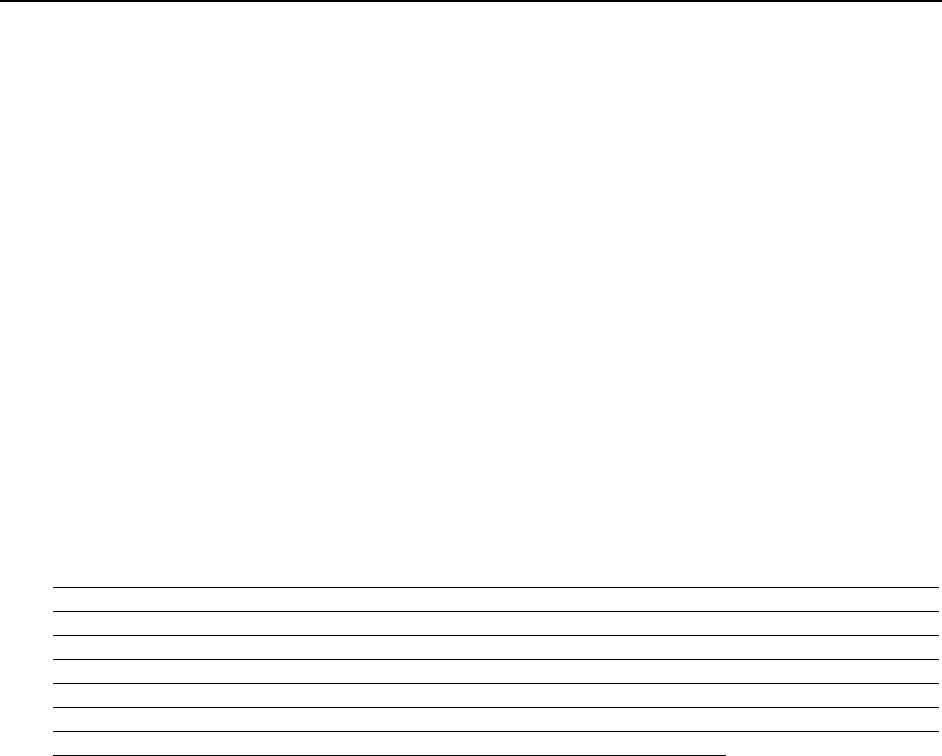
Career Offender
April 27, 2023 | 101
Unlawfully possessing a listed chemical with intent to manufacture a controlled substance
(21 U.S.C. § 841(c)(1)) is a “controlled substance offense.”
Unlawfully possessing a prohibited flask or equipment with intent to manufacture a controlled
substance (21 U.S.C. § 843(a)(6)) is a “controlled substance offense.”
Maintaining any place for the purpose of facilitating a drug offense (21 U.S.C. § 856) is a
“controlled substance offense” if the offense of conviction established that the underlying offense
(the offense facilitated) was a “controlled substance offense.”
Using a communications facility in committing, causing, or facilitating a drug offense (21 U.S.C.
§ 843(b)) is a “controlled substance offense” if the offense of conviction established that the
underlying offense (the offense committed, caused, or facilitated) was a “controlled substance
offense.”
A violation of 18 U.S.C. § 924(c) or § 929(a) is a “crime of violence” or a “controlled substance
offense” if the offense of conviction established that the underlying offense was a “crime of
violence” or a “controlled substance offense”. (Note that in the case of a prior 18 U.S.C. § 924(c)
or § 929(a) conviction, if the defendant also was convicted of the underlying offense, the sentences
for the two prior convictions will be treated as a single sentence under §4A1.2 (Definitions and
Instructions for Computing Criminal History).)
“Prior felony conviction” means a prior adult federal or state conviction for an offense
punishable by death or imprisonment for a term exceeding one year, regardless of whether such
offense is specifically designated as a felony and regardless of the actual sentence imposed. A
conviction for an offense committed at age eighteen or older is an adult conviction. A conviction
for an offense committed prior to age eighteen is an adult conviction if it is classified as an adult
conviction under the laws of the jurisdiction in which the defendant was convicted (e.g., a federal
conviction for an offense committed prior to the defendant’s eighteenth birthday is an adult
conviction if the defendant was expressly proceeded against as an adult).
* * *

102 | April 27, 2023
10. MISCELLANEOUS
Reason for Amendment: This two-part amendment responds to miscellaneous guideline
application issues.
First, the amendment revises subsection (d) of §3D1.2 (Grouping of Closely Related Counts)
to provide that multiple counts involving more than one victim sentenced under §2G1.3
(Promoting a Commercial Sex Act or Prohibited Sexual Conduct with a Minor;
Transportation of Minors to Engage in a Commercial Sex Act or Prohibited Sexual Conduct;
Travel to Engage in Commercial Sex Act or Prohibited Sexual Conduct with a Minor; Sex
Trafficking of Children; Use of Interstate Facilities to Transport Information about a
Minor) are explicitly excluded from grouping under §3D1.2(d). Subsection 3D1.2(d) provides
that certain guidelines are excluded from the operation of the grouping rules in Chapter
Three, Part D (Multiple Counts). Among the guidelines specifically excluded under
§3D1.2(d) is §2G1.1 (Promoting a Commercial Sex Act or Prohibited Sexual Conduct with
an Individual Other than a Minor). When §2G1.3 was promulgated in 2004, some offenses
that were originally referenced to §2G1.1 were moved to the new §2G1.3, but §2G1.3 was
not added to the list of excluded guidelines at §3D1.2(d). See USSG App. C, amend. 664
(effective date: Nov. 1, 2004). The amendment corrects that oversight and treats §2G1.3
similarly to §2G1.1.
Second, the amendment updates the Commentary to §5F1.7 (Shock Incarceration Program
(Policy Statement)) to reflect that the Bureau of Prisons (BOP) no longer operates a shock
incarceration program. The Commentary to §5F1.7 describes the authority of the BOP to
operate a shock incarceration program and the procedures that the BOP established in
1990 regarding operation of such a program. However, the BOP terminated its shock
incarceration program and removed the rules governing its operation in 2008. The
amendment updates the Commentary to §5F1.7 to reflect that shock incarceration is no
longer a potential sentencing option, foreclosing any potential confusion on its current
availability.
Amendment:
§3D1.2. Groups of Closely Related Counts
All counts involving substantially the same harm shall be grouped together into
a single Group. Counts involve substantially the same harm within the
meaning of this rule:
(a) When counts involve the same victim and the same act or transaction.
(b) When counts involve the same victim and two or more acts or transactions
connected by a common criminal objective or constituting part of a common
scheme or plan.

Miscellaneous
April 27, 2023 | 103
(c) When one of the counts embodies conduct that is treated as a specific
offense characteristic in, or other adjustment to, the guideline applicable
to another of the counts.
(d) When the offense level is determined largely on the basis of the total
amount of harm or loss, the quantity of a substance involved, or some other
measure of aggregate harm, or if the offense behavior is ongoing or
continuous in nature and the offense guideline is written to cover such
behavior.
Offenses covered by the following guidelines are to be grouped under this
subsection:
§2A3.5;
§§2B1.1, 2B1.4, 2B1.5, 2B4.1, 2B5.1, 2B5.3, 2B6.1;
§§2C1.1, 2C1.2, 2C1.8;
§§2D1.1, 2D1.2, 2D1.5, 2D1.11, 2D1.13;
§§2E4.1, 2E5.1;
§§2G2.2, 2G3.1;
§2K2.1;
§§2L1.1, 2L2.1;
§2N3.1;
§2Q2.1;
§2R1.1;
§§2S1.1, 2S1.3;
§§2T1.1, 2T1.4, 2T1.6, 2T1.7, 2T1.9, 2T2.1, 2T3.1.
Specifically excluded from the operation of this subsection are:
all offenses in Chapter Two, Part A (except §2A3.5);
§§2B2.1, 2B2.3, 2B3.1, 2B3.2, 2B3.3;
§2C1.5;
§§2D2.1, 2D2.2, 2D2.3;
§§2E1.3, 2E1.4, 2E2.1;
§§2G1.1, 2G1.3, 2G2.1;
§§2H1.1, 2H2.1, 2H4.1;
§§2L2.2, 2L2.5;
§§2M2.1, 2M2.3, 2M3.1, 2M3.2, 2M3.3, 2M3.4, 2M3.5, 2M3.9;
§§2P1.1, 2P1.2, 2P1.3;
§2X6.1.
For multiple counts of offenses that are not listed, grouping under this
subsection may or may not be appropriate; a case-by-case determination
must be made based upon the facts of the case and the applicable
guidelines (including specific offense characteristics and other
adjustments) used to determine the offense level.

Miscellaneous
104 | April 27, 2023
Exclusion of an offense from grouping under this subsection does not
necessarily preclude grouping under another subsection.
* * *
§5F1.7. Shock Incarceration Program (Policy Statement)
The court, pursuant to 18 U.S.C. §§ 3582(a) and 3621(b)(4), may recommend
that a defendant who meets the criteria set forth in 18 U.S.C. § 4046 participate
in a shock incarceration program.
Commentary
Background: Section 4046 of title 18, United States Code, provides—
“(a) the Bureau of Prisons may place in a shock incarceration program any person who is
sentenced to a term of more than 12, but not more than 30 months, if such person consents
to that placement.
(b) For such initial portion of the term of imprisonment as the Bureau of Prisons may
determine, not to exceed six6 months, an inmate in the shock incarceration program shall
be required to—
(1) adhere to a highly regimented schedule that provides the strict discipline, physical
training, hard labor, drill, and ceremony characteristic of military basic training; and
(2) participate in appropriate job training and educational programs (including literacy
programs) and drug, alcohol, and other counseling programs.
(c) An inmate who in the judgment of the Director of the Bureau of Prisons has successfully
completed the required period of shock incarceration shall remain in the custody of the
Bureau for such period (not to exceed the remainder of the prison term otherwise required
by law to be served by that inmate), and under such conditions, as the Bureau deems
appropriate.” 18 U.S.C. § 4046.”
In 1990, theThe Bureau of Prisons has issued an operations memorandum (174-90 (5390),
November 20, 1990) that outlinesoutlined eligibility criteria and procedures for the implementation of
thisa shock incarceration program (which the Bureau of Prisons has titled the “intensive confinement
program”). Under these procedures, the Bureau will not place a defendant in an intensive confinement
program unless the sentencing court has approved, either at the time of sentencing or upon
consultation after the Bureau has determined that the defendant is otherwise eligible. In return for
the successful completion of the “intensive confinement” portion of the program, the defendant is
eligible to serve the remainder of his term of imprisonment in a graduated release program comprised
of community corrections center and home confinement phases.In 2008, however, the Bureau of
Prisons terminated the program and removed the rules governing its operation. See 73 FR 39863
(July 11, 2008).
* * *
April 27, 2023 | 105
11. TECHNICAL
Reason for Amendment: This amendment makes technical, stylistic, and other non-
substantive changes to the Guidelines Manual.
First, the amendment makes clerical changes to correct typographical errors in the
following guidelines and commentary: §1B1.1 (Application Instructions); §1B1.3 (Relevant
Conduct (Factors that Determine the Guideline Range)); §1B1.4 (Information to be Used in
Imposing Sentence (Selecting a Point Within the Guideline Range or Departing from the
Guidelines)); §1B1.10 (Reduction in Term of Imprisonment as a Result of Amended
Guideline Range (Policy Statement)); §2D2.3 (Operating or Directing the Operation of a
Common Carrier Under the Influence of Alcohol or Drugs); §2G2.1 (Sexually Exploiting a
Minor by Production of Sexually Explicit Visual or Printed Material; Custodian Permitting
Minor to Engage in Sexually Explicit Conduct; Advertisement for Minors to Engage in
Production); §2H3.1 (Interception of Communications; Eavesdropping; Disclosure of Certain
Private or Protected Information); §2M1.1 (Treason); §2T1.1 (Tax Evasion; Willful Failure
to File Return, Supply Information, or Pay Tax; Fraudulent or False Returns, Statements,
or Other Documents); the Introductory Commentary to Chapter Two, Part T, Subpart 2
(Alcohol and Tobacco Taxes); the Introductory Commentary to Chapter Two, Part T,
Subpart 3 (Customs Taxes); the Introductory Commentary to Chapter Three, Part A
(Victim-Related Adjustments); §3A1.1 (Hate Crime Motivation or Vulnerable Victim); the
Introductory Commentary to Chapter Three, Part B (Role in the Offense); §3C1.1
(Obstructing or Impeding the Administration of Justice); the Introductory Commentary to
Chapter Three, Part D (Multiple Counts); §3D1.1 (Procedure for Determining Offense Level
on Multiple Counts); §3D1.2 (Groups of Closely Related Counts); §3D1.3 (Offense Level
Applicable to Each Group of Closely Related Counts); §3D1.4 (Determining the Combined
Offense Level); §4A1.3 (Departures Based on Inadequacy of Criminal History Category
(Policy Statement)); §4B1.1 (Career Offender); §5C1.1 (Imposition of a Term of
Imprisonment); §5E1.1 (Restitution); §5E1.3 (Special Assessments); §5E1.4 (Forfeiture); the
Introductory Commentary to Chapter Five, Part H (Specific Offender Characteristics); the
Introductory Commentary to Chapter Six, Part A (Sentencing Procedures); Chapter Seven,
Part A (Introduction to Chapter Seven); §8B1.1 (Restitution ― Organizations); §8B2.1
(Effective Compliance and Ethics Program); §8C3.3 (Reduction of Fine Based on Inability to
Pay); and §8E1.1 (Special Assessments ― Organizations).
Second, the amendment makes clerical changes to the Commentary to §§1B1.11 (Use of
Guidelines Manual in Effect on Date of Sentencing (Policy Statement)) and 5G1.3
(Imposition of a Sentence on a Defendant Subject to an Undischarged Term of
Imprisonment or Anticipated State Term of Imprisonment), to update citations of Supreme
Court cases. In addition, the amendment makes technical changes to (1) the Commentary
to §2K2.4 (Use of Firearm, Armor-Piercing Ammunition, or Explosive During or in Relation
to Certain Crimes), to add a missing reference to 18 U.S.C. § 844(o); (2) the Commentary to
§2M6.1 (Unlawful Activity Involving Nuclear Material, Weapons, or Facilities, Biological
Agents, Toxins, or Delivery Systems, Chemical Weapons, or Other Weapons Of Mass
Destruction; Attempt or Conspiracy), to delete the definitions of two terms that are not
currently used in the guideline; (3) the Commentary to §§2M5.3 (Providing Material
Support or Resources to Designated Foreign Terrorist Organizations or Specially
Designated Global Terrorists, or For a Terrorist Purpose) and 2T1.1 (Tax Evasion; Willful

Technical
106 | April 27, 2023
Failure to File Return, Supply Information, or Pay Tax; Fraudulent or False Returns,
Statements, or Other Documents), to correct references to the Code of Federal Regulations;
and (4) the Commentary to §3A1.2 (Official Victim), to add missing content in Application
Note 3.
Third, the amendment makes technical changes to the Commentary to §§2A4.2
(Demanding or Receiving Ransom Money), 2A6.1 (Threatening or Harassing
Communications; Hoaxes; False Liens), and 2B3.2 (Extortion by Force or Threat of Injury
or Serious Damage), and to Appendix A (Statutory Index), to provide references to the
specific applicable provisions of 18 U.S.C. § 876 (Mailing threatening communications).
Fourth, the amendment makes certain stylistic and technical changes to the Commentary
to §2D1.1 (Unlawful Manufacturing, Importing, Exporting, or Trafficking). It revises the
Drug Conversion Tables at Application Note 8(D) and the Typical Weight Per Unit Table at
Application Note 9 to reorganize the controlled substances contained therein in alphabetical
order to make the tables more user-friendly. The amendment also makes minor changes to
the controlled substance references to promote consistency in the use of capitalization,
commas, parentheticals, and slash symbols throughout the Drug Conversion Tables. In
addition, the amendment makes clerical changes throughout the Commentary to correct
certain typographical errors. It also amends the Background Commentary to add a specific
reference to Amendment 808, which replaced the term “marihuana equivalency” with the
new term “converted drug weight” and changed the title of the “Drug Equivalency Tables”
to “Drug Conversion Tables.”
Fifth, the amendment makes clerical changes to reflect the editorial reclassification of
certain sections of the United States Code. Effective December 1, 2015, the Office of Law
Revision Counsel eliminated the Appendix to title 50 of the United States Code and
transferred the non-obsolete provisions to new chapters 49 to 57 of title 50 and to other
titles of the United States Code. To reflect the new section numbers of the reclassified
provisions, the amendment makes changes to §2M4.1 (Failure to Register and Evasion of
Military Service), §2M5.1 (Evasion of Export Controls; Financial Transactions with
Countries Supporting International Terrorism), and Appendix A. Similarly, effective
September 1, 2016, the Office of Law Revision Counsel also transferred certain provisions
from chapter 14 of title 25 of the United States Code to four new chapters in title 25 to
improve the organization of the title. To reflect these changes, the amendment makes
further changes to Appendix A.
Sixth, the amendment makes technical changes to the commentary of several guidelines in
Chapter Eight (Sentencing of Organizations). It replaces the term “prior criminal
adjudication,” as found and defined in Application Note 3(G) of §8A1.2 (Application
Instructions ― Organizations), with “criminal adjudication” to better reflect how that term
is used throughout Chapter Eight. The amendment also makes conforming changes to the
Commentary to §8C2.5 (Culpability Score) to account for the new term. In addition, the
amendment revises Application Note 1 of §8C3.2 (Payment of the Fine ― Organizations) to
reflect the current language of subsection (d) of 18 U.S.C. § 3572 (Imposition of a sentence
of fine and related matters), providing that if the court permits other than immediate
payment of a fine or other monetary payment, the period provided for payment shall be the
shortest time in which full payment can reasonably be made.

Technical
April 27, 2023 | 107
Finally, the amendment makes clerical changes to provide updated references to certain
sections of the United States Code that were redesignated by legislation. The Frank
LoBiondo Coast Guard Authorization Act of 2018, Pub. L. 115–282 (2018) (hereinafter “the
Act”), among other things, established a new chapter 700 (Ports and Waterway Safety) in
subtitle VII (Security and Drug Enforcement) of title 46 (Shipping) of the United States
Code. Section 401 of the Act repealed the Ports and Waterways Safety Act of 1972,
previously codified in 33 U.S.C. §§ 1221–1232b, and restated its provisions with some
revisions in the new chapter 700 of title 46, specifically at 46 U.S.C. §§ 70001–70036.
Appendix A includes references to Chapter Two guidelines for both former 33 U.S.C.
§§ 1227(b) and 1232(b). The amendment revises Appendix A to delete the references to
33 U.S.C. §§ 1227(b) and 1232(b) and replace them with updated references to 46 U.S.C.
§§ 70035(b) and 70036(b). The Act did not make substantive revisions to either of these
provisions.
Amendment:
§1B1.1. Application Instructions
* * *
Commentary
Application Notes:
1. The following are definitions of terms that are used frequently in the guidelines and are of
general applicability (except to the extent expressly modified in respect to a particular guideline
or policy statement):
* * *
(E) “Dangerous weapon” means (i) an instrument capable of inflicting death or serious bodily
injury; or (ii) an object that is not an instrument capable of inflicting death or serious bodily
injury but (I) closely resembles such an instrument; or (II) the defendant used the object in
a manner that created the impression that the object was such an instrument (e.g.e.g., a
defendant wrapped a hand in a towel during a bank robbery to create the appearance of a
gun).
* * *
§1B1.3. Relevant Conduct (Factors that Determine the Guideline Range)
* * *
Commentary
* * *
Background: This section prescribes rules for determining the applicable guideline sentencing range,
whereas §1B1.4 (Information to be Used in Imposing Sentence) governs the range of information that
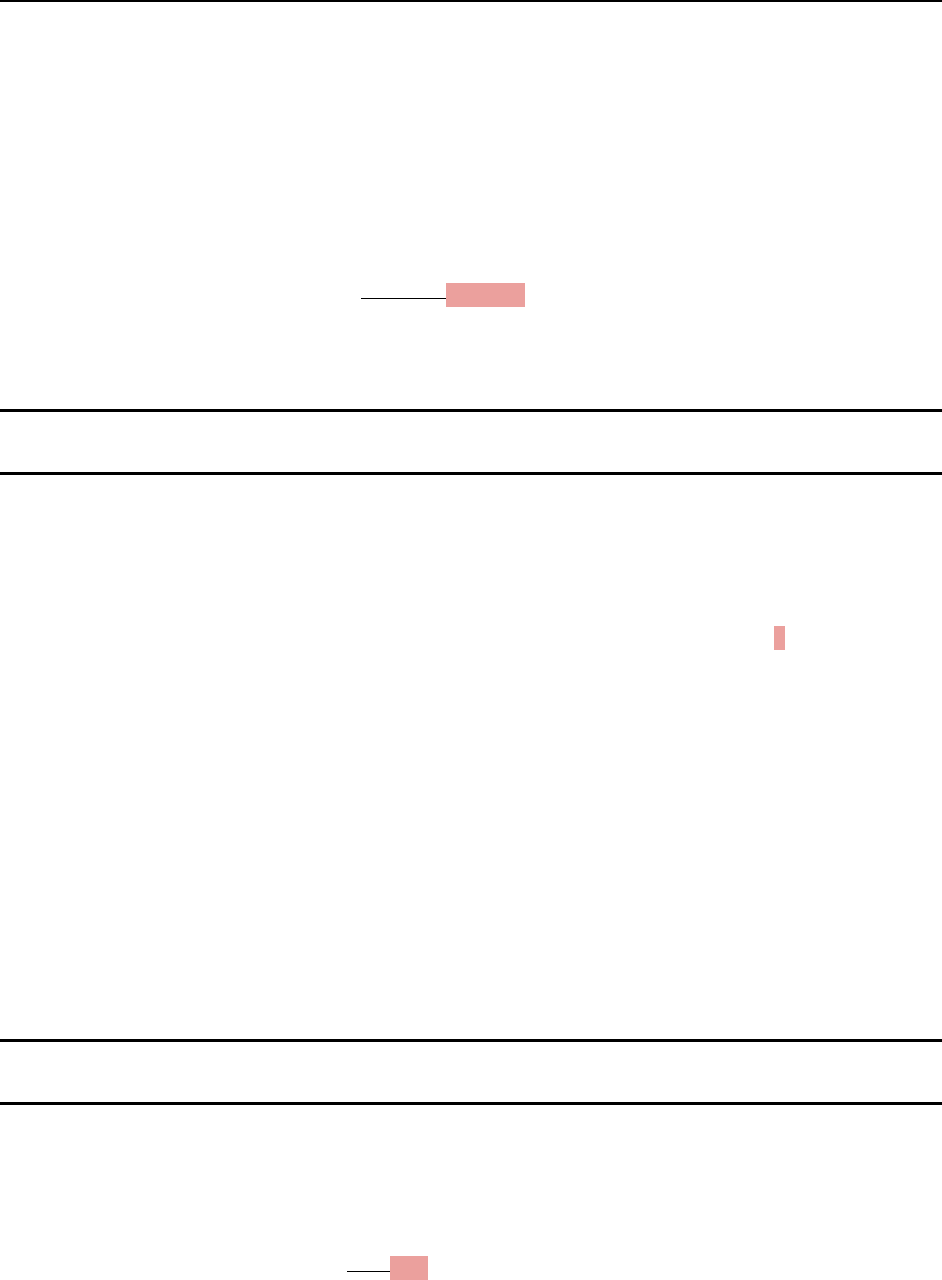
Technical
108 | April 27, 2023
the court may consider in adjudging sentence once the guideline sentencing range has been
determined. Conduct that is not formally charged or is not an element of the offense of conviction may
enter into the determination of the applicable guideline sentencing range. The range of information
that may be considered at sentencing is broader than the range of information upon which the
applicable sentencing range is determined.
Subsection (a) establishes a rule of construction by specifying, in the absence of more explicit
instructions in the context of a specific guideline, the range of conduct that is relevant to determining
the applicable offense level (except for the determination of the applicable offense guideline, which is
governed by §1B1.2(a)). No such rule of construction is necessary with respect to Chapters Four and
Five because the guidelines in those Chapterschapters are explicit as to the specific factors to be
considered.
* * *
§1B1.4. Information to be Used in Imposing Sentence (Selecting a Point Within the
Guideline Range or Departing from the Guidelines)
* * *
Commentary
Background: This section distinguishes between factors that determine the applicable guideline
sentencing range (§1B1.3) and information that a court may consider in imposing a sentence within
that range. The section is based on 18 U.S.C. § 3661, which recodifies 18 U.S.C. § 3577. The
recodification of this 1970 statute in 1984 with an effective date of 1987 (99 Stat. 1728), makes it clear
that Congress intended that no limitation would be placed on the information that a court may
consider in imposing an appropriate sentence under the future guideline sentencing system. A court
is not precluded from considering information that the guidelines do not take into account in
determining a sentence within the guideline range or from considering that information in
determining whether and to what extent to depart from the guidelines. For example, if the defendant
committed two robberies, but as part of a plea negotiation entered a guilty plea to only one, the robbery
that was not taken into account by the guidelines would provide a reason for sentencing at the top of
the guideline range and may provide a reason for an upward departure. Some policy statements do,
however, express a Commission policy that certain factors should not be considered for any purpose,
or should be considered only for limited purposes. See, e.g., Chapter Five, Part H (Specific Offender
Characteristics).
* * *
§1B1.10. Reduction in Term of Imprisonment as a Result of Amended Guideline Range
(Policy Statement)
Commentary
* * *
Background: Section 3582(c)(2) of Titletitle 18, United States Code, provides: “[I]n the case of a
defendant who has been sentenced to a term of imprisonment based on a sentencing range that has
subsequently been lowered by the Sentencing Commission pursuant to 28 U.S.C. § 994(o), upon motion
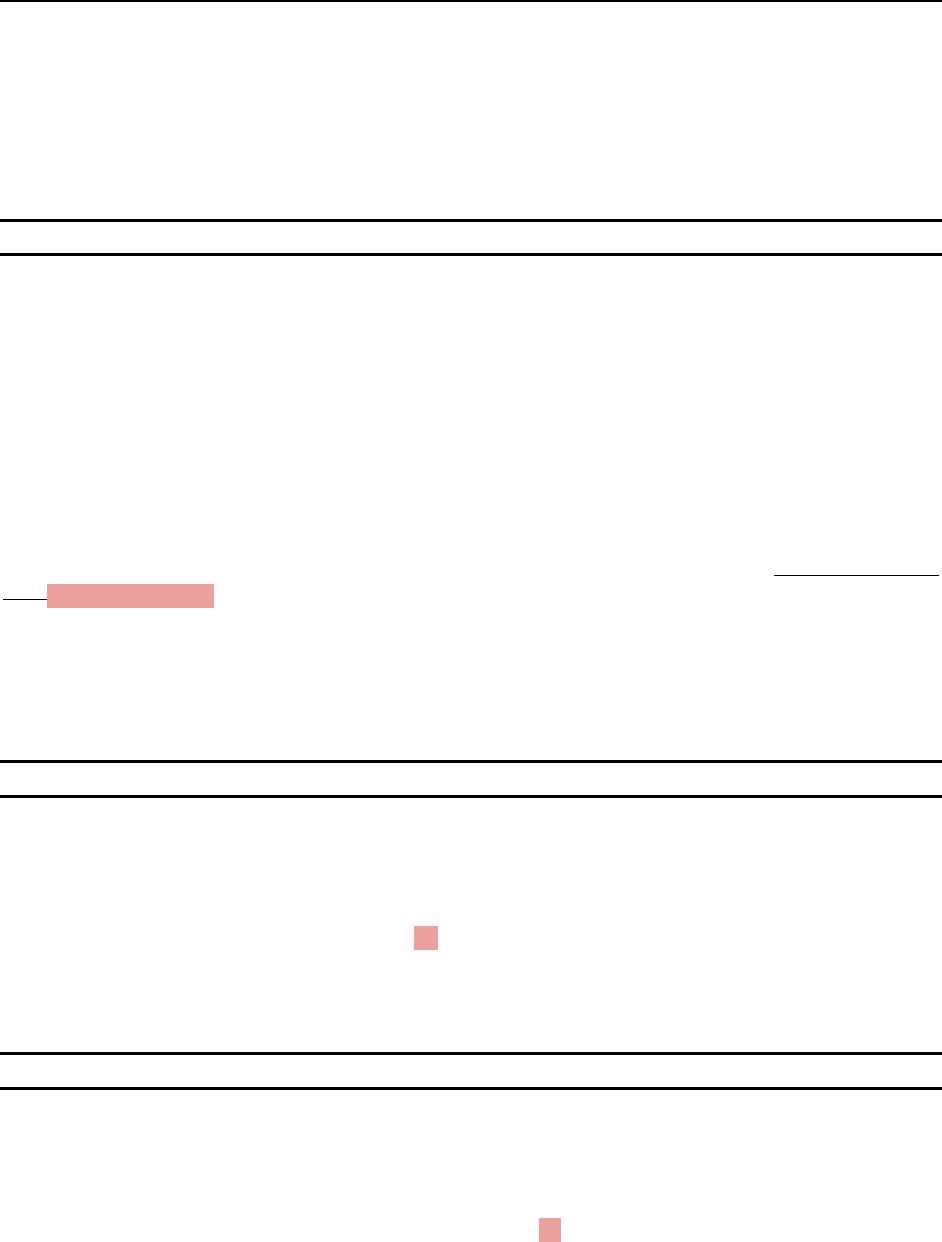
Technical
April 27, 2023 | 109
of the defendant or the Director of the Bureau of Prisons, or on its own motion, the court may reduce
the term of imprisonment, after considering the factors set forth in section 3553(a) to the extent that
they are applicable, if such a reduction is consistent with applicable policy statements issued by the
Sentencing Commission.”
* * *
§1B1.11. Use of Guidelines Manual in Effect on Date of Sentencing (Policy Statement)
* * *
Commentary
* * *
Background: Subsections (a) and (b)(1) provide that the court should apply the Guidelines Manual
in effect on the date the defendant is sentenced unless the court determines that doing so would violate
the ex post facto clause in Article I, § 9 of the United States Constitution. Under 18 U.S.C. § 3553, the
court is to apply the guidelines and policy statements in effect at the time of sentencing. However, the
Supreme Court has held that the ex post facto clause applies to sentencing guideline amendments that
subject the defendant to increased punishment. See Peugh v. United States, 133 S. Ct. 2072,
2078569 U.S. 530, 533 (2013) (holding that “there is an ex post facto violation when a defendant is
sentenced under Guidelines promulgated after he committed his criminal acts and the new version
provides a higher applicable Guidelines sentencing range than the version in place at the time of the
offense”).
* * *
§2A4.2. Demanding or Receiving Ransom Money
* * *
Commentary
Statutory Provisions: 18 U.S.C. §§ 876(a), 877, 1202. For additional statutory provision(s),
see Appendix A (Statutory Index).
* * *
§2A6.1. Threatening or Harassing Communications; Hoaxes; False Liens
* * *
Commentary
Statutory Provisions: 18 U.S.C. §§ 32(c), 35(b), 871, 876(c), 877, 878(a), 879, 1038, 1521, 1992(a)(9),
(a)(10), 2291(a)(8), 2291(e), 2292, 2332b(a)(2); 47 U.S.C. § 223(a)(1)(C)–(E); 49 U.S.C. § 46507. For
additional statutory provision(s), see Appendix A (Statutory Index).

Technical
110 | April 27, 2023
* * *
§2B3.2. Extortion by Force or Threat of Injury or Serious Damage
* * *
Commentary
Statutory Provisions: 18 U.S.C. §§ 875(b), (d), 876(b), (d), 877, 1030(a)(7), 1951. For additional
statutory provision(s), see Appendix A (Statutory Index).
* * *
§2D1.1. Unlawful Manufacturing, Importing, Exporting, or Trafficking (Including
Possession with Intent to Commit These Offenses); Attempt or Conspiracy
* * *
Commentary
* * *
Application Notes:
* * *
8. Use of Drug Conversion Tables.—
(A) Controlled Substances Not Referenced in Drug Quantity Table.—The Commission
has used the sentences provided in, and equivalences derived from, the statute (21 U.S.C.
§ 841(b)(1)), asas the primary basis for the guideline sentences. The statute, however,
provides direction only for the more common controlled substances, i.e., heroin, cocaine,
PCP, methamphetamine, fentanyl, LSDLSD, and marihuana. In the case of a controlled
substance that is not specifically referenced in the Drug Quantity Table, determine the base
offense level as follows:
(i) Use the Drug Conversion Tables to find the converted drug weight of the controlled
substance involved in the offense.
(ii) Find the corresponding converted drug weight in the Drug Quantity Table.
(iii) Use the offense level that corresponds to the converted drug weight determined above
as the base offense level for the controlled substance involved in the offense.
(See also Application Note 6.) For example, in the Drug Conversion Tables set forth in this
Note, 1 gram of a substance containing oxymorphone, a Schedule I opiate, converts to
5 kilograms of converted drug weight. In a case involving 100 grams of oxymorphone, the
converted drug weight would be 500 kilograms, which corresponds to a base offense level
of 26 in the Drug Quantity Table.
* * *

Technical
April 27, 2023 | 111
(D) Drug Conversion Tables.—
SCHEDULE I OR II OPIATES* CONVERTED DRUG WEIGHT
1 gm of Heroin = 1 kg
1 gm of Dextromoramide = 670 gm
1 gm of Dipipanone = 250 gm
1 gm of 1-Methyl-4-phenyl-4-propionoxypiperidine/MPPP = 700 gm
1 gm of 1-(2-Phenylethyl)-4-phenyl-4-acetyloxypiperidine/PEPAP = 700 gm
1 gm of Alphaprodine = 100 gm
1 gm of Fentanyl (N-phenyl-N-[1-(2-phenylethyl)-4-piperidinyl] Propanamide) = 2.5 kg
1 gm of a Fentanyl Analogue = 10 kg
1 gm of Hydromorphone/Dihydromorphinone = 2.5 kg
1 gm of Levorphanol = 2.5 kg
1 gm of Meperidine/Pethidine = 50 gm
1 gm of Methadone = 500 gm
1 gm of 6-Monoacetylmorphine = 1 kg
1 gm of Morphine = 500 gm
1 gm of Oxycodone (actual) = 6700 gm
1 gm of Oxymorphone = 5 kg
1 gm of Racemorphan = 800 gm
1 gm of Codeine = 80 gm
1 gm of Dextropropoxyphene/Propoxyphene-Bulk = 50 gm
1 gm of Ethylmorphine = 165 gm
1 gm of Hydrocodone (actual) = 6700 gm
1 gm of Mixed Alkaloids of Opium/Papaveretum = 250 gm
1 gm of Opium = 50 gm
1 gm of Levo-alpha-acetylmethadol (LAAM) = 3 kg
1 gm of 1-(2-Phenylethyl)-4-phenyl-4-acetyloxypiperidine (PEPAP) = 700 gm
1 gm of 1-Methyl-4-phenyl-4-propionoxypiperidine (MPPP) = 700 gm
1 gm of 6-Monoacetylmorphine = 1 kg
1 gm of Alphaprodine = 100 gm
1 gm of Codeine = 80 gm
1 gm of Dextromoramide = 670 gm
1 gm of Dextropropoxyphene/Propoxyphene-Bulk = 50 gm
1 gm of Dipipanone = 250 gm
1 gm of Ethylmorphine = 165 gm
1 gm of Fentanyl (N-phenyl-N-[1-(2-phenylethyl)-4-piperidinyl] Propanamide) = 2.5 kg
1 gm of a Fentanyl Analogue = 10 kg
1 gm of Heroin = 1 kg
1 gm of Hydrocodone (actual) = 6,700 gm
1 gm of Hydromorphone/Dihydromorphinone = 2.5 kg
1 gm of Levo-alpha-acetylmethadol (LAAM) = 3 kg
1 gm of Levorphanol = 2.5 kg
1 gm of Meperidine/Pethidine = 50 gm
1 gm of Methadone = 500 gm
1 gm of Mixed Alkaloids of Opium/Papaveretum = 250 gm
1 gm of Morphine = 500 gm
1 gm of Opium = 50 gm
1 gm of Oxycodone (actual) = 6,700 gm
1 gm of Oxymorphone = 5 kg
1 gm of Racemorphan = 800 gm
*Provided, that the minimum offense level from the Drug Quantity Table for any of these controlled substances
individually, or in combination with another controlled substance, is level 12.
COCAINE AND OTHER SCHEDULE I AND II STIMULANTS
(AND THEIR IMMEDIATE PRECURSORS)* CONVERTED DRUG WEIGHT
1 gm of Cocaine = 200 gm
1 gm of N-Ethylamphetamine = 80 gm
1 gm of Fenethylline = 40 gm
1 gm of Amphetamine = 2 kg
1 gm of Amphetamine (Actual) = 20 kg
1 gm of Methamphetamine = 2 kg

Technical
112 | April 27, 2023
1 gm of Methamphetamine (Actual) = 20 kg
1 gm of “Ice” = 20 kg
1 gm of Khat = .01 gm
1 gm of 4-Methylaminorex (“Euphoria”) = 100 gm
1 gm of Methylphenidate (Ritalin) = 100 gm
1 gm of Phenmetrazine = 80 gm
1 gm Phenylacetone/P
2
P (when possessed for the purpose
of manufacturing methamphetamine) = 416 gm
1 gm Phenylacetone/P
2
P (in any other case) = 75 gm
1 gm Cocaine Base (“Crack”) = 3,571 gm
1 gm of Aminorex = 100 gm
1 gm of N-N-Dimethylamphetamine = 40 gm
1 gm of N-Benzylpiperazine = 100 gm
1 gm of 4-Methylaminorex (“Euphoria”) = 100 gm
1 gm of Aminorex = 100 gm
1 gm of Amphetamine = 2 kg
1 gm of Amphetamine (actual) = 20 kg
1 gm of Cocaine = 200 gm
1 gm of Cocaine Base (“Crack”) = 3,571 gm
1 gm of Fenethylline = 40 gm
1 gm of “Ice” = 20 kg
1 gm of Khat = .01 gm
1 gm of Methamphetamine = 2 kg
1 gm of Methamphetamine (actual) = 20 kg
1 gm of Methylphenidate (Ritalin) = 100 gm
1 gm of N-Benzylpiperazine = 100 gm
1 gm of N-Ethylamphetamine = 80 gm
1 gm of N-N-Dimethylamphetamine = 40 gm
1 gm of Phenmetrazine = 80 gm
1 gm of Phenylacetone (P
2
P) (when possessed for the purpose
of manufacturing methamphetamine) = 416 gm
1 gm of Phenylacetone (P
2
P) (in any other case) = 75 gm
*Provided, that the minimum offense level from the Drug Quantity Table for any of these controlled substances
individually, or in combination with another controlled substance, is level 12.
SYNTHETIC CATHINONES (EXCEPT SCHEDULE III, IV, AND V SUBSTANCES)* CONVERTED DRUG WEIGHT
1 gm of a sSynthetic cCathinone
(except a Schedule III, IV, or V substance) = 380 gm
*Provided, that the minimum offense level from the Drug Quantity Table for any synthetic cathinone (except a
Schedule III, IV, or V substance) individually, or in combination with another controlled substance, is level 12.
LSD, PCP, AND OTHER SCHEDULE I AND II HALLUCINOGENS
(AND THEIR IMMEDIATE PRECURSORS)* CONVERTED DRUG WEIGHT
1 gm of Bufotenine = 70 gm
1 gm of D-Lysergic Acid Diethylamide/Lysergide/LSD = 100 kg
1 gm of Diethyltryptamine/DET = 80 gm
1 gm of Dimethyltryptamine/DM = 100 gm
1 gm of Mescaline = 10 gm
1 gm of Mushrooms containing Psilocin and/or
Psilocybin (Dry) = 1 gm
1 gm of Mushrooms containing Psilocin and/or
Psilocybin (Wet) = 0.1 gm
1 gm of Peyote (Dry) = 0.5 gm
1 gm of Peyote (Wet) = 0.05 gm
1 gm of Phencyclidine/PCP = 1 kg
1 gm of Phencyclidine (actual) /PCP (actual) = 10 kg
1 gm of Psilocin = 500 gm
1 gm of Psilocybin = 500 gm
1 gm of Pyrrolidine Analog of Phencyclidine/PHP = 1 kg
1 gm of Thiophene Analog of Phencyclidine/TCP = 1 kg

Technical
April 27, 2023 | 113
1 gm of 4-Bromo-2,5-Dimethoxyamphetamine/DOB = 2.5 kg
1 gm of 2,5-Dimethoxy-4-methylamphetamine/DOM = 1.67 kg
1 gm of 3,4-Methylenedioxyamphetamine/MDA = 500 gm
1 gm of 3,4-Methylenedioxymethamphetamine/MDMA = 500 gm
1 gm of 3,4-Methylenedioxy-N-ethylamphetamine/MDEA = 500 gm
1 gm of Paramethoxymethamphetamine/PMA = 500 gm
1 gm of 1-Piperidinocyclohexanecarbonitrile/PCC = 680 gm
1 gm of N-ethyl-1-phenylcyclohexylamine (PCE) = 1 kg
1 gm of 1-Piperidinocyclohexanecarbonitrile (PCC) = 680 gm
1 gm of 2,5-Dimethoxy-4-methylamphetamine (DOM) = 1.67 kg
1 gm of 3,4-Methylenedioxyamphetamine (MDA) = 500 gm
1 gm of 3,4-Methylenedioxymethamphetamine (MDMA) = 500 gm
1 gm of 3,4-Methylenedioxy-N-ethylamphetamine (MDEA) = 500 gm
1 gm of 4-Bromo-2,5-Dimethoxyamphetamine (DOB) = 2.5 kg
1 gm of Bufotenine = 70 gm
1 gm of D-Lysergic Acid Diethylamide/Lysergide (LSD) = 100 kg
1 gm of Diethyltryptamine (DET) = 80 gm
1 gm of Dimethyltryptamine (DM) = 100 gm
1 gm of Mescaline = 10 gm
1 gm of Mushrooms containing Psilocin and/or
Psilocybin (dry) = 1 gm
1 gm of Mushrooms containing Psilocin and/or
Psilocybin (wet) = 0.1 gm
1 gm of N-ethyl-1-phenylcyclohexylamine (PCE) = 1 kg
1 gm of Paramethoxymethamphetamine (PMA) = 500 gm
1 gm of Peyote (dry) = 0.5 gm
1 gm of Peyote (wet) = 0.05 gm
1 gm of Phencyclidine (PCP) = 1 kg
1 gm of Phencyclidine (PCP) (actual) = 10 kg
1 gm of Psilocin = 500 gm
1 gm of Psilocybin = 500 gm
1 gm of Pyrrolidine Analog of Phencyclidine (PHP) = 1 kg
1 gm of Thiophene Analog of Phencyclidine (TCP) = 1 kg
*Provided, that the minimum offense level from the Drug Quantity Table for any of these controlled substances
individually, or in combination with another controlled substance, is level 12.
SCHEDULE I MARIHUANA CONVERTED DRUG WEIGHT
1 gm of Marihuana/Cannabis, granulated, powdered, etc. = 1 gm
1 gm of Hashish Oil = 50 gm
1 gm of Cannabis Resin or Hashish = 5 gm
1 gm of Hashish Oil = 50 gm
1 gm of Marihuana/Cannabis (granulated, powdered, etc.) = 1 gm
1 gm of Tetrahydrocannabinol, Organic (organic) = 167 gm
1 gm of Tetrahydrocannabinol, Synthetic (synthetic) = 167 gm
SYNTHETIC CANNABINOIDS (EXCEPT SCHEDULE III, IV, AND V SUBSTANCES)* CONVERTED DRUG
WEIGHT
1 gm of a sSynthetic cCannabinoid
(except a Schedule III, IV, or V substance) = 167 gm
*Provided, that the minimum offense level from the Drug Quantity Table for any synthetic cannabinoid (except a
Schedule III, IV, or V substance) individually, or in combination with another controlled substance, is level 12.
“Synthetic cCannabinoid,” for purposes of this guideline, means any synthetic substance (other than synthetic
tetrahydrocannabinol) that binds to and activates type 1 cannabinoid receptors (CB
1
receptors).
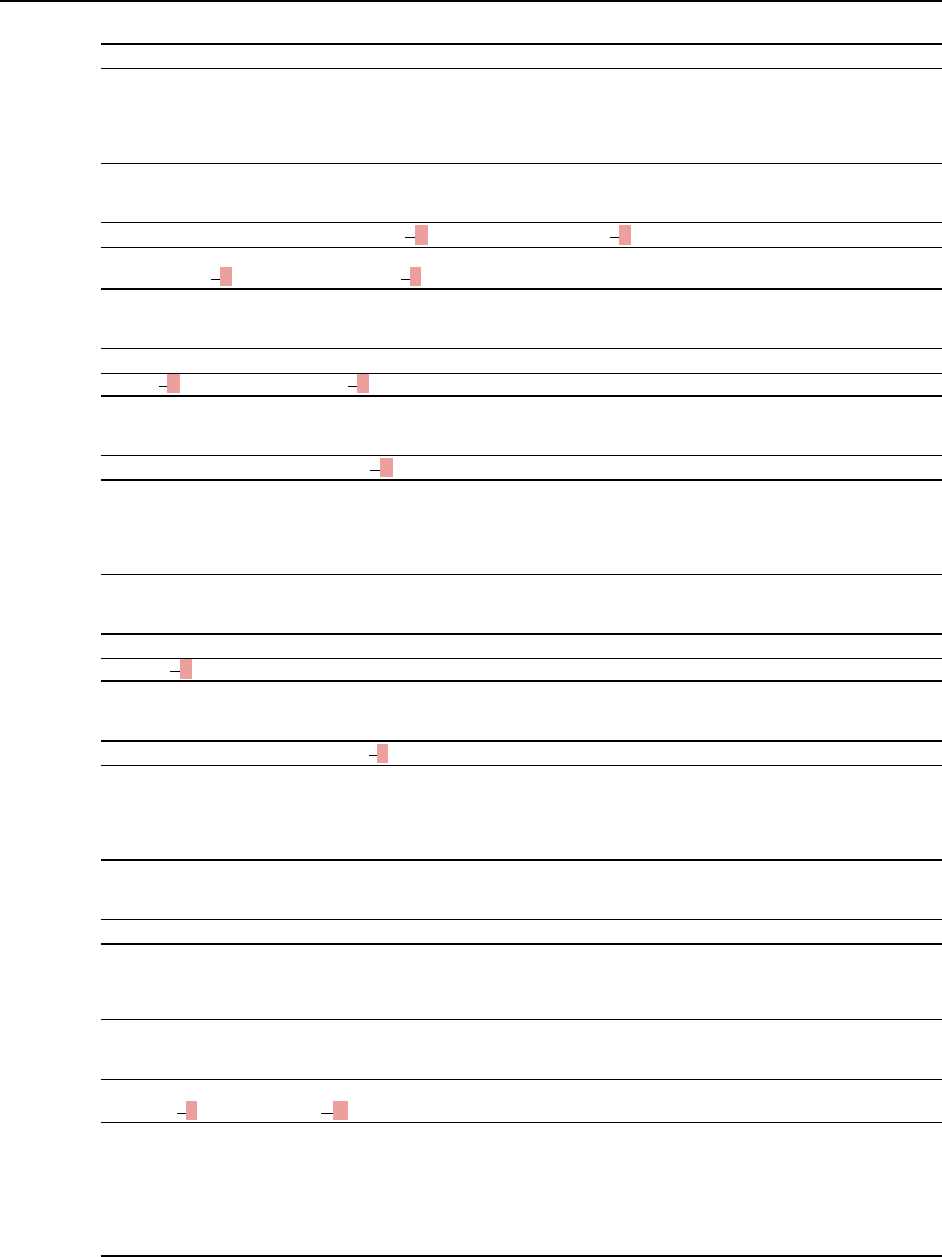
Technical
114 | April 27, 2023
FLUNITRAZEPAM ** CONVERTED DRUG WEIGHT
1 unit of Flunitrazepam = 16 gm
**Provided, that the minimum offense level from the Drug Quantity Table for flunitrazepam individually, or in
combination with any Schedule I or II depressants, Schedule III substances, Schedule IV substances, and
Schedule V substances is level 8.
SCHEDULE I OR II DEPRESSANTS (EXCEPT GGAMMA-HYDROXYBUTYRIC AACID) CONVERTED DRUG WEIGHT
1 unit of a Schedule I or II Depressant
(except gGamma-hydroxybutyric aAcid) = 1 gm
GAMMA-HYDROXYBUTYRIC ACID CONVERTED DRUG WEIGHT
1 ml of gGamma-hydroxybutyric aAcid = 8.8 gm
SCHEDULE III SUBSTANCES (EXCEPT KKETAMINE)*** CONVERTED DRUG WEIGHT
1 unit of a Schedule III Substance = 1 gm
***Provided, that the combined converted weight of all Schedule III substances (except ketamine), Schedule IV
substances (except flunitrazepam), and Schedule V substances shall not exceed 79.99 kilograms of converted drug
weight.
KETAMINE CONVERTED DRUG WEIGHT
1 unit of kKetamine = 1 gm
SCHEDULE IV SUBSTANCES (EXCEPT FFLUNITRAZEPAM)**** CONVERTED DRUG WEIGHT
1 unit of a Schedule IV Substance
(except Flunitrazepam) = 0.0625 gm
****Provided, that the combined converted weight of all Schedule IV (except flunitrazepam) and V substances
shall not exceed 9.99 kilograms of converted drug weight.
SCHEDULE V SUBSTANCES***** CONVERTED DRUG WEIGHT
1 unit of a Schedule V Substance = 0.00625 gm
*****Provided, that the combined converted weight of Schedule V substances shall not exceed 2.49 kilograms of
converted drug weight.
LIST I CHEMICALS (RELATING TO THE MANUFACTURE
OF AAMPHETAMINE OR MMETHAMPHETAMINE)****** CONVERTED DRUG WEIGHT
1 gm of Ephedrine = 10 kg
1 gm of Phenylpropanolamine = 10 kg
1 gm of Pseudoephedrine = 10 kg
******Provided, that in a case involving ephedrine, pseudoephedrine, or phenylpropanolamine tablets, use the
weight of the ephedrine, pseudoephedrine, or phenylpropanolamine contained in the tablets, not the weight of the
entire tablets, in calculating the base offense level.
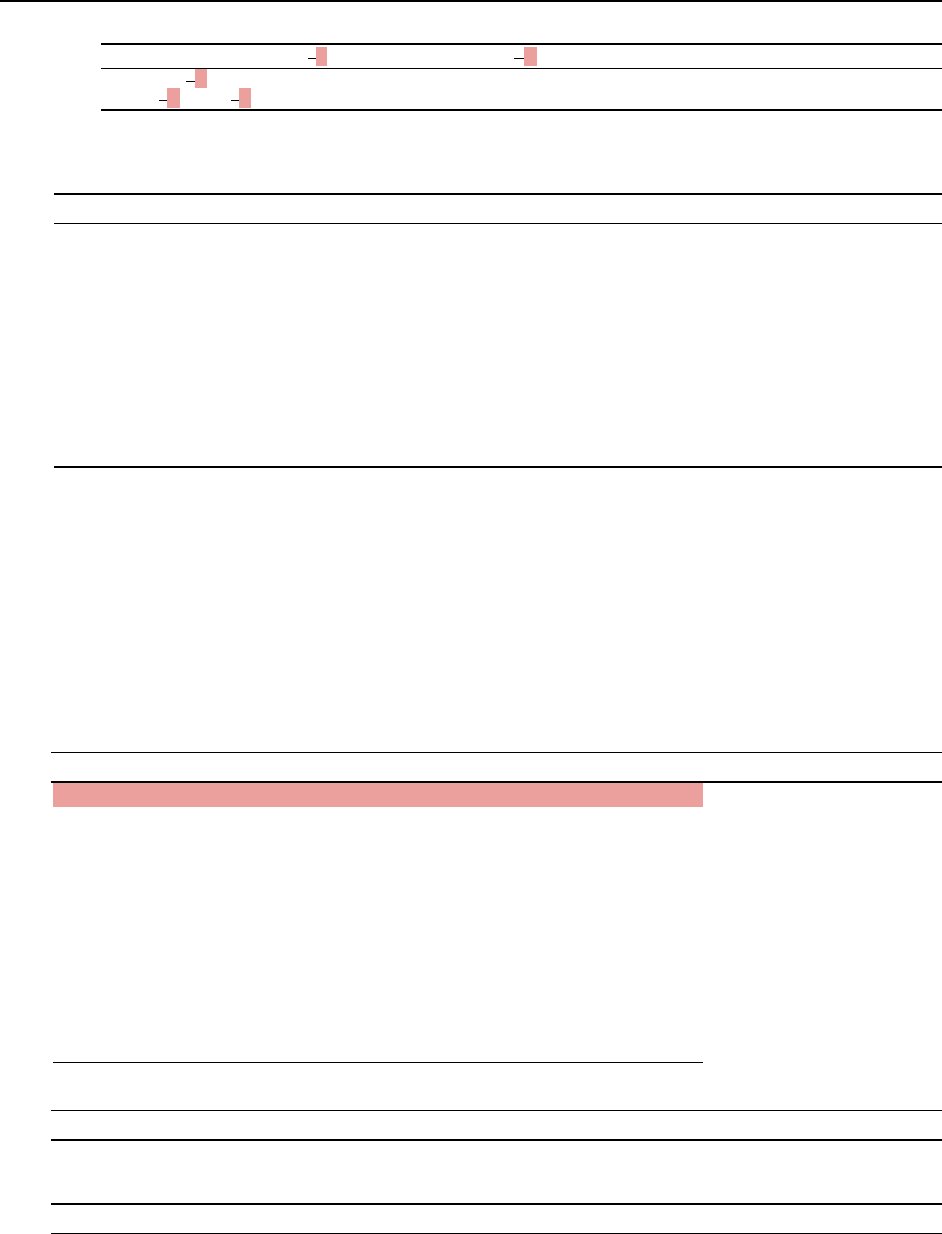
Technical
April 27, 2023 | 115
DATE RAPE DRUGS (EXCEPT FFLUNITRAZEPAM, GHB, OR KKETAMINE) CONVERTED DRUG WEIGHT
1 ml of 1,4-bButanediol = 8.8 gm
1 ml of gGamma bButyrolactone = 8.8 gm
To facilitate conversions to converted drug weight, the following table is provided:
MEASUREMENT CONVERSION TABLE
1 oz = 28.35 gm
1 lb = 453.6 gm
1 lb = 0.4536 kg
1 gal = 3.785 liters
1 qt = 0.946 liters
1 gm = 1 ml (liquid)
1 liter = 1,000 ml
1 kg = 1,000 gm
1 gm = 1,000 mg
1 grain = 64.8 mg.
9. Determining Quantity Based on Doses, Pills, or Capsules.—If the number of doses, pills,
or capsules but not the weight of the controlled substance is known, multiply the number of doses,
pills, or capsules by the typical weight per dose in the table below to estimate the total weight of
the controlled substance (e.g., 100 doses of Mescaline at 500 milligrams per dose = 50 grams of
mescaline). The Typical Weight Per Unit Table, prepared from information provided by the Drug
Enforcement Administration, displays the typical weight per dose, pill, or capsule for certain
controlled substances. Do not use this table if any more reliable estimate of the total weight is
available from case-specific information.
TYPICAL WEIGHT PER UNIT (DOSE, PILL, OR CAPSULE) TABLE
HALLUCINOGENS
2,5-Dimethoxy-4-methylamphetamine (STP, DOM)* 3 mg
MDA 250 mg
MDMA 250 mg
Mescaline 500 mg
PCP* 5 mg
Peyote (dry) 12 gm
Peyote (wet) 120 gm
Psilocin* 10 mg
Psilocybe mushrooms (dry) 5 gm
Psilocybe mushrooms (wet) 50 gm
Psilocybin* 10 mg
2,5-Dimethoxy-4-methylamphetamine (STP, DOM)* 3 mg
MARIHUANA
1 marihuana cigarette 0.5 gm
STIMULANTS
Amphetamine* 10 mg
Methamphetamine* 5 mg
Phenmetrazine (Preludin)* 75 mg

Technical
116 | April 27, 2023
*For controlled substances marked with an asterisk, the weight per unit shown is the weight of
the actual controlled substance, and not generally the weight of the mixture or substance
containing the controlled substance. Therefore, use of this table provides a very conservative
estimate of the total weight.
* * *
21. Applicability of Subsection (b)(18).—The applicability of subsection (b)(18) shall be
determined without regard to whether the defendant was convicted of an offense that subjects
the defendant to a mandatory minimum term of imprisonment. Section §5C1.2(b)5C1.2(b), which
provides a minimum offense level of level 17, is not pertinent to the determination of whether
subsection (b)(18) applies.
* * *
Background: Offenses under 21 U.S.C. §§ 841 and 960 receive identical punishment based upon the
quantity of the controlled substance involved, the defendant’s criminal history, and whether death or
serious bodily injury resulted from the offense.
* * *
Subsection (b)(14)(A) implements the instruction to the Commission in section 303 of Public
Law 103104–237.
* * *
The Drug Conversion Tables set forth in Application Note 8 were previously called the Drug
Equivalency Tables. In the original 1987 Guidelines Manual, the Drug Equivalency Tables provided
four conversion factors (or “equivalents”) for determining the base offense level in cases involving
either a controlled substance not referenced in the Drug Quantity Table or multiple controlled
substances: heroin, cocaine, PCP, and marihuana. In 1991, the Commission amended the Drug
Equivalency Tables to provide for one substance, marihuana, as the single conversion factor in §2D1.1.
See USSG App. C, Amendment 396 (effective November 1, 1991). In 2018, the Commission amended
§2D1.1 to replace marihuana as the conversion factor with the new term “converted drug weight” and
to change the title of the Drug Equivalency Tables to the “Drug Conversion Tables.” See USSG App. C,
Amendment 808 (effective November 1, 2018).
* * *
§2D2.3. Operating or Directing the Operation of a Common Carrier Under the
Influence of Alcohol or Drugs
* * *
Commentary
* * *
Background: This section implements the direction to the Commission in Sectionsection 6482 of the
Anti-Drug Abuse Act of 1988. Offenses covered by this guideline may vary widely with regard to harm
and risk of harm. The offense levels assume that the offense involved the operation of a common carrier

Technical
April 27, 2023 | 117
carrying a number of passengers, e.g., a bus. If no or only a few passengers were placed at risk, a
downward departure may be warranted. If the offense resulted in the death or serious bodily injury of
a large number of persons, such that the resulting offense level under subsection (b) would not
adequately reflect the seriousness of the offense, an upward departure may be warranted.
* * *
§2G2.1. Sexually Exploiting a Minor by Production of Sexually Explicit Visual or
Printed Material; Custodian Permitting Minor to Engage in Sexually Explicit
Conduct; Advertisement for Minors to Engage in Production
* * *
(b) Specific Offense Characteristics
* * *
(6) If, for the purpose of producing sexually explicit material or for the
purpose of transmitting such material live, the offense involved
(A) the knowing misrepresentation of a participant’s identity to
persuade, induce, entice, coerce, or facilitate the travel of, a minor to
engage in sexually explicit conduct; or (B) the use of a computer or an
interactive computer service to (i) persuade, induce, entice, coerce, or
facilitate the travel of, a minor to engage in sexually explicit conduct,
or to otherwise solicit participation by a minor in such conduct; or
(ii) solicit participation with a minor in sexually explicit conduct,
increase by 2 levels.
* * *
§2H3.1. Interception of Communications; Eavesdropping; Disclosure of Certain
Private or Protected Information
* * *
Commentary
* * *
Application Notes:
* * *
5. Upward Departure.—There may be cases in which the offense level determined under this
guideline substantially understates the seriousness of the offense. In such a case, an upward
departure may be warranted. The following are examples of cases in which an upward departure
may be warranted:
* * *
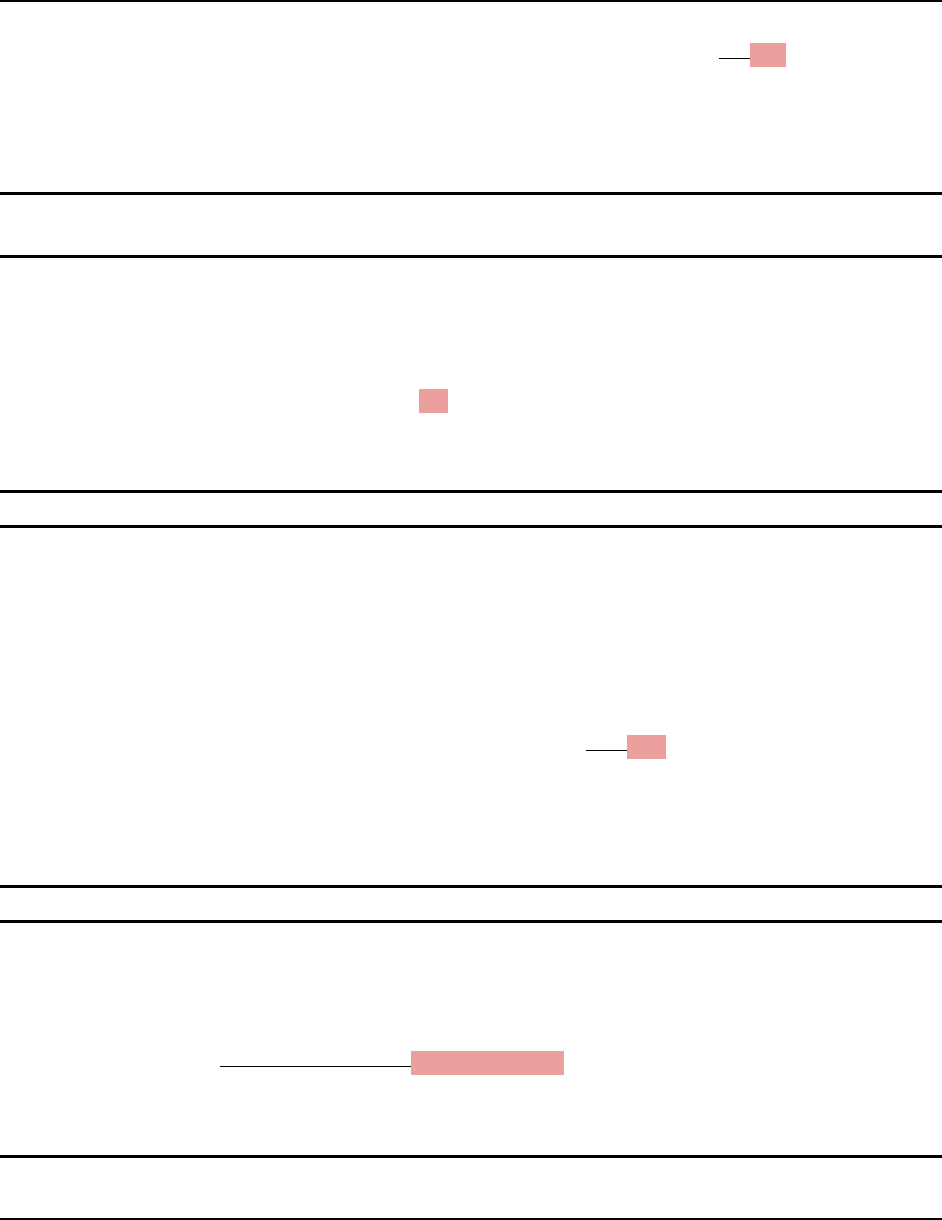
Technical
118 | April 27, 2023
(B) The offense caused or risked substantial non-monetary harm (e.g.e.g., physical harm,
psychological harm, or severe emotional trauma, or resulted in a substantial invasion of
privacy interest) to individuals whose private or protected information was obtained.
* * *
§2K2.4. Use of Firearm, Armor-Piercing Ammunition, or Explosive During or in Relation
to Certain Crimes
* * *
Commentary
Statutory Provisions: 18 U.S.C. §§ 844(h), (o), 924(c), 929(a).
* * *
§2M1.1. Treason
* * *
Commentary
* * *
Background: Treason is a rarely prosecuted offense that could encompass a relatively broad range of
conduct, including many of the more specific offenses in this Partpart. The guideline contemplates
imposition of the maximum penalty in the most serious cases, with reference made to the most
analogous offense guideline in lesser cases.
* * *
§2M4.1. Failure to Register and Evasion of Military Service
* * *
Commentary
Statutory Provision: 50 U.S.C. App. § 46250 U.S.C. § 3811.
* * *
§2M5.1. Evasion of Export Controls; Financial Transactions with Countries Supporting
International Terrorism
* * *

Technical
April 27, 2023 | 119
Commentary
Statutory Provisions: 18 U.S.C. § 2332d; 22 U.S.C. § 8512; 50 U.S.C. § 1705; 50 U.S.C. App. §§ 2401–
242050 U.S.C. §§ 4601–4623. For additional statutory provision(s), see Appendix A (Statutory Index).
Application Notes:
* * *
3. In addition to the provisions for imprisonment, 50 U.S.C. App. § 241050 U.S.C. § 4610 contains
provisions for criminal fines and forfeiture as well as civil penalties. The maximum fine for
individual defendants is $250,000. In the case of corporations, the maximum fine is five times
the value of the exports involved or $1 million, whichever is greater. When national security
controls are violated, in addition to any other sanction, the defendant is subject to forfeiture of
any interest in, security of, or claim against: any goods or tangible items that were the subject of
the violation; property used to export or attempt to export that was the subject of the violation;
and any proceeds obtained directly or indirectly as a result of the violation.
4. For purposes of subsection (a)(1)(B), “a country supporting international terrorism” means
a country designated under section 6(j) of the Export Administration Act (50 U.S.C. App. 2405
50 U.S.C. § 4605).
* * *
§2M5.3. Providing Material Support or Resources to Designated Foreign Terrorist
Organizations or Specially Designated Global Terrorists, or For a Terrorist
Purpose
* * *
Commentary
* * *
Application Notes:
1. Definitions.—For purposes of this guideline:
* * *
“Specially designated global terrorist” has the meaning given that term in 31 C.F.R.
§ 594.513594.310.
* * *
§2M6.1. Unlawful Activity Involving Nuclear Material, Weapons, or Facilities,
Biological Agents, Toxins, or Delivery Systems, Chemical Weapons, or Other
Weapons of Mass Destruction; Attempt or Conspiracy
(a) Base Offense Level (Apply the Greatest):

Technical
120 | April 27, 2023
(1) 42, if the offense was committed with intent (A) to injure the United
States; or (B) to aid a foreign nation or a foreign terrorist organization;
(2) 28, if subsections (a)(1), (a)(3), and (a)(4) do not apply;
(3) 22, if the defendant is convicted under 18 U.S.C. § 175b; or
(4) 20, if (A) the defendant is convicted under 18 U.S.C. § 175(b); or
(B) the offense (i) involved a threat to use a nuclear weapon, nuclear
material, or nuclear byproduct material, a chemical weapon, a
biological agent, toxin, or delivery system, or a weapon of mass
destruction; but (ii) did not involve any conduct evidencing an intent
or ability to carry out the threat.
(b) Specific Offense Characteristics
(1) If (A) subsection (a)(2) or (a)(4)(A) applies; and (B) the offense involved
a threat to use, or otherwise involved (i) a select biological agent; (ii) a
listed precursor or a listed toxic chemical; (iii) nuclear material or
nuclear byproduct material; or (iv) a weapon of mass destruction that
contains any agent, precursor, toxic chemical, or material referred to
in subdivision (i), (ii), or (iii), increase by 2 levels.
(2) If (A) subsection (a)(2), (a)(3), or (a)(4)(A) applies; and (B)(i) any victim
died or sustained permanent or life-threatening bodily injury,
increase by 4 levels; (ii) any victim sustained serious bodily injury,
increase by 2 levels; or (iii) the degree of injury is between that
specified in subdivisions (i) and (ii), increase by 3 levels.
(3) If (A) subsection (a)(2), (a)(3), or (a)(4) applies; and (B) the offense
resulted in (i) substantial disruption of public, governmental, or
business functions or services; or (ii) a substantial expenditure of
funds to clean up, decontaminate, or otherwise respond to the offense,
increase by 4 levels.
(c) Cross References
(1) If the offense resulted in death, apply §2A1.1 (First Degree Murder) if
the death was caused intentionally or knowingly, or §2A1.2 (Second
Degree Murder) otherwise, if the resulting offense level is greater
than that determined above.
(2) If the offense was tantamount to attempted murder, apply §2A2.1
(Assault with Intent to Commit Murder; Attempted Murder), if the
resulting offense level is greater than that determined above.

Technical
April 27, 2023 | 121
(d) Special Instruction
(1) If the defendant is convicted of a single count involving (A) conduct
that resulted in the death or permanent, life-threatening, or serious
bodily injury of more than one victim, or (B) conduct tantamount to
the attempted murder of more than one victim, Chapter Three, Part D
(Multiple Counts) shall be applied as if such conduct in respect to each
victim had been contained in a separate count of conviction.
Commentary
Statutory Provisions: 18 U.S.C. §§ 175, 175b, 175c, 229, 831, 832, 842(p)(2) (only with respect to
weapons of mass destruction as defined in 18 U.S.C. § 2332a(c)(2)(B), (C), and (D)), 1992(a)(2), (a)(3),
(a)(4), (b)(2), 2283, 2291, 2332h; 42 U.S.C. §§ 2077(b), 2122, 2131. For additional statutory provision(s),
see Appendix A (Statutory Index).
Application Notes:
1. Definitions.—For purposes of this guideline:
“Biological agent” has the meaning given that term in 18 U.S.C. § 178(1).
“Chemical weapon” has the meaning given that term in 18 U.S.C. § 229F(1).
“Foreign terrorist organization” (A) means an organization that engages in terrorist activity
that threatens the security of a national of the United States or the national security of the
United States; and (B) includes an organization designated by the Secretary of State as a foreign
terrorist organization pursuant to section 219 of the Immigration and Nationality Act (8 U.S.C.
§ 1189). “National of the United States” has the meaning given that term in section 101(a)(22) of
the Immigration and Nationality Act (8 U.S.C. § 1101(a)(22)).
“Listed precursor or a listed toxic chemical” means a precursor or a toxic chemical,
respectively, listed in Schedule I of the Annex on Chemicals to the Chemical Weapons
Convention. See 18 U.S.C. § 229F(6)(B), (8)(B). “Precursor” has the meaning given that term in
18 U.S.C. § 229F(6)(A). “Toxic chemical” has the meaning given that term in 18 U.S.C.
§ 229F(8)(A).
“Nuclear byproduct material” has the meaning given that term in 18 U.S.C. § 831(g)(2).
“Nuclear material” has the meaning given that term in 18 U.S.C. § 831(g)(1).
“Restricted person” has the meaning given that term in 18 U.S.C. § 175b(d)(2).
“Select biological agent” means a biological agent or toxin identified (A) by the Secretary of
Health and Human Services on the select agent list established and maintained pursuant to
section 351A of the Public Health Service Act (42 U.S.C. § 262a); or (B) by the Secretary of
Agriculture on the list established and maintained pursuant to section 212 of the Agricultural
Bioterrorism Protection Act of 2002 (7 U.S.C. § 8401).
“Toxin” has the meaning given that term in 18 U.S.C. § 178(2).
“Vector” has the meaning given that term in 18 U.S.C. § 178(4).

Technical
122 | April 27, 2023
“Weapon of mass destruction” has the meaning given that term in 18 U.S.C. § 2332a(c)(2)(B),
(C), and (D).
2. Threat Cases.—Subsection (a)(4)(B) applies in cases that involved a threat to use a weapon,
agent, or material covered by this guideline but that did not involve any conduct evidencing an
intent or ability to carry out the threat. For example, subsection (a)(4)(B) would apply in a case
in which the defendant threatened to contaminate an area with anthrax and also dispersed into
the area a substance that appeared to be anthrax but that the defendant knew to be harmless
talcum powder. In such a case, the dispersal of talcum powder does not evidence an intent on the
defendant’s part to carry out the threat. In contrast, subsection (a)(4)(B) would not apply in a
case in which the defendant threatened to contaminate an area with anthrax and also dispersed
into the area a substance that the defendant believed to be anthrax but that in fact was harmless
talcum powder. In such a case, the dispersal of talcum powder was conduct evidencing an intent
to carry out the threat because of the defendant’s belief that the talcum powder was anthrax.
Subsection (a)(4)(B) shall not apply in any case involving both a threat to use any weapon, agent,
or material covered by this guideline and the possession of that weapon, agent, or material. In
such a case, possession of the weapon, agent, or material is conduct evidencing an intent to use
that weapon, agent, or material.
3. Application of Special Instruction.—Subsection (d) applies in any case in which the
defendant is convicted of a single count involving (A) the death or permanent, life-threatening,
or serious bodily injury of more than one victim, or (B) conduct tantamount to the attempted
murder of more than one victim, regardless of whether the offense level is determined under this
guideline or under another guideline in Chapter Two (Offense Conduct) by use of a cross
reference under subsection (c).
* * *
§2T1.1. Tax Evasion; Willful Failure to File Return, Supply Information, or Pay Tax;
Fraudulent or False Returns, Statements, or Other Documents
* * *
Commentary
* * *
Application Notes:
* * *
6. Other Definitions.—For purposes of this section:
* * *
“Gross income” has the same meaning as it has in 26 U.S.C. § 61 and 26 C.F.R. § 1.611.61-1.
* * *
7. Aggregation of Individual and Corporate Tax Loss.—If the offense involved both individual
and corporate tax returns, the tax loss is the aggregate tax loss from the individual tax offense
and the corporate tax offense added together. Accordingly, in a case in which a defendant fails to

Technical
April 27, 2023 | 123
report income derived from a corporation on both the defendant’s individual tax return and the
defendant’s corporate tax return, the tax loss is the sum of (A) the unreported or diverted amount
multiplied by (i) 28%; or (ii) the tax rate for the individual tax offense, if sufficient information is
available to make a more accurate assessment of that tax rate; and (B) the unreported or diverted
amount multiplied by (i) 34%; or (ii) the tax rate for the corporate tax offense, if sufficient
information is available to make a more accurate assessment of that tax rate. For example, the
defendant, the sole owner of a Subchaptersubchapter C corporation, fraudulently understates
the corporation’s income in the amount of $100,000 on the corporation’s tax return, diverts the
funds to the defendant’s own use, and does not report these funds on the defendant’s individual
tax return. For purposes of this example, assume the use of 34% with respect to the corporate
tax loss and the use of 28% with respect to the individual tax loss. The tax loss attributable to
the defendant’s corporate tax return is $34,000 ($100,000 multiplied by 34%). The tax loss
attributable to the defendant’s individual tax return is $28,000 ($100,000 multiplied by 28%).
The tax loss for the offenses are added together to equal $62,000 ($34,000 + $28,000).
* * *
Background: This guideline relies most heavily on the amount of loss that was the object of the
offense. Tax offenses, in and of themselves, are serious offenses; however, a greater tax loss is obviously
more harmful to the treasuryTreasury and more serious than a smaller one with otherwise similar
characteristics. Furthermore, as the potential benefit from the offense increases, the sanction
necessary to deter also increases.
* * *
PART T ― OFFENSES INVOLVING TAXATION
* * *
2. ALCOHOL AND TOBACCO TAXES
Introductory Commentary
This subpart deals with offenses contained in Partsparts I–IV of Subchaptersubchapter J of
Chapterchapter 51 of Subtitlesubtitle E of Titletitle 26, United States Code, chiefly 26 U.S.C. §§ 5601–
5605, 5607, 5608, 5661, 5671, 5691, and 5762, where the essence of the conduct is tax evasion or a
regulatory violation. No effort has been made to provide a section-by-section set of guidelines. Rather,
the conduct is dealt with by dividing offenses into two broad categories: tax evasion offenses and
regulatory offenses.
* * *
3. CUSTOMS TAXES
Introductory Commentary
This Subpartsubpart deals with violations of 18 U.S.C. §§ 496, 541–545, 547, 548, 550, 551, 1915
and 19 U.S.C. §§ 283, 1436, 1464, 1465, 1586(e), 1708(b), and 3907, and is designed to address
violations involving revenue collection or trade regulation. It is intended to deal with some types of
contraband, such as certain uncertified diamonds, but is not intended to deal with the importation of
other types of contraband, such as drugs, or other items such as obscene material, firearms or pelts of

Technical
124 | April 27, 2023
endangered species, the importation of which is prohibited or restricted for non-economic reasons.
Other, more specific criminal statutes apply to most of these offenses. Importation of contraband or
stolen goods not specifically covered by this Subpartsubpart would be a reason for referring to another,
more specific guideline, if applicable, or for departing upward if there is not another more specific
applicable guideline.
* * *
CHAPTER THREE
ADJUSTMENTS
PART A ― VICTIM-RELATED ADJUSTMENTS
Introductory Commentary
The following adjustments are included in this Partpart because they may apply to a wide variety
of offenses.
* * *
§3A1.1. Hate Crime Motivation or Vulnerable Victim
* * *
Commentary
* * *
Background: Subsection (a) reflects the directive to the Commission, contained in
Sectionsection 280003 of the Violent Crime Control and Law Enforcement Act of 1994, to provide an
enhancement of not less than three levels for an offense when the finder of fact at trial determines
beyond a reasonable doubt that the defendant had a hate crime motivation. To avoid unwarranted
sentencing disparity based on the method of conviction, the Commission has broadened the application
of this enhancement to include offenses that, in the case of a plea of guilty or nolo contendere, the court
at sentencing determines are hate crimes. In section 4703(a) of Public Law 111–84, Congress
broadened the scope of that directive to include gender identity; to reflect that congressional action,
the Commission has broadened the scope of this enhancement to include gender identity.
* * *
§3A1.2. Official Victim
(Apply the greatest):
(a) If (1) the victim was (A) a government officer or employee; (B) a former
government officer or employee; or (C) a member of the immediate family

Technical
April 27, 2023 | 125
of a person described in subdivision (A) or (B); and (2) the offense of
conviction was motivated by such status, increase by 3 levels.
(b) If subsection (a)(1) and (2) apply, and the applicable Chapter Two guideline
is from Chapter Two, Part A (Offenses Against the Person), increase by
6 levels.
(c) If, in a manner creating a substantial risk of serious bodily injury, the
defendant or a person for whose conduct the defendant is otherwise
accountable—
(1) knowing or having reasonable cause to believe that a person was a
law enforcement officer, assaulted such officer during the course of
the offense or immediate flight therefrom; or
(2) knowing or having reasonable cause to believe that a person was a
prison official, assaulted such official while the defendant (or a person
for whose conduct the defendant is otherwise accountable) was in the
custody or control of a prison or other correctional facility,
increase by 6 levels.
Commentary
Application Notes:
* * *
3. Application of Subsections (a) and (b).—“Motivated by such status”, for purposes of
subsections (a) and (b), means that the offense of conviction was motivated by the fact that the
victim was a government officer or employee, a former government officer or employee, or a
member of the immediate family thereof. This adjustment would not apply, for example, where
both the defendant and victim were employed by the same government agency and the offense
was motivated by a personal dispute. This adjustment also would not apply in the case of a
robbery of a postal employee because the offense guideline for robbery contains an enhancement
(§2B3.1(b)(1)) that takes such conduct into account.
* * *
PART B ― ROLE IN THE OFFENSE
Introductory Commentary
This Partpart provides adjustments to the offense level based upon the role the defendant played
in committing the offense. The determination of a defendant’s role in the offense is to be made on the
basis of all conduct within the scope of §1B1.3 (Relevant Conduct), i.e., all conduct included under
§1B1.3(a)(1)–(4), and not solely on the basis of elements and acts cited in the count of conviction.
* * *
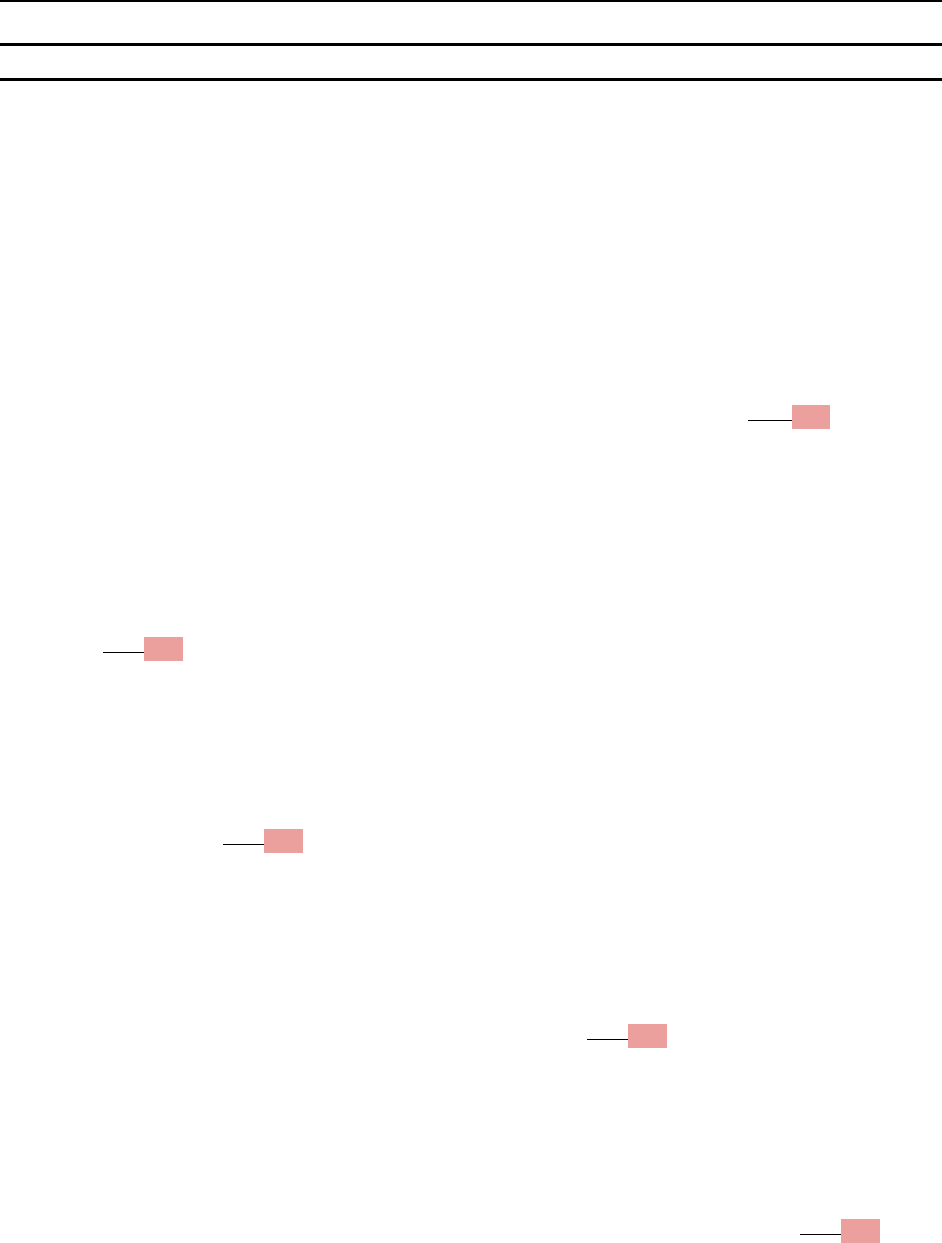
Technical
126 | April 27, 2023
§3C1.1. Obstructing or Impeding the Administration of Justice
* * *
Commentary
Application Notes:
* * *
4. Examples of Covered Conduct.—The following is a non-exhaustive list of examples of the
types of conduct to which this adjustment applies:
* * *
(I) other conduct prohibited by obstruction of justice provisions under Titletitle 18, United
States Code (e.g., 18 U.S.C. §§ 1510, 1511);
* * *
PART D ― MULTIPLE COUNTS
Introductory Commentary
This Partpart provides rules for determining a single offense level that encompasses all the
counts of which the defendant is convicted. These rules apply to multiple counts of conviction
(A) contained in the same indictment or information; or (B) contained in different indictments or
informations for which sentences are to be imposed at the same time or in a consolidated proceeding.
The single, “combined” offense level that results from applying these rules is used, after adjustment
pursuant to the guidelines in subsequent parts, to determine the sentence. These rules have been
designed primarily with the more commonly prosecuted federal offenses in mind.
The rules in this Partpart seek to provide incremental punishment for significant additional
criminal conduct. The most serious offense is used as a starting point. The other counts determine how
much to increase the offense level. The amount of the additional punishment declines as the number
of additional offenses increases.
* * *
In order to limit the significance of the formal charging decision and to prevent multiple
punishment for substantially identical offense conduct, this Partpart provides rules for grouping
offenses together. Convictions on multiple counts do not result in a sentence enhancement unless they
represent additional conduct that is not otherwise accounted for by the guidelines. In essence, counts
that are grouped together are treated as constituting a single offense for purposes of the guidelines.
* * *
Some offenses, e.g., racketeering and conspiracy, may be “composite” in that they involve a
pattern of conduct or scheme involving multiple underlying offenses. The rules in this Partpart are to
be used to determine the offense level for such composite offenses from the offense level for the
underlying offenses.
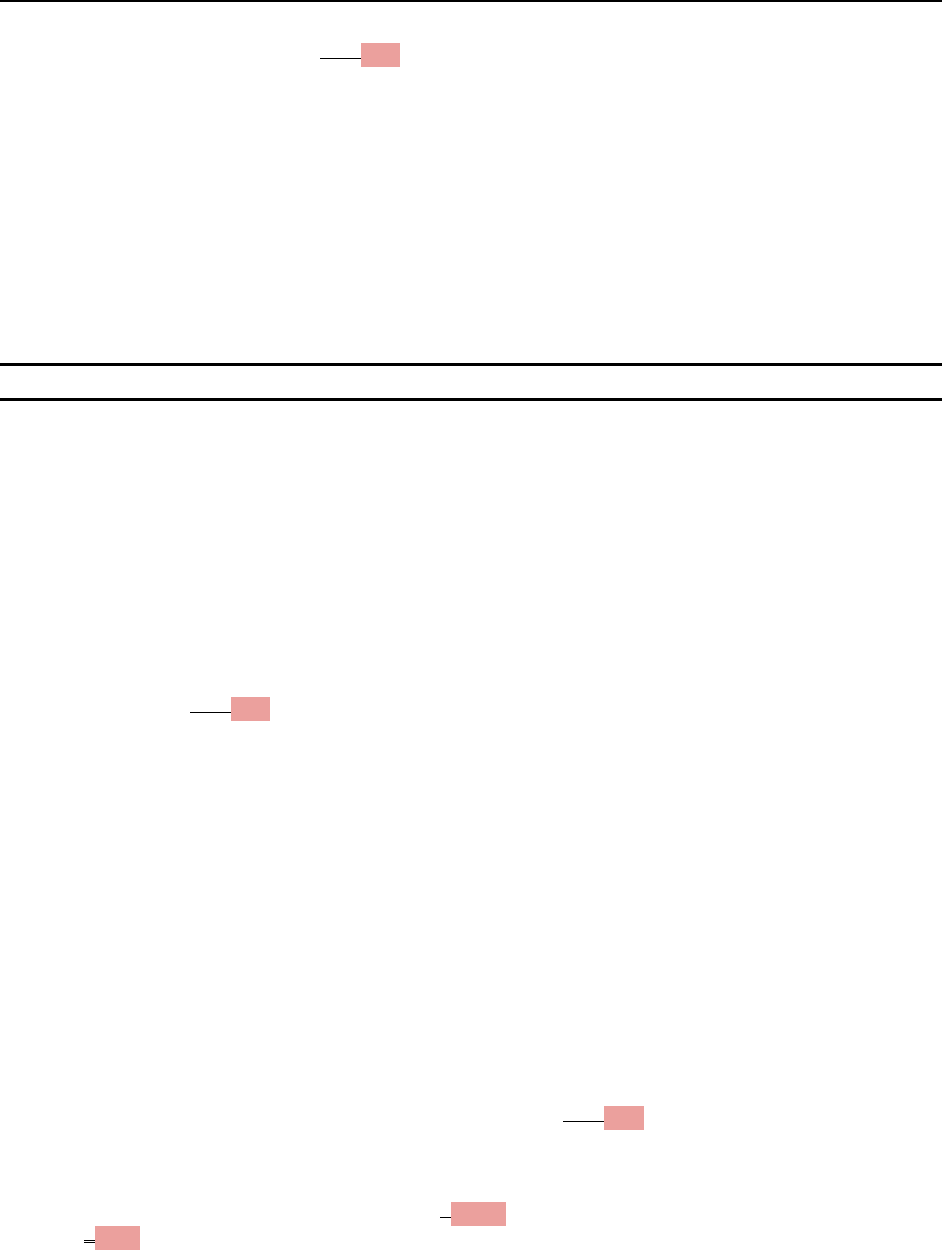
Technical
April 27, 2023 | 127
Essentially, the rules in this Partpart can be summarized as follows: (1) If the offense guidelines
in Chapter Two base the offense level primarily on the amount of money or quantity of substance
involved (e.g., theft, fraud, drug trafficking, firearms dealing), or otherwise contain provisions dealing
with repetitive or ongoing misconduct (e.g., many environmental offenses), add the numerical
quantities and apply the pertinent offense guideline, including any specific offense characteristics for
the conduct taken as a whole. (2) When offenses are closely interrelated, group them together for
purposes of the multiple-count rules, and use only the offense level for the most serious offense in that
group. (3) As to other offenses (e.g., independent instances of assault or robbery), start with the offense
level for the most serious count and use the number and severity of additional counts to determine the
amount by which to increase that offense level.
* * *
§3D1.1. Procedure for Determining Offense Level on Multiple Counts
* * *
Commentary
Application Notes:
* * *
2. Subsection (b)(1) applies if a statute (A) specifies a term of imprisonment to be imposed; and
(B) requires that such term of imprisonment be imposed to run consecutively to any other term
of imprisonment. See, e.g., 18 U.S.C. § 924(c) (requiring mandatory minimum terms of
imprisonment, based on the conduct involved, to run consecutively). The multiple count rules set
out under this Partpart do not apply to a count of conviction covered by subsection (b). However,
a count covered by subsection (b)(1) may affect the offense level determination for other counts.
For example, a defendant is convicted of one count of bank robbery (18 U.S.C. § 2113), and one
count of use of a firearm in the commission of a crime of violence (18 U.S.C. § 924(c)). The two
counts are not grouped together pursuant to this guideline, and, to avoid unwarranted double
counting, the offense level for the bank robbery count under §2B3.1 (Robbery) is computed
without application of the enhancement for weapon possession or use as otherwise required by
subsection (b)(2) of that guideline. Pursuant to 18 U.S.C. § 924(c), the mandatory minimum five-
year sentence on the weapon-use count runs consecutively to the guideline sentence imposed on
the bank robbery count. See §5G1.2(a).
Unless specifically instructed, subsection (b)(1) does not apply when imposing a sentence under
a statute that requires the imposition of a consecutive term of imprisonment only if a term of
imprisonment is imposed (i.e., the statute does not otherwise require a term of imprisonment to
be imposed). See, e.g., 18 U.S.C. § 3146 (Penalty for failure to appear); 18 U.S.C. § 924(a)(4)
(regarding penalty for 18 U.S.C. § 922(q) (possession or discharge of a firearm in a school zone));
18 U.S.C. § 1791(c) (penalty for providing or possessing a controlled substance in prison).
Accordingly, the multiple count rules set out under this Partpart do apply to a count of conviction
under this type of statute.
Background: This section outlines the procedure to be used for determining the combined offense
level. After any adjustments from Chapter 3Three, Part E (Acceptance of Responsibility) and
Chapter 4Four, Part B (Career Offenders and Criminal Livelihood) are made, this combined offense
level is used to determine the guideline sentence range. Chapter Five (Determining the Sentence)
discusses how to determine the sentence from the (combined) offense level; §5G1.2 deals specifically
with determining the sentence of imprisonment when convictions on multiple counts are involved.
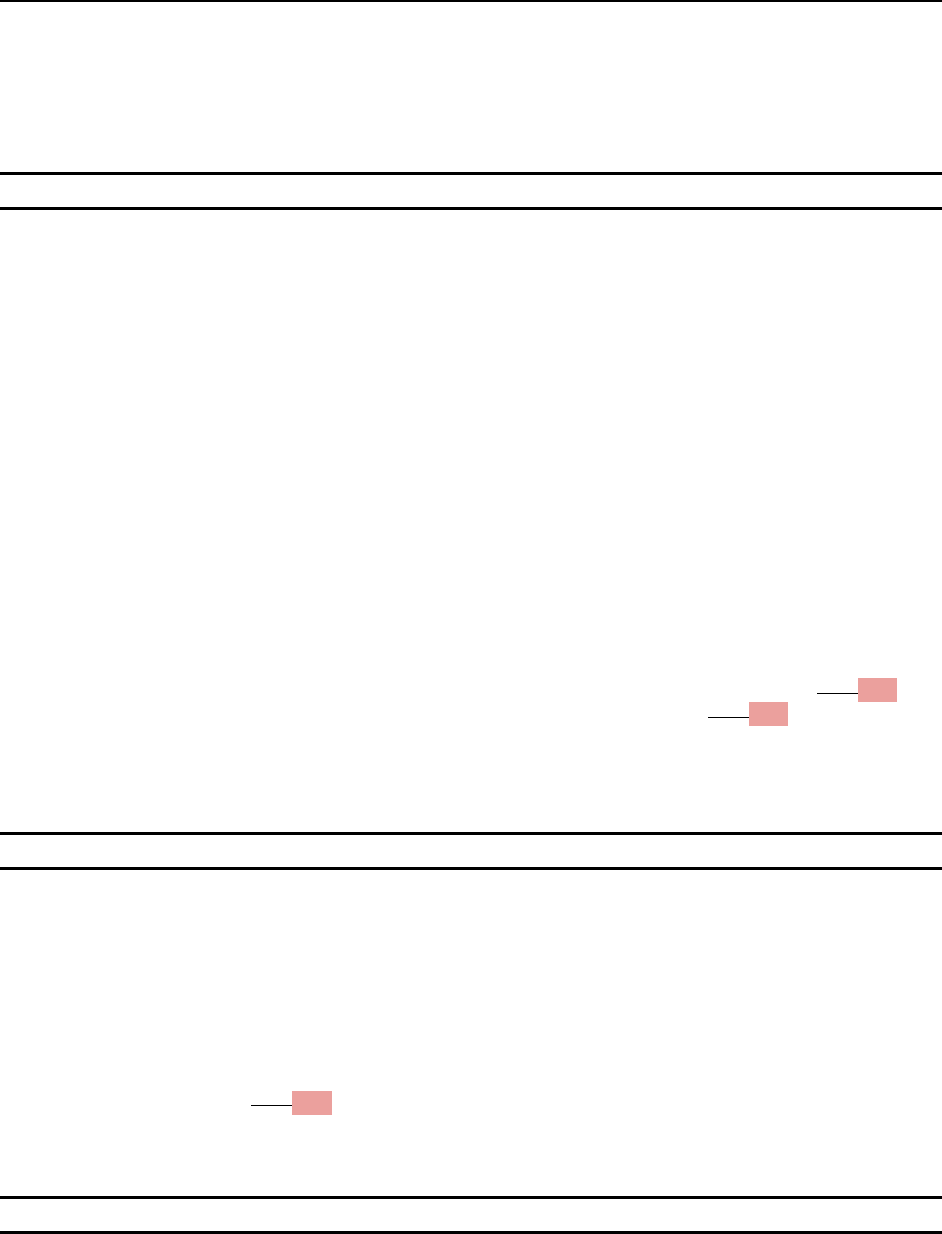
Technical
128 | April 27, 2023
References in Chapter Five (Determining the Sentence) to the “offense level” should be treated as
referring to the combined offense level after all subsequent adjustments have been made.
* * *
§3D1.2. Groups of Closely Related Counts
* * *
Commentary
* * *
Background: Ordinarily, the first step in determining the combined offense level in a case involving
multiple counts is to identify those counts that are sufficiently related to be placed in the same Group
of Closely Related Counts (“Group”). This section specifies four situations in which counts are to be
grouped together. Although it appears last for conceptual reasons, subsection (d) probably will be used
most frequently.
* * *
Even if counts involve a single victim, the decision as to whether to group them together may not
always be clear cut. For example, how contemporaneous must two assaults on the same victim be in
order to warrant grouping together as constituting a single transaction or occurrence? Existing case
law may provide some guidance as to what constitutes distinct offenses, but such decisions often turn
on the technical language of the statute and cannot be controlling. In interpreting this Partpart and
resolving ambiguities, the court should look to the underlying policy of this Partpart as stated in the
Introductory Commentary.
* * *
§3D1.3. Offense Level Applicable to Each Group of Closely Related Counts
* * *
Commentary
* * *
Background: This section provides rules for determining the offense level associated with each Group
of Closely Related Counts. Summary examples of the application of these rules are provided at the end
of the Commentary to this Partpart.
* * *
§3D1.4. Determining the Combined Offense Level
* * *

Technical
April 27, 2023 | 129
Commentary
* * *
Background: When Groups are of roughly comparable seriousness, each Group will represent one
Unit. When the most serious Group carries an offense level substantially higher than that applicable
to the other Groups, however, counting the lesser Groups fully for purposes of the table could add
excessive punishment, possibly even more than those offenses would carry if prosecuted separately.
To avoid this anomalous result and produce declining marginal punishment, Groups 9 or more levels
less serious than the most serious Group should not be counted for purposes of the table, and that
Groups 5 to 8 levels less serious should be treated as equal to one-half of a Group. Thus, if the most
serious Group is at offense level 15 and if two other Groups are at level 10, there would be a total of
two Units for purposes of the table (one plus one-half plus one-half) and the combined offense level
would be 17. Inasmuch as the maximum increase provided in the guideline is 5 levels, departure would
be warranted in the unusual case where the additional offenses resulted in a total of significantly more
than 5 Units.
In unusual circumstances, the approach adopted in this section could produce adjustments for
the additional counts that are inadequate or excessive. If there are several groups and the most serious
offense is considerably more serious than all of the others, there will be no increase in the offense level
resulting from the additional counts. Ordinarily, the court will have latitude to impose added
punishment by sentencing toward the upper end of the range authorized for the most serious offense.
Situations in which there will be inadequate scope for ensuring appropriate additional punishment for
the additional crimes are likely to be unusual and can be handled by departure from the guidelines.
Conversely, it is possible that if there are several minor offenses that are not grouped together,
application of the rules in this Partpart could result in an excessive increase in the sentence range.
Again, such situations should be infrequent and can be handled through departure. An alternative
method for ensuring more precise adjustments would have been to determine the appropriate offense
level adjustment through a more complicated mathematical formula; that approach was not adopted
because of its complexity.
* * *
§4A1.3. Departures Based on Inadequacy of Criminal History Category (Policy
Statement)
* * *
Commentary
Application Notes:
* * *
2. Upward Departures.—
* * *
(C) Upward Departures Based on Tribal Court Convictions.—In determining whether,
or to what extent, an upward departure based on a tribal court conviction is appropriate,
the court shall consider the factors set forth in §4A1.3(a) above and, in addition, may
consider relevant factors such as the following:
* * *
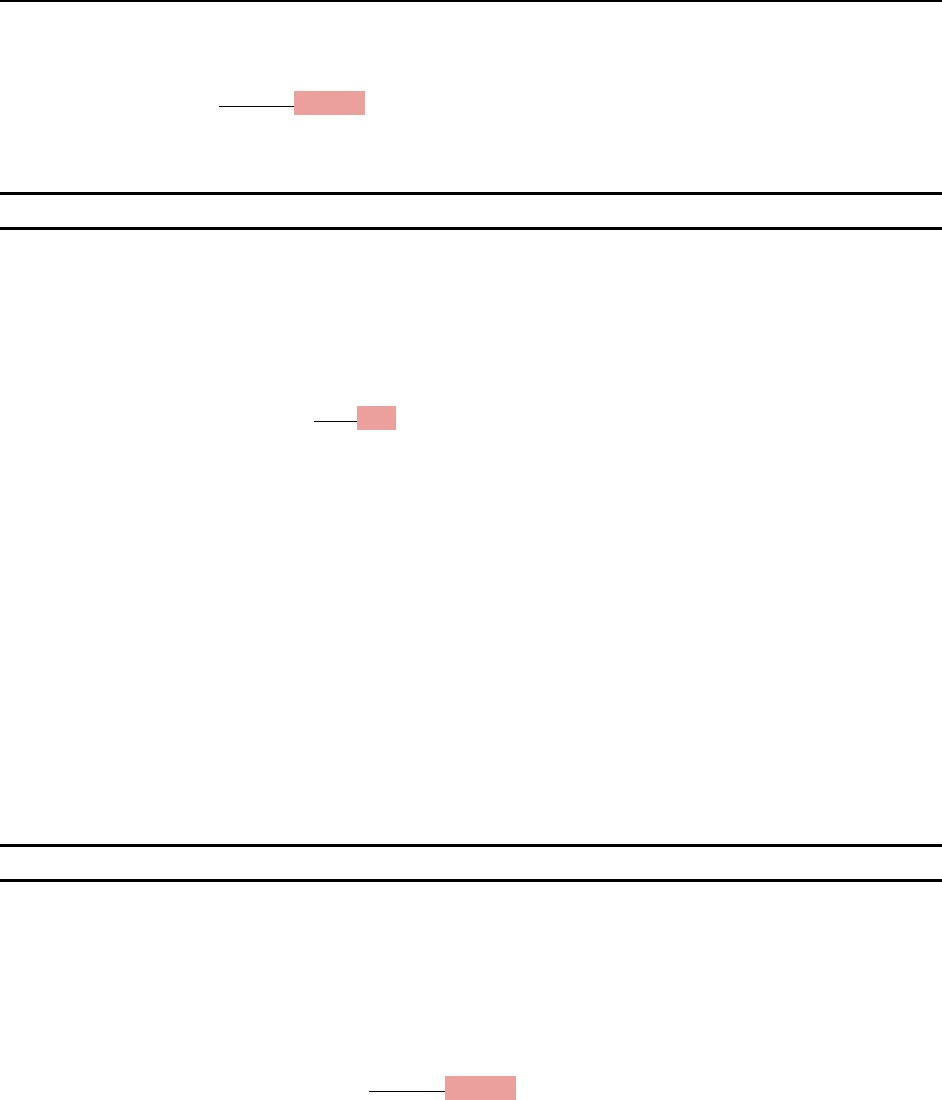
Technical
130 | April 27, 2023
(v) The tribal court conviction is not based on the same conduct that formed the basis for
a conviction from another jurisdiction that receives criminal history points pursuant
to this Chapterchapter.
* * *
§4B1.1. Career Offender
* * *
Commentary
* * *
Background: Section 994(h) of Titletitle 28, United States Code, mandates that the Commission
assure that certain “career” offenders receive a sentence of imprisonment “at or near the maximum
term authorized.” Section 4B1.1 implements this directive, with the definition of a career offender
tracking in large part the criteria set forth in 28 U.S.C. § 994(h). However, in accord with its general
guideline promulgation authority under 28 U.S.C. § 994(a)–(f), and its amendment authority under
28 U.S.C. § 994(o) and (p), the Commission has modified this definition in several respects to focus
more precisely on the class of recidivist offenders for whom a lengthy term of imprisonment is
appropriate and to avoid “unwarranted sentencing disparities among defendants with similar records
who have been found guilty of similar criminal conduct . . . .” 28 U.S.C. § 991(b)(1)(B). The
Commission’s refinement of this definition over time is consistent with Congress’s choice of a directive
to the Commission rather than a mandatory minimum sentencing statute (“The [Senate Judiciary]
Committee believes that such a directive to the Commission will be more effective; the guidelines
development process can assure consistent and rational implementation for the Committee’s view that
substantial prison terms should be imposed on repeat violent offenders and repeat drug traffickers.”
S. Rep. No. 225, 98th Cong., 1st Sess. 175 (1983)).
* * *
§5C1.1. Imposition of a Term of Imprisonment
* * *
Commentary
Application Notes:
1. Subsection (a) provides that a sentence conforms with the guidelines for imprisonment if it is
within the minimum and maximum terms of the applicable guideline range specified in the
Sentencing Table in Part A of this Chapterchapter. For example, if the defendant has an Offense
Level of 20 and a Criminal History Category of I, the applicable guideline range is 33–41 months
of imprisonment. Therefore, a sentence of imprisonment of at least thirty-three months, but not
more than forty-one months, is within the applicable guideline range.
* * *

Technical
April 27, 2023 | 131
§5E1.1. Restitution
* * *
Commentary
Application Note:
1. The court shall not order community restitution under subsection (d) if it appears likely that
such an award would interfere with a forfeiture under Chapterchapter 46 or 96 of Titletitle 18,
United States Code, or under the Controlled Substances Act (21 U.S.C. § 801 et seq.).
See 18 U.S.C. § 3663(c)(4).
Furthermore, a penalty assessment under 18 U.S.C. § 3013 or a fine under
Subchaptersubchapter C of Chapterchapter 227 of Titletitle 18, United States Code, shall take
precedence over an order of community restitution under subsection (d). See 18 U.S.C.
§ 3663(c)(5).
Background: Section 3553(a)(7) of Titletitle 18, United States Code, requires the court, “in
determining the particular sentence to be imposed,” to consider “the need to provide restitution to any
victims of the offense.” Orders of restitution are authorized under 18 U.S.C. §§ 1593, 2248, 2259, 2264,
2327, 3663, and 3663A, and 21 U.S.C. § 853(q). For offenses for which an order of restitution is not
authorized, restitution may be imposed as a condition of probation or supervised release.
* * *
§5E1.3. Special Assessments
* * *
Commentary
* * *
Background: Section 3013 of Titletitle 18, United States Code, added by Thethe Victims of Crimes
Act of 1984, Pub. L. No. 98–473, Title II, Chap. XIV, requires courts to impose special assessments on
convicted defendants for the purpose of funding the Crime Victims Fund established by the same
legislation.
* * *
§5E1.4. Forfeiture
* * *
Commentary
Background: Forfeiture provisions exist in various statutes. For example, 18 U.S.C. § 3554 requires
the court imposing a sentence under 18 U.S.C. § 1962 (proscribing the use of the proceeds of
racketeering activities in the operation of an enterprise engaged in interstate commerce) or
Titlestitles II and III of the Comprehensive Drug Abuse Prevention and Control Act of 1970

Technical
132 | April 27, 2023
(proscribing the manufacture and distribution of controlled substances) to order the forfeiture of
property in accordance with 18 U.S.C. § 1963 and 21 U.S.C. § 853, respectively. Those provisions
require the automatic forfeiture of certain property upon conviction of their respective underlying
offenses.
* * *
§5G1.3. Imposition of a Sentence on a Defendant Subject to an Undischarged Term
of Imprisonment or Anticipated State Term of Imprisonment
* * *
Commentary
* * *
Background: Federal courts generally “have discretion to select whether the sentences they impose
will run concurrently or consecutively with respect to other sentences that they impose, or that have
been imposed in other proceedings, including state proceedings.” See Setser v. United States, 132 S. Ct.
1463, 1468566 U.S. 231, 236 (2012); 18 U.S.C. § 3584(a). Federal courts also generally have discretion
to order that the sentences they impose will run concurrently with or consecutively to other state
sentences that are anticipated but not yet imposed. See Setser, 132 S. Ct. at 1468566 U.S. at 236.
Exercise of that discretion, however, is predicated on the court’s consideration of the factors listed in
18 U.S.C. § 3553(a), including any applicable guidelines or policy statements issued by the Sentencing
Commission.
* * *
PART H ― SPECIFIC OFFENDER CHARACTERISTICS
Introductory Commentary
This Partpart addresses the relevance of certain specific offender characteristics in sentencing.
The Sentencing Reform Act (the “Act”) contains several provisions regarding specific offender
characteristics:
* * *
Accordingly, the purpose of this Partpart is to provide sentencing courts with a framework for
addressing specific offender characteristics in a reasonably consistent manner. Using such a
framework in a uniform manner will help “secure nationwide consistency,” see Gall v. United States,
552 U.S. 38, 49 (2007), “avoid unwarranted sentencing disparities,” see 28 U.S.C. § 991(b)(1)(B),
18 U.S.C. § 3553(a)(6), “provide certainty and fairness,” see 28 U.S.C. § 991(b)(1)(B), and “promote
respect for the law,” see 18 U.S.C. § 3553(a)(2)(A).
This Partpart allocates specific offender characteristics into three general categories.
* * *

Technical
April 27, 2023 | 133
CHAPTER SIX
SENTENCING PROCEDURES,
PLEA AGREEMENTS,
AND CRIME VICTIMS’ RIGHTS
* * *
PART A ― SENTENCING PROCEDURES
Introductory Commentary
This Partpart addresses sentencing procedures that are applicable in all cases, including those
in which guilty or nolo contendere pleas are entered with or without a plea agreement between the
parties, and convictions based upon judicial findings or verdicts. It sets forth the procedures for
establishing the facts upon which the sentence will be based. Reliable fact-finding is essential to
procedural due process and to the accuracy and uniformity of sentencing.
* * *
CHAPTER SEVEN
VIOLATIONS OF PROBATION
AND SUPERVISED RELEASE
PART A ― INTRODUCTION TO CHAPTER SEVEN
* * *
3. Resolution of Major Issues
(b) Choice Between Theories.
* * *
Further, the sanctions available to the courts upon revocation are, in many cases, more
significantly restrained by statute. Specifically, the term of imprisonment that may be
imposed upon revocation of supervised release is limited by statute to not more than five
years for persons convicted of Class A felonies, except for certain Titletitle 21 drug offenses;
not more than three years for Class B felonies; not more than two years for Class C or D
felonies; and not more than one year for Class E felonies. 18 U.S.C. § 3583(e)(3).
* * *

Technical
134 | April 27, 2023
§8A1.2. Application Instructions ― Organizations
* * *
Commentary
Application Notes:
3. The following are definitions of terms used frequently in this chapter:
(G) “Prior criminalCriminal adjudication” means conviction by trial, plea of guilty
(including an Alford plea), or plea of nolo contendere.
* * *
§8B1.1. Restitution ― Organizations
* * *
Commentary
Background: Section 3553(a)(7) of Titletitle 18, United States Code, requires the court, “in
determining the particular sentence to be imposed,” to consider “the need to provide restitution to any
victims of the offense.” Orders of restitution are authorized under 18 U.S.C. §§ 2248, 2259, 2264, 2327,
3663, and 3663A. For offenses for which an order of restitution is not authorized, restitution may be
imposed as a condition of probation.
* * *
§8B2.1. Effective Compliance and Ethics Program
* * *
Commentary
Application Notes:
1. Definitions.—For purposes of this guideline:
* * *
“Governing authority” means the (A) the Board of Directors; or (B) if the organization does not
have a Board of Directors, the highest-level governing body of the organization.
* * *
§8C2.5. Culpability Score
* * *

Technical
April 27, 2023 | 135
Commentary
Application Notes:
1. Definitions.—For purposes of this guideline, “condoned”, “prior criminal adjudication”,
“similar misconduct”, “substantial authority personnel”, and “willfully ignorant of the
offense” have the meaning given those terms in Application Note 3 of the Commentary to §8A1.2
(Application Instructions ― Organizations).
* * *
§8C3.2. Payment of the Fine ― Organizations
* * *
Commentary
Application Note:
1. When the court permits other than immediate payment, the period provided for payment shall
in no event exceed five yearsshall be the shortest time in which full payment can reasonably be
made. 18 U.S.C. § 3572(d).
* * *
§8C3.3. Reduction of Fine Based on Inability to Pay
(a) The court shall reduce the fine below that otherwise required by §8C1.1
(Determining the Fine ― Criminal Purpose Organizations), or §8C2.7
(Guideline Fine Range ― Organizations) and §8C2.9 (Disgorgement), to the
extent that imposition of such fine would impair its abilitythe ability of the
organization to make restitution to victims.
* * *
§8E1.1. Special Assessments ― Organizations
* * *
Commentary
* * *
Background: Section 3013 of Titletitle 18, United States Code, added by The Victims of Crimes Act
of 1984, Pub. L. No. 98-473, Title II, Chap. XIV, requires courts to impose special assessments on
convicted defendants for the purpose of funding the Crime Victims Fund established by the same
legislation.
* * *

Technical
136 | April 27, 2023
APPENDIX A
STATUTORY INDEX
* * *
18 U.S.C. § 875(a) 2A4.2, 2B3.2
18 U.S.C. § 875(b) 2B3.2
18 U.S.C. § 875(c) 2A6.1
18 U.S.C. § 875(d) 2B3.2, 2B3.3
18 U.S.C. § 876 2A4.2, 2A6.1, 2B3.2, 2B3.3
18 U.S.C. § 876(a) 2A4.2, 2B3.2
18 U.S.C. § 876(b) 2B3.2
18 U.S.C. § 876(c) 2A6.1
18 U.S.C. § 876(d) 2B3.2, 2B3.3
18 U.S.C. § 877 2A4.2, 2A6.1, 2B3.2, 2B3.3
* * *
22 U.S.C. § 8512 2M5.1, 2M5.2, 2M5.3
25 U.S.C. § 450d§ 5306 2B1.1
26 U.S.C. § 5148(1) 2T2.1
* * *
33 U.S.C. § 1227(b) 2J1.1, 2J1.5
33 U.S.C. § 1232(b)(2) 2A2.4
* * *
46 U.S.C. § 3718(b) 2Q1.2
46 U.S.C. § 70035(b) 2J1.1, 2J1.5
46 U.S.C. § 70036(b) 2A2.4
46 U.S.C. App. § 1707a(f)(2) 2B1.1
* * *

Technical
April 27, 2023 | 137
50 U.S.C. § 3121 2M3.9
50 U.S.C. App. § 46250 U.S.C. § 3811 2M4.1
50 U.S.C. App. § 527(e)50 U.S.C. § 3937(e) 2X5.2
50 U.S.C. App. § 241050 U.S.C. § 4610 2M5.1
52 U.S.C. § 10307(c) 2H2.1
* * *
